
- Travel Guide
- Best Time to Visit

Best Time to Visit Kruger National Park

When is the Best Time to Visit Kruger Park?
The Kruger Park is an all year round destination , with each season bringing its own highlights. Whatever time you decide to safari in the Kruger National Park - you will not be disappointed!
Game viewing can be at its best during the dry winters months, however the wet summer season brings full waterholes , lush bushveld, many newborn wildlife and the summer migrant birds arrive. The Kruger Park has a hot, sub-tropical climate and most of the year it is hot during the day (above 25 ° C).
Summer is the rainy season in Kruger Park. The rains fill the rivers and waterholes, resulting in the bushveld looking lush . Game viewing is sometimes a bit more difficult in the summer season because the vegetation is dense, making it bit harder to locate and observe wildlife. Towards the end of November and early December, Kruger National Park is filled with newborns and spotting wildlife with their young is a memorable Kruger Park safari experience.
Birding is excellent during this time as the summer migrant birds arrive. If you are planning on visiting the Kruger Park during summer we recommend you travel in an air-conditioned vehicle and stay in air-conditioned accommodation.
It can get very hot during the day with up to a high of 30 degrees celsius . Camping can be a bit unpleasant, but if you are a die-hard camping enthusiast the heat and rain should not deter you.
Although some visitors might prefer the lush vegetation of the summer months, the best time for observing African wildlife in Kruger National Park is the dry winter season. The bushveld is more open allowing for better visibility. The grass is low, the bushes and trees are sparsely leaved and because it is so dry - with no rain - the wildlife will migrate towards the water .
Water holes, dams and rivers become a hive of activity and you are more likely to spot wildlife in the morning and evening as they come for a drink of water. The day temperatures in winter are pleasant but it can get quite chilly during the night-time so make sure you pack something warm when going on your afternoon/night game drives.
Temperatures
November through december.
The summer months in Kruger Park are very hot and humid with either continual rains or occasional afternoon thundershowers. Many young animals are born during this time.
- November Temperature: (+/-) 16 - 32 °C
- December Temperature: (+/-) 18 - 34 °C
January to April
These are normally drier months with very hot days. Bird watchers can enjoy the array of migratory birds during this period.
- January Temperature: (+/-) 18 - 34 °C
- February Temperature: (+/-) 18 - 33 °C
- March Temperature: (+/-) 18 - 33 °C
This is Kruger Park's autumn period and the vegetation starts changing from thick lush green bush to a slightly sparser browning bush. The temperatures start cooling down at night but daytime is still warm. Scattered thunder showers can be experienced in the afternoons.
- April Temperature: (+/-) 13 - 28 °C
May to June
Cold temperatures are experienced at night and at dawn during our winter months. The vegetation becomes totally brown and trees start losing leaves. Visibility during game drives is enhanced due to sparser vegetation.
- May Temperature: (+/-) 13 - 28 °C
- June Temperature: (+/-) 9 - 26 °C
July to August
This period is very dry in the bush with very cold night temperatures and therefore chilly during the early morning and late afternoon game drives. Game viewing is generally fantastic as the visibility is good and the game is concentrated around any water source. July to October is the end of the dry season and the malaria-carrying mosquitoes are dormant.
- July Temperature: (+/-) 9 - 26 °C
- August Temperature: (+/-) 12 -28 °C
September to October
Spring is the height of the dry season with hot dry winds and colourless, sparse vegetation. Because the rivers and dams are low, high concentrations of game can be viewed at these areas and game viewing in general is good. The first rains may start towards the end of October and the signs of spring and a new wet season are evident.
- September Temperature: (+/-) 12 - 28 °C
- October Temperature: (+/-) 16 - 32 °C
Read questions and answers in our Help on Safari Planning guide
Kruger Park Safari Packages

Safari Lodges in Kruger National Park

- Customer Support
- Tel: +27 21 424 1037
- Fax: +27 21 424 1036
- Contact by Mail
- Business Hours
- Mon - Fri. 08:00 - 17:00
- Saturday. 08:00 - 12:00
- Reservations and Booking
- Booking Conditions
- Visa and Passport
- About Siyabona Africa (Pty) Ltd
- Game Reserves
- Balule Game Reserve
- Manyeleti Game Reserve
- Sabi Sand Game Reserve
- Thornybush Game Reserve
- Timbavati Game Reserve
- Near Kruger National Park
- Birding in Kruger Park
- Kruger National Park
- Most Popular Pages
- Kruger Park Maps
- Best Time to Visit Kruger
- Getting to Kruger
- Accommodation at a Glance
- Camp Gates Map
- Kruger Park Gate Times
- Kruger Travel Help
- Conservation Fees
- Kruger Park News
- Reference Guide
- Africa Mammal Guide
- Africa Bird Guide
- African Flowers Guide
- Africa Grass Guide
- African Tree Guide
- African Reptiles Guide
- Kruger Park Culture
- Kruger Park History
TOP DESTINATIONS
- Kruger Park
- Okavango Delta
- Serengeti National Park
- Victoria Falls
TOP COUNTRIES
- South Africa
TRAVEL DEALS
View All Travel Deals
SOUTHERN AFRICA
East africa, indian ocean islands, top experiences.
- Beach Holidays
- Family Safaris
- Honeymoon Safaris
- Desert Safaris
- Luxury Rail Safaris
- Multi-Generational Safaris
- Positive Impact Safaris
- Photographic Safaris
Walking Safaris
WILDLIFE SAFARI
Big Five Safaris
Birding Safaris
- Gorilla Trekking Safaris
- Migration Safaris
- Mobile Camping Safaris
- Horseback Safaris
FEATURED EXPERIENCES
Comfort levels, property types.
- Tented Camps
- Boutique Hotels
Featured Safari Collections
- Newmark Hotels
- Time & Tide
- Great Plains
- The Safari Collection
GET TO KNOW US
- Meet The Team
- Pricing Explained
- Traveller Reviews
- Traveller Stories
- Why Book With Us?
- HerdTracker
- Safari Cost Calculator
- South Africa In 360
- Trusted Safari Partners
- Newsletter Sign Up
What are you looking for?
- Safaris & Tours
- Destinations
- Experiences
- Accommodations
- Why book with us?
Hello traveller!
It's in Cape Town now.
We're sorry. Our safari planners aren't available now. Our office hours are 08:00 - 19:00 (GMT+2).
Call us to speak to an experienced safari planner.
Alternatively, we recommend...
Schedule a phone or Zoom call with one of our safari planners
Complete our travel enquiry form to connect with a safari planner
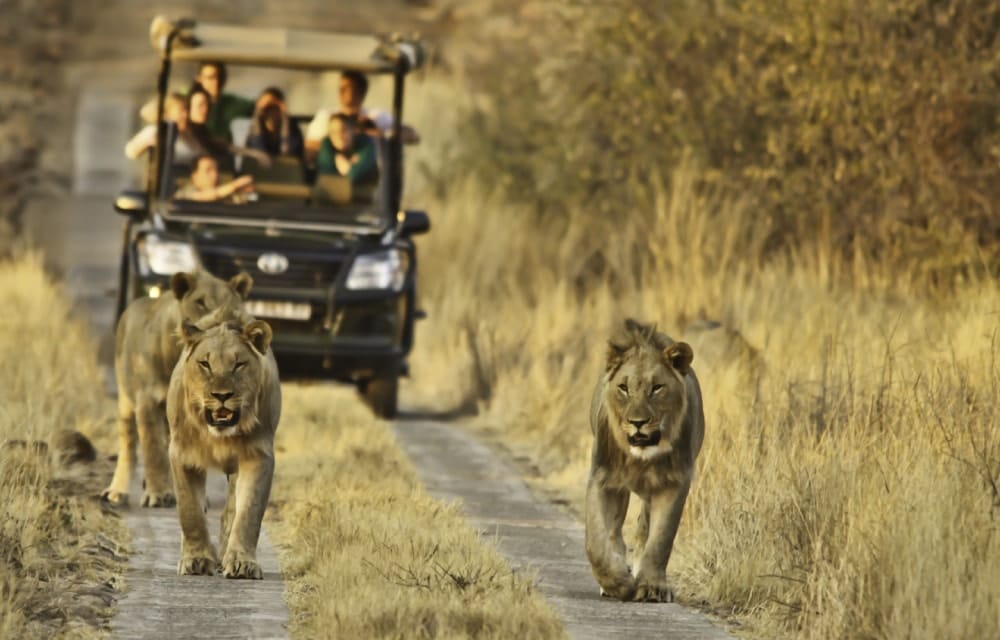
- Kruger National Park Safari
The ultimate guide to your next Kruger National Park Safari
Get to know kruger national park.

By Adelle Bell
Safari Travel Planner
Extending over a similar area to Wales, Kruger National Park is a 20,000km2 (7,722 square mile) national park that supports more than 160 mammal and 500 bird species, including substantial populations of all the Big Five .
The park is an important stronghold for several of Africa’s most iconic large mammals. It supports more than half the world’s remaining white rhinos, along with substantial populations of buffaloes, elephants, black rhinos, leopards, cheetahs, African wild dogs, giraffes, and one of the few viable lion populations in southern Africa.
Birding in Kruger National Park is also excellent, particularly in the summer. Other wildlife you can see at Kruger National Park includes baboons, warthogs, hyenas, many small predators, and around a dozen antelope species.
Kruger National Park Video
Kruger national park.
How it Works
View our recommended safaris for inspiration and get ready to plan your dream safari
Contact us or fill out an enquiry form and one of our travel experts will help you tailor make your perfect safari
Enjoy an authentic African experience.
Why Kruger National Park?
- One of Africa’s largest national parks
- Big Five viewing , especially rhinos
- More than 517 bird species recorded
- Drive yourself around the public sector or treat yourself to a stay in a private concession.
Where to go in Kruger National Park
- Kapama Game Reserve
- Kruger National Park Concessions
- Makalali Private Game Reserve
Balule Nature Reserve on the western border of the Kruger National park encompasses 400km2 (154 square miles) of unspoiled bushveld. This private nature reserve shares unfenced borders with the Kruger and neighboring private reserves allowing animals to roam freely.
One of the largest rivers in the Kruger National Park, the Olifants River, flows through the Balule reserve, and its waters and riverine forests attract high densities of mammals, reptiles, and birdlife. This means that all the wildlife you see on a Kruger safari, including the famous Big Five, can also be experienced in the Balule Nature Reserve.

Balule boasts a wide range of small intimate lodges and camps that cater to those looking for an affordable private getaway, a family-friendly option , or the ultimate in privacy, comfort, and luxury. All-inclusive stays, as well as self-catering options, are available throughout the Balule reserve.
Highlights of Balule
- Daily game drives and walking safaris with experienced rangers are the best way to spot the Big Five and learn first-hand about the local ecosystem. In Balule, the rangers can track animals off-road (something not allowed in the Kruger) to provide the best sightings.
- There is hardly a more tranquil aerial experience than floating over the African savannah in a hot-air balloon – just one of the activities on offer in the Balule area. If you have the nerves, you can take an adrenaline-filled flight in a microlight aircraft or go white-water rafting. You can book a boat cruise down the Olifants River for a more relaxed afternoon.
- Several lodges offer day trips to the nearby Blyde River Canyon, the third-largest canyon on the planet. It’s a break from the bush life in the Kruger and certainly a bucket list destination.
Practical Information for Balule
- By car, the Balule Nature Reserve is approximately six hours from Johannesburg. Daily international and domestic flights call in at OR Tambo International Airport. You can catch a connecting flight to a local airport (Phalaborwa, Hoedspruit, Nelspruit, or Skukuza) near Kruger. Transfers to and from your lodge (about 45 minutes) can be arranged.
- Temperatures are high during the day, even in winter, so bring sunscreen, a hat, and sunglasses. Light, long-sleeved clothing offers protection against the sun and mosquito bites. Pack warm clothing, too, as evenings can get chilly.
- Wear neutral-colored clothing like brown, khaki, and beige, as bright colors make it easier for animals to spot you. In turn, dark colors like navy and black can attract insects. Balule is in an area at risk of malaria. Get advice from your doctor before you travel.
The 130km2 (50 square mile) Kapama Private Game Reserve lies just west of the Kruger National Park and a mere 10 minutes from the town of Hoedspruit. It is not only home to the Big Five , but the sprawling savannah grasslands and riverine forests straddling the Klaserie River in the east of the reserve see more than 40 species of mammals and over 300 bird species.
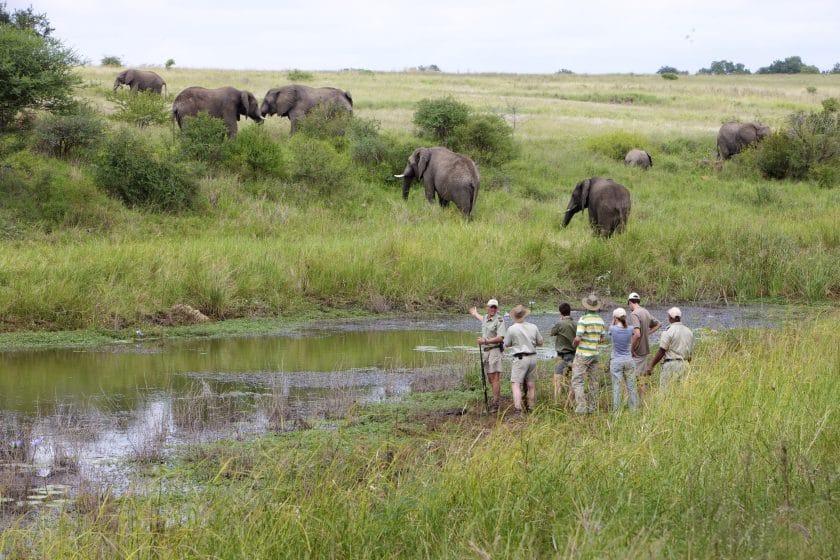
Kapama has four luxury lodges, each with its flair. The bespoke villas overlooking the Klaserie River at Karula are suited to the discerning traveler looking for the ultimate in privacy and comfort.
The River Lodge , with its contemporary design, is a more social space perfectly suited to young couples and groups of friends.
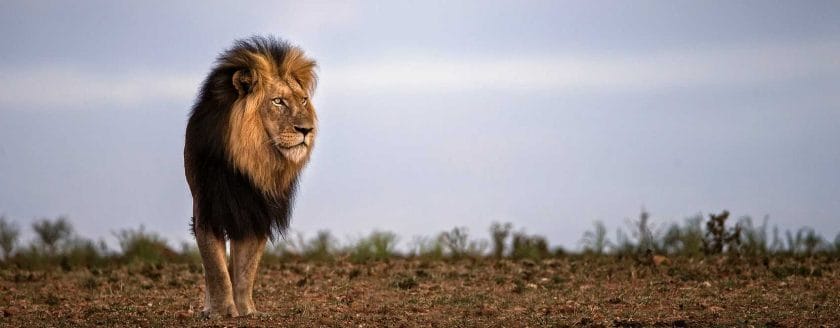
Highlights of Kapama Game Reserve
- Ditch the big vehicles and strap on some walking shoes for a guided walking safari . Skilled rangers will show you wildlife and share traditional knowledge about tracking, medicinal plants, and birdlife .
- Kapama offers a 2-day photography workshop led by a leading African wildlife photographer so you can hone your skills before heading out on game drives aimed explicitly at photography .
- The Romantic Sleepout lets couples experience a night under the stars on a private platform in the African bush. You even get a private chef that will prepare a five-course dinner!
Practical Information for Kapama Game Reserve
- The nearest international airport is OR Tambo International in Johannesburg, about 6 hours travel time from the reserve by car. OR Tambo is serviced by domestic flights from all over South Africa, so you can also fly to Hoedspruit, the nearest local airport to Kapama. From here, it’s a short transfer by car to the reserve.
- Kapama offers the discerning traveler the option of flying directly to the reserve from OR Tambo and Cape Town International airports in a privately owned aircraft.
- Bring warm clothing (it gets cold at night), a hat, sunglasses, and sunscreen to protect against the heat during the day. Wear muted colors like khaki, brown, or green to avoid being easily spotted by animals. Bright colors can attract insects.
- Kapama, like all of the Kruger, lies within a malaria region.
The Klaserie Private Nature Reserve covers a whopping 600km2 (232 square miles) of wilderness on either side of the Klaserie Rivier just west of the Kruger National Park. You’ll come face to face with the Big Five – lions, leopards, elephants, buffalo, and rhinos – as well as some of Africa’s less spotted species, like wild dogs and cheetahs, on your Klaserie safari adventure.
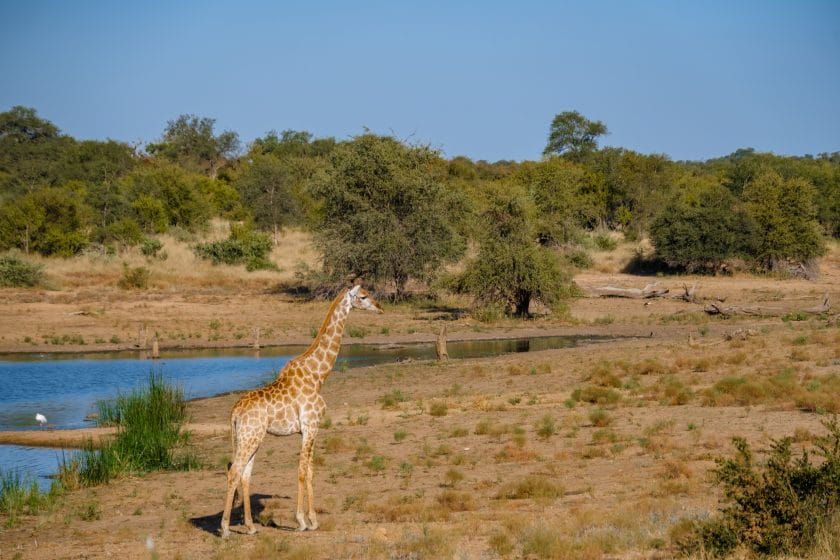
Klaserie’s range of safari camps and lodges cater to families, groups of friends, honeymooners, and discerning travelers looking for exclusive luxury. Families should consider Makumu lodge, where they can book an entire lodge without age restrictions for the youngsters. At the same time, the Klaserie Drift, Senala, and Klaserie Camps offer fully catered or self-catering perfect for couples.
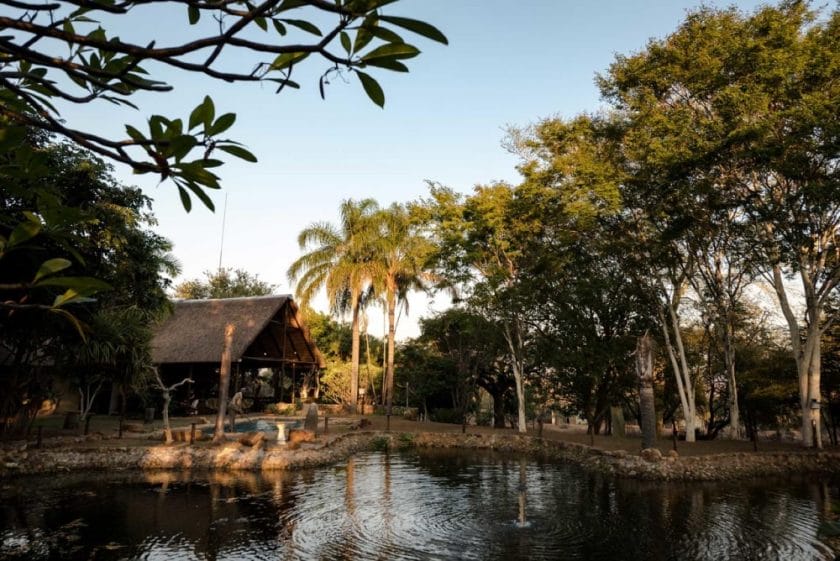
For top-tier luxury, look no further than the intimate riverside suites at Klaserie Sands River Camp or the classy exclusive suites at Baobab Ridge.
Highlights of Klaserie
- Some lodges host bespoke bush dinners and traditional barbecues at particularly stunning outdoor spots in the reserve. You can even arrange to camp at certain water holes for a truly immersive night in the African bush.
- A walking safari with an experienced ranger is one of the most exhilarating experiences in the African bush. You’ll see animals from a unique perspective and be fully immersed in the sights and sounds of the environment.
- Twice-daily game drives in open 4×4 vehicles within the private reserves give you the highest probability of seeing animals. With experienced guides who can drive off-road (unlike in public areas of the Kruger), you’ll tick off Big Five sightings in no time. Some lodges also offer night drives.
Practical Information for Klaserie
- The Klaserie Private Nature Reserve is roughly a six-hour drive east of Johannesburg. Daily international and domestic flights call in at OR Tambo International Airport, where you can catch a connecting flight to a local airport near Kruger. The closest local airport is in Hoedspruit; from there, it’s a 45-minute transfer to the reserve.
- You don’t need special safari clothes, but neutral colors like beige, brown, green, and khaki are recommended. It makes it harder for animals to spot you and be scared off, and brighter colors attract insects.
- Prepare for scorching days and bring a hat, sunglasses, and sunscreen. Depending on the season, nights and early mornings can be freezing, so pack some warm clothing too. Ask a medical practitioner about malaria medication before you leave, as this part of South Africa carries a risk. A course of prophylaxis is recommended.
The Kruger National Park is world-renowned for its spectacular wildlife. It’s the largest nature reserve in South Africa and, indeed, one of the largest on the continent.
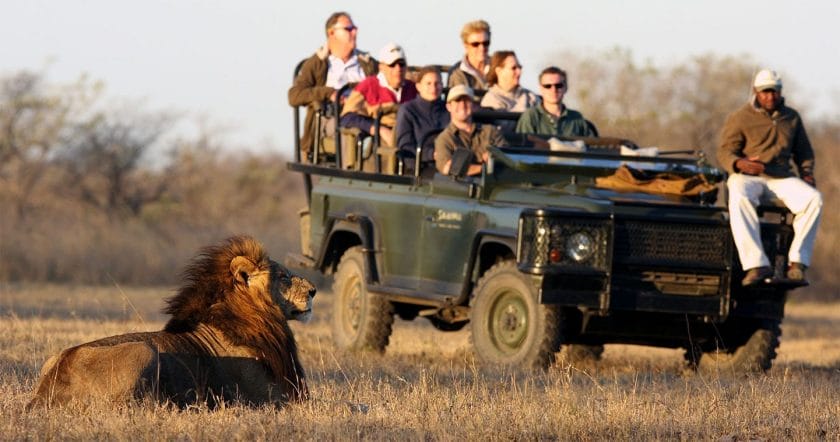
At 360km (224mi) long and 65km (40mi) wide, the surface area surpasses that of the nearby country of Swaziland! Despite its size, the density of wild animals found here is one of the highest on the planet, making for superb viewing opportunities no matter where you are in the park.
The southern and central regions of the Kruger are most frequented by visitors, and for a good reason: the game viewing is most reliable on a safari here. It’s your best bet for lion and leopard sightings, especially common along the Sabie River between Lower Sabie and Skukuza.
In central Kruger, the open grasslands are stocked with plenty of elephants, while grass-feeders like wildebeest and buffalo attract predators like lions, cheetahs, and leopards.
Finally, in the far north, your reward is not only solitude from the crowds of the south but also an area of outstanding natural beauty as the landscape transforms from subtropical to tropical.
Large concentrations of baobab trees are particularly beautiful. Unfortunately, big game sightings are less frequent in this part of the Kruger, although birding safaris , especially in the summertime, are pretty spectacular.
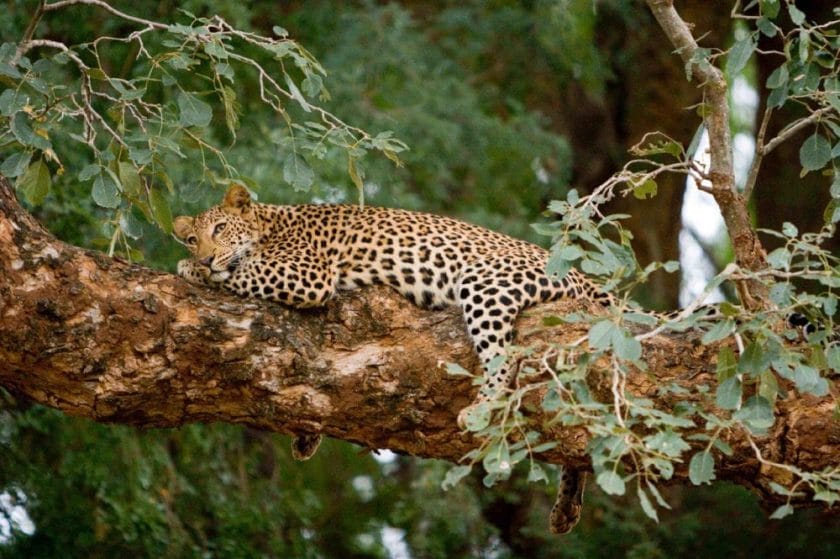
Kruger caters to all, whether you are a solo traveler, a couple on a romantic getaway, or a family looking for the quintessential safari adventure. Several accommodation options are scattered across the park, ranging from campsites to family cottages, safari tents, and exclusive guesthouses.
The main camps are well stocked with modern amenities, and most have shops, restaurants, pools, and fuel stations.
If you’re after total exclusivity or the ideal honeymoon getaway, head for one of the private concession areas within Kruger. Each concession is home to several world-class luxury lodges that provide five-star accommodation and cuisine, personal game rangers, and tailor-made experiences.
Highlights of Kruger National Park Concessions
- The Kruger is one of the few places where you can see the world’s largest land mammals mere meters from your vehicle. The park’s vast network of good roads provides excellent self-drive safari routes.
- The park has a superb avian population (over 500 species!), and keen birders can cross off dozens of sightings during a visit. Keep an eye out for the Big 6: the martial eagle, the ground hornbill, the saddle-billed stork, the kori bustard, the lappet-faced vulture, and the unique Pel’s fishing owl.
- Many guided walking trails , bookable at all main camps, offer a truly immersive bush experience. Hikers are accompanied by experienced armed game rangers who track elephants, rhinos, and lions on foot. Hikes vary from a few hours to overnight excursions with catered dinners and luxury bush tents.
Practical Information for Kruger National Park Concessions
- The Kruger National Park is approximately a five-hour drive from the nearest international airport, OR Tambo, in Johannesburg. Various car rental companies have counters at the airport.
- Alternatively, you can fly to a local airport such as Phalaborwa, Hoedspruit, Nelspruit, or Skukuza and rent a vehicle there. Private lodges offer shuttle services to and from all airports.
- Book well in advance for popular public camps like Skukuza and Letaba during peak holiday seasons in December and July. Avoid the holiday seasons altogether if you prefer fewer fellow visitors.
- Take precautions for sweltering days and cold nights. Bring a hat, sunscreen, sunglasses for daytime temperatures (over 30°C/86°F), and warm clothing for chilly evenings.
- The Kruger is a malaria zone, and it’s advised that visitors take prophylactics. Consult your healthcare professional on a course of medication before you travel.
Makalali Private Game Reserve is located on 260km (162mi) of bushveld near the town of Hoedspruit on the western edge of the Kruger National Park.
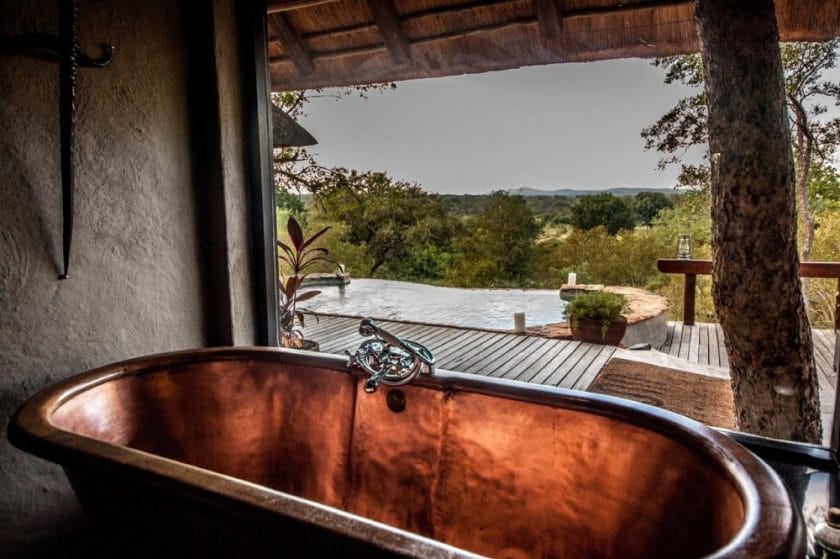
While the styling of the main lodges at Makalali features more contemporary design elements than your typical safari lodge, the wildlife experiences are as quintessentially African as elsewhere in the greater Kruger area.
It’s home to the Big Five and zebra, kudu, cheetah, and wild dog populations.
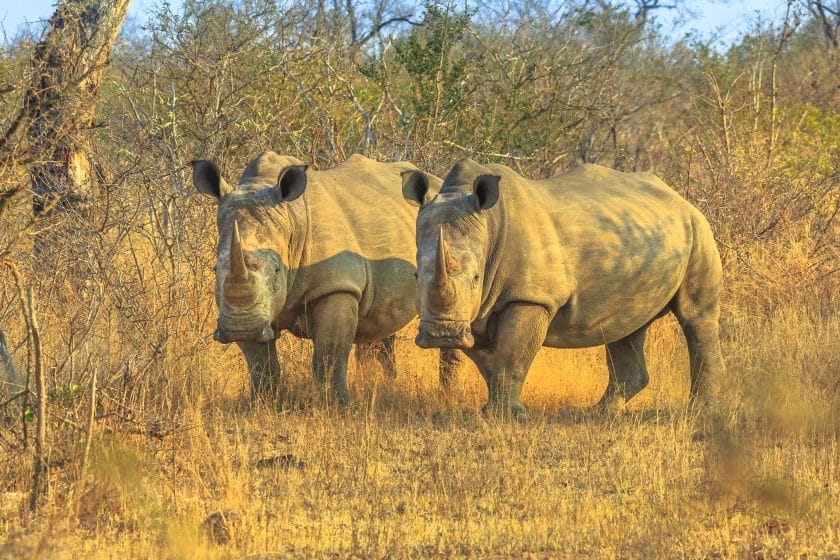
Makalali’s main lodge caters to the mid-range traveler looking for a safari experience with a touch of luxury, while the river lodge is a private 5-star affair. The river lodge also caters to families, as do the more luxurious accommodations at Garonga.
The Little Garonga Camp is an intimate and exclusive affair with only three suites, each with its own platform decks overlooking the bushveld. At the Safari Camp, the setup caters to couples with six private luxury safari tents overlooking a dry riverbed frequented by animals.
Highlights of Makalali
- Nature walks and game drives in open 4×4 vehicles, led by expert guides, are the ideal way to experience the wildlife of the African bush on a safari.
- Take to the skies in a hot-air balloon and experience the stunning African savannah from a unique perspective. The more adventurous can also enjoy flights over the reserve in a microlight aircraft.
- Golfing excursions can be arranged to the superb Hans Merensky golf course next to the Kruger National Park. Wildlife like giraffes and hippos can often be seen on the course.
- The reserve is involved in a cheetah research project, and a visit to the facility allows you to see the world’s fastest land animal up close. African wild dogs, lions, and wild cats can also be seen here.
Practical Information for Makalali
- The nearest international airport is OR Tambo International in Johannesburg. Several daily domestic flights service smaller airports, and it’s possible to fly to Hoedspruit. From here, it’s a short journey to the reserve. Alternatively, some lodges offer direct air transfers.
- Bring warm clothing as it gets cold at night and a hat, sunglasses, and sunscreen to protect against the heat in the day. Dull colors like khaki, brown, or green make you harder to spot by animals and don’t attract insects as much as bright colors.
- Consult a healthcare practitioner about preventative medication, as the Kruger is a Malaria zone.
There are just three lodges in the 23,000-hectare Manyeleti private game reserve on the western edge of Kruger National Park – which means game viewing without the crowds.
With no fences to separate Manyeleti Game Reserve from Kruger National Park and the private reserves Timbavati to the north and Sabi Sand in the south, the game can wander freely.
As you traverse Manyeleti’s 200km (124mi) of gravel roads in search of the Big Five , you’re unlikely to see many other cars – day visitors are not allowed, and each of the three lodges on the concession has just a few beds.
Sabi Sands is often lauded as the most prestigious private reserve in South Africa, perhaps due to the reserve’s longstanding conservation efforts.
The original reserve was proclaimed in 1898, and by 1949 the landowners had merged their properties (mostly ex-agricultural land) into what is now the Sabi Sands Game Reserve .
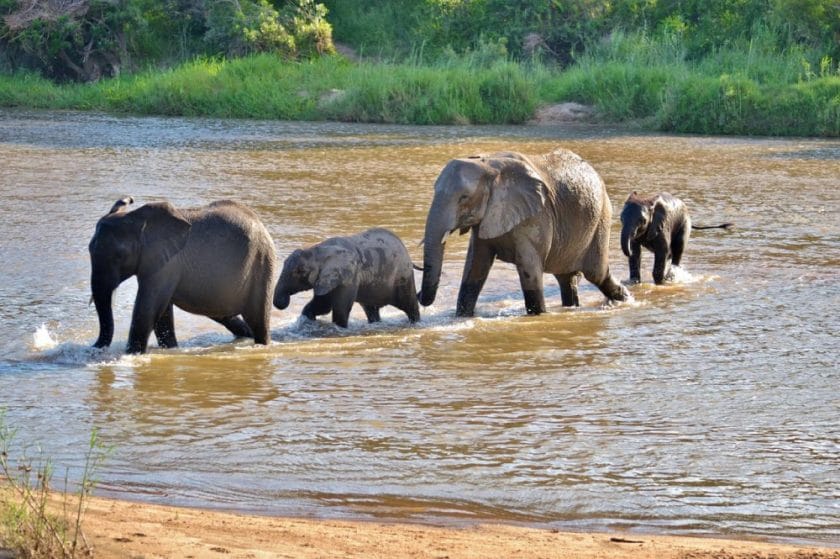
The massive 650km2 (251 square mile) private reserve shares unfenced borders on the western boundaries of the Kruger National Park, allowing animals to roam freely between the reserves.
Thanks to the re-purposing of boreholes previously used for the farms into waterholes for wildlife, Sabi Sands can offer a year-round water source not affected by seasonal changes. This means you’re never far away from spotting the Big Five and the hundreds of other species that make up the greater Kruger population at any time of the year.

Sabi Sands is all about luxury and exclusivity, so you won’t find day visitors, camping, or public picnic sites here. The reserve’s wide range of lodges and camps are styled for every taste – some are very affordable, while others offer the crème de la crème in luxury living. Whether you’re looking for an immersive bush camp, a secluded honeymoon suite, or your own exquisite private villa, Sabi Sands has it all.
Highlights of Sabi Sands
- Sabi Sands is famous for its leopard sightings and although spotting these elusive cats is never guaranteed, with expert safari guides at your disposal, your chances of a great sighting are arguably higher here than anywhere else.
- The reserve has excellent photographic opportunities and guides that understand light, angles, and composition to help you get that postcard shot. Photographic safaris are on offer at several lodges.
- Daily game drives in open 4×4’s and walking safaris by expert guides are included in your stay.
Practical Information for Sabi Sands
- By road, Sabi Sands is approximately 450km (280mi) from Johannesburg, where OR Tambo International Airport is served by daily international and domestic flights to major cities in the rest of the country. From OR Tambo, you can schedule a charter flight directly to Sabi Sands or a nearby local airport (Hoedspruit, Kruger/Mpumalanga, or Skukuza).
- Wear natural colors like khaki, brown, or green to avoid being easily spotted by animals and scaring them off. Remember to bring warm clothing as it gets cold at night and a hat, sunglasses, and sunscreen to protect against the heat in the day.
- Sabi Sands, like the rest of the Kruger, lies within a malaria region. Consult your doctor before you travel, as it is advised to take a course of prophylaxis.
The 140km2 (54 square mile) Thornybush Game Reserve is located near the town of Hoedspruit on the western border of the Kruger. The famous Big Five – lion, leopard, elephant, rhino, and buffalo – roam freely in the reserve while great numbers of plains game like giraffes, kudu, zebra, and waterbuck can also be seen.
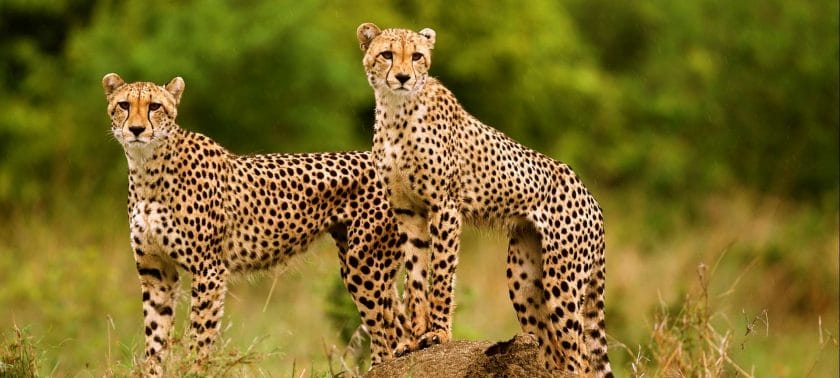
Highlights of Thornybush
- Daily game drives in open 4×4 vehicles with experienced trackers greatly enhance your game viewing experience. Unlike in the public areas of the Kruger, guides are allowed to track animals off-road or at night.
- Photographic opportunities are excellent at Thornybush. Your safari experience, including game drives and walks, can be tailored specifically to meet your photographic needs.
- Guided nature walks allow you to experience the African bush firsthand, and the rangers are keen to share local knowledge.
- With over 300 species in the reserve, birding safaris are excellent. Tailored game drives with an experienced guide will have you tick rare and unique species off your list of bird sightings in no time.
- Extensive conservation studies have been done at Thornybush on the ultra-rare Pangolin. This elusive anteater is the most trafficked animal globally and is critically endangered. While never a guarantee, your chances are good to spot one on a night drive at Thornybush.
Practical Information for Thornybush
- Thornybush is about 5 hour’s drive from Johannesburg. Several daily domestic and international flights depart from OR Tambo International airport. From OR Tambo, you can fly to a local airport (Hoedspruit, Nelspruit, Skukuza, or Phalaborwa) close to the reserve. From here, a short transfer will get you to Thornybush.
- Bring warm clothing as it gets cold at night and a hat, sunglasses, and sunscreen to protect against the heat in the day. Light long-sleeved clothing serves as good protection from the sun too.
- Thornybush is situated within a malaria region. Speak to your doctor before you travel for advice on anti-malaria medication.
Timbavati Game Reserve is home to one of nature’s most magnificent creatures, the white lion. Ancient folklore tells of a time when the local Shangaan tribe saw a bright light streaking across the sky and crashing on the African savannah.
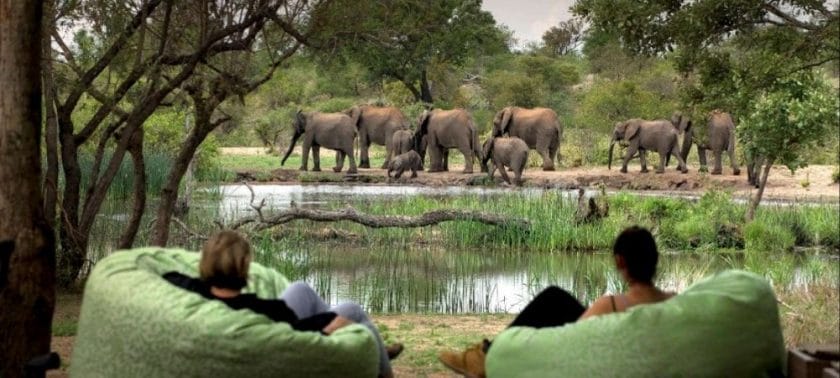
Shortly after that, the lions of Timbavati began giving birth to snow-white cubs. These unique lions have been regarded as sacred ever since.
Timbavati Game Reserve encompasses a vast 580km2 (224 square miles) of savannah on the western border of the Kruger National Park. The borders are unfenced and allow wildlife, including the Big Five , to migrate freely between the reserves.
An abundance of plains game like kudu, giraffe, wildebeest, buffalo, and waterbuck can be seen, while the endangered African wild dog is also often spotted in Timbavati.
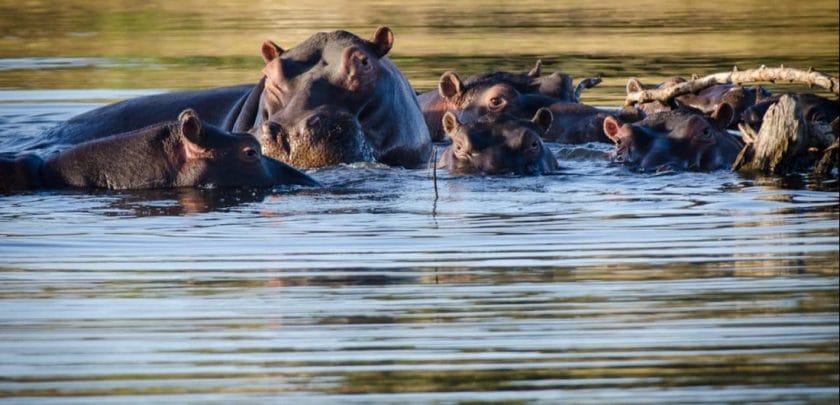
The collection of luxury lodges at Timbavati caters to the traveler looking for a touch of class. Your African safari need not be without spa treatments, private pools, and five-star cuisine!
Walkers River Camp, Jaydee, and Eagle Owl are three exclusive self-catering camps offering families or groups of friends a truly secluded safari experience while still providing all the amenities you’re used to at home.
Highlights of Timbavati
- Timbavati is home to the endangered white lion, and sighting one of these unique creatures is a once-in-a-lifetime experience.
- Photographic safaris can be tailored to your needs. Professional photographers with specialized game-drive vehicles will give advice and tips and can arrange additional gear if needed.
- Daily personalized game drives and bush walks greatly increase your chance of animal sightings. The traditional knowledge shared by the skilled rangers is invaluable too.
- Timbavati is aiding rhino conservation by micro-chipping their rhino population. Guests at the Kings Camp can participate in the tracking and darting process.
Practical Information for Timbavati
- The Timbavati reserve is roughly a six-hour drive from Johannesburg. Daily international and domestic flights call in at OR Tambo International Airport, where you can catch a connecting flight to a local airport (Hoedspruit, Nelspruit, Phalaborwa, or Skukuza) near the reserve.
- Some of the lodges in Timbavati have private runways, and you may opt to travel (approx. 1 hr 30 min) by scheduled flight directly from Johannesburg to your accommodation.
- It gets scorching in the day so bring a hat, sunglasses, and sunscreen. You’ll also need to pack warm clothing, as evenings and early mornings can be chilly.
- Malaria is a risk in this part of Africa, so it’s advised to speak to your doctor about a course of prophylaxis before you travel.
Travel with Confidence
With over 20 years of experience, our team will help you tailor your itinerary to your perfect adventure., 24/7 support, personalized, popular kruger national park safaris, these recommended tours for kruger national park can be tailor-made to match your budget..
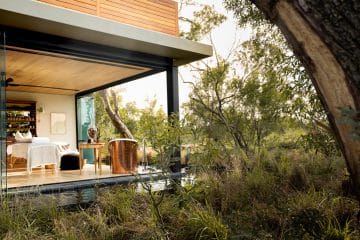
Cosmopolitan Cape Town and Greater Kruger Safari
Southern Africa South Africa Cape Town Kruger National Park Thornybush Johannesburg
From $ 8200 /USD
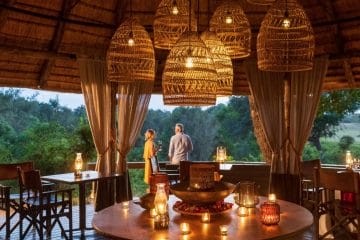
Sabi Sands Safari and Mauritius Holiday
Southern Africa South Africa Johannesburg Kruger National Park Sabi Sands Mauritius
From $ 6390 /USD

Kruger Safari and Mozambique Beach Combination
Southern Africa South Africa Kruger National Park Mozambique
From $ 4560 /USD
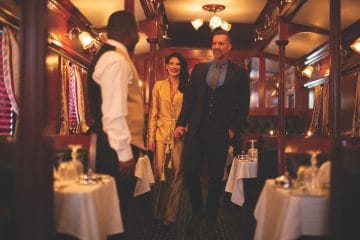
Classic Southern Africa Train Journey
South Africa Johannesburg Pretoria Kruger National Park Mozambique Zimbabwe
From $ 7900 /USD
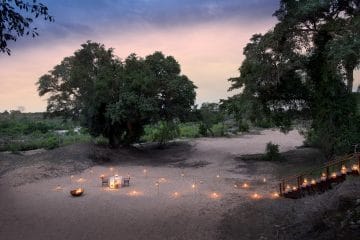
Delightful Cape Town & Kruger Luxury Safari
Southern Africa South Africa Kruger National Park Sabi Sands Cape Town
From $ 5475 /USD
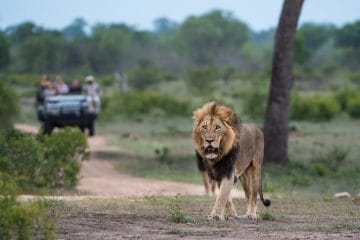
Cape Town to Kruger Luxury Holiday
Southern Africa South Africa Cape Town Kruger National Park Sabi Sands
From $ 7100 /USD

15 Kruger National Park Safaris to choose from
Stay for 3 - 14 days
Experience our Tailor-made Tours in Kruger National Park
When is the best month to travel to kruger national park.
- Kruger National Park in January
The Kruger is at its hottest during January. You’ll want to be in the shade during mid-day as temperatures regularly soar over 30°C/86°F. It’s also the rainy season which brings mild humidity and afternoon thunderstorms. Evenings are generally warm and pleasant.
The holiday season in South Africa lasts until the second week of the month, so to avoid the crowds, it’s best to head for the north of the park, one of the private concessions within Kruger, or the several private reserves along its borders.
Besides, the oasis of a luxury lodge is the best place to be in the summer heat. Game drives in these areas deliver better results than self-driving in the Kruger, as the expert game rangers can track animals off the beaten track.
The rainwater turns the African savanna beautifully lush and green, but it also means animals are harder to spot.
More available water keeps them from congregating at larger water holes too. Birding safaris , however, are excellent since large numbers of migratory species can be seen.
- Kruger National Park in February
Daytime temperatures remain in the high 20°C/68°F and can sometimes rise into the mid 30°C/86°F. February sees the last of the summer rainfall, and the occasional late afternoon thundershower can occur. The evening temperatures are usually mild.
Birding safaris are excellent during the summer months, and the far northern regions (Punda Maria and Pafuri) of the park are especially exceptional since they see many migratory species.
Since the vegetation in the park is very dense this time of year, game viewing is better done in the private reserves where expert game rangers can track the animals off-road, something taboo within the Kruger.
Summer weather makes game viewing harder for several reasons: animals have plenty of water and are not drawn to larger water holes, they prefer to stay put in the shade during the day, and thicker vegetation makes them harder to spot.
On the flip side, the greenery is excellent for landscape photography, birding is good, and many summer-born animals can be seen.
- Kruger National Park in March
March is the last of the summer months in the Kruger. While daytime temperatures are dropping, you can still expect hot days, pleasant evenings, and the occasional afternoon thundershower.
March is generally a quieter time in the Kruger than the months leading up to it, so the southern and central regions see much fewer visitors. Head for the roads that run along the riverbanks between the camps of Skukuza and Lower Sabie (Sabie River), Olifants and Letaba (Letaba and Olifants Rivers), and Olifants and Satara (Timbavati).
You’ll see fewer visitors in the Kruger, and the thick green and leafy vegetation make for beautiful landscapes, but it also makes game viewing harder. Furthermore, the abundance of water throughout the park means fewer animals congregate around larger water holes.
- Kruger National Park in April
April brings autumn to the Kruger, and the vegetation in the park gradually fades from lush bushveld to a dry brown and yellow palette.
Rainfall decreases, but the occasional afternoon thundershower still occurs. Daytime temperatures remain hot while nights are getting cooler but not cold.
For the best probability of seeing animals, the private concession areas and game lodges on the western border of the Kruger are a good bet. Here the expert guides can track animals better in the thick vegetation.
April is also the last month in which a birding safari is still good in the northern regions of the park – as soon as winter begins to arrive, the migratory species depart for warmer climates.
April often has good weather with clear skies, so it’s a pleasant month in terms of weather, but the park (excluding private concessions and reserves) gets very busy during the Easter weekend at the end of the month. Finding accommodation in the public camps of the park can be difficult.
- Kruger National Park in May
May heralds the turning point where the Kruger’s climate starts to transition into winter. Towards the end of the month, the rain begins to dry up, and the landscape becomes dry and dusty. Daytime temperatures remain warm and pleasant, while evenings start getting cooler.
Cooler temperatures make venturing to the far north of the park more pleasant, and the thinning vegetation helps in spotting the less dense populations of animals here.
May is generally your last chance to see the landscape flourishing before winter sets in, turning the vegetation dull and brown. However, the central and southern regions see fewer visitors this time of the year and, due to higher populations of animals, still offer the best game viewing opportunities.
Flights tend to be cheaper this time of the year before going up for the June/July holiday season. The park also sees fewer visitors in May.
On the flip side, if you enjoy sweeping green landscapes, this is not the time of the year to visit, as the impending winter season turns the vegetation brown, leafless and dull.
- Kruger National Park in June
June is both the coldest and driest month in the Kruger. Daytime temperatures are mild, and humidity is low, but evenings and early mornings can get quite cold.
The southern and central regions of the Kruger are best for game drives during winter since there are more rivers and other water sources, meaning these regions carry a higher population density of animals.
There are also more accommodation options here (besides camping), and you might be interested in staying indoors in the cold evening weather.
From June onwards, the Kruger’s animals, specifically the elusive big cats, become easier to spot in the sparse vegetation and tend to move around a bit more in the cooler temperatures.
Evenings and early morning game drives are quite cold, and the bushveld is not as pretty as in the summer months.
- Kruger National Park in July
July is second only to June as the coldest month in the year and equally dry. ‘Cold’ in the Kruger, however, only really applies to nights and early mornings since the daytime temperatures are usually quite comfortable and even fairly hot on some days.
The northern parts of the reserve receive fewer visitors, which makes it a good option if you want to avoid crowds. However, there is a greater density of animals in the south, especially when it comes to predators, which makes it your best bet for good sightings. Explore the areas adjacent to the Sabie River: Satara, Skukuza, and Lower Sabie.
The winter landscape is dull and dry, but that’s a good thing for game viewing as the vegetation is sparse and the grass low, making animals easier to spot.
The cooler weather and low humidity make for delightful days in the park. Still, South African school holidays and European summer holidays make July the Kruger’s second busiest time of the year.
- Kruger National Park in August
Things are slowly starting to warm up during August, but rain is still absent, and the climate remains dry. Humidity is low, daytime temperatures sit in the mid 20°C/68°F, and evening temperatures are mild.
August is the middle of the dry season, and water sources for the animals are scarce. For the best game viewing opportunities, it’s best to stay in the central and southern regions of the park, where there are more water sources and a higher density of animals.
August is a good month for game viewing on safari since the rainless winter season thins out the vegetation, making it easier to spot animals. Camping can be uncomfortable in the colder night temperatures.
- Kruger National Park in September
Spring arrives a little later in the Kruger, so the flora does not experience a colourful transformation this month. Vegetation is still sparse and colorless after the rainless winter. Temperatures during the day are hot and humid, with little to no rain expected.
At the end of the dry season in September, the vegetation in the Kruger is at its sparsest. For this reason, it’s the best time of the year to visit the Kruger, and any of the large permanent water holes make for good animal sightings. Stick to the southern and central regions for the highest density of animals.
The risk of malaria is low, and you’re likely to find large concentrations of animals at watering holes at this time of the year, but the days are often uncomfortably hot, dry, and dusty.
- Kruger National Park in October
The first proper rain of the wet season starts to arrive during November in the form of the occasional afternoon thundershower. Expect hot and humid days and balmy evenings.
The southern section of the park has the highest density of animals, and in terms of visitor numbers, November is the calm before the storm of the end-of-year holidays.
The upper central and far northern regions start seeing the first arrivals of migratory bird species and are a good bet for birding-focused safaris .
November is a great time to spot baby animals, and the young impala, one of the most abundant antelope species in the park, is especially cute.
It’s a quieter time of the year, too, as most South Africans plan their visits for the December holidays. On the other hand, humidity is high, and the risk of malaria increases.
- Kruger National Park in November
- Kruger National Park in December
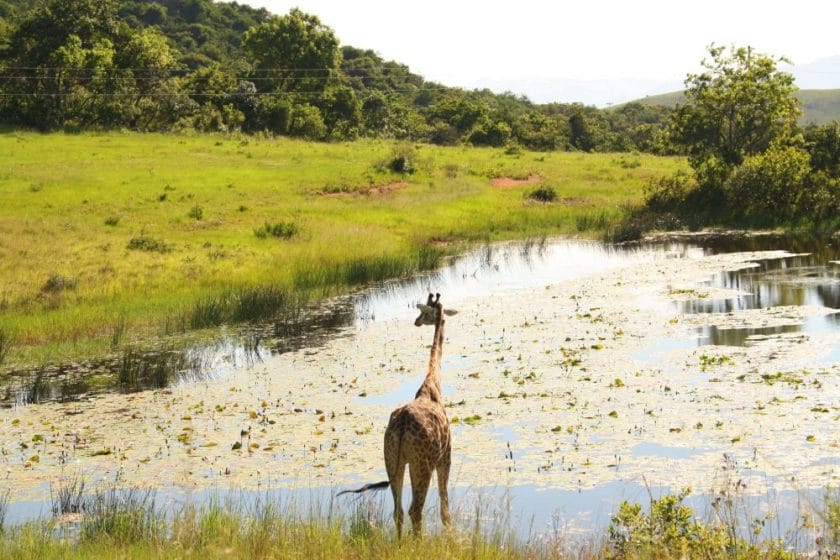
The last month of the year is extremely hot as well as the wettest in the Kruger. Expect plenty of rain with hot and humid conditions as daytime temperatures climb well above 30°C. Evenings can be equally hot and humid.
December is high season, so the whole of Kruger gets pretty busy. Head for the northern parts of the reserve where fewer visitors venture if it is solitude you are after. However the north has lesser densities of animals, so for the best game-viewing opportunities, you might consider the private concessions in the park and the private luxury reserves on the Kruger’s western perimeter. These areas provide exclusivity and much less crowded game viewing.
Many baby animals are born this time of year to coincide with the abundance of water and food sources. This makes for special sightings even though the lush vegetation makes game viewing harder than in winter. The downside is that this is peak season and the park is packed with visitors. Additionally the hot and humid weather might not suit everyone.
Our Recommended Tours in Kruger National Park
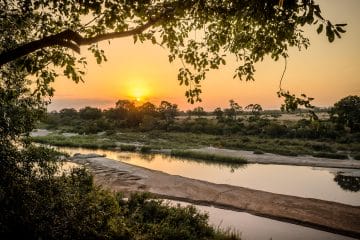
A grandiose journey through Cape Town, the Wine...
South Africa Cape Town Franschhoek Sabi Sands
From $ 14000 /USD
Looking for Something Unique?
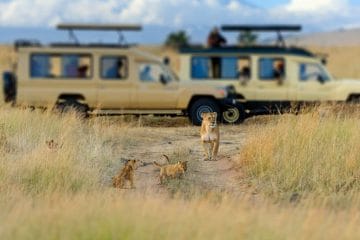
Big Cat Safaris
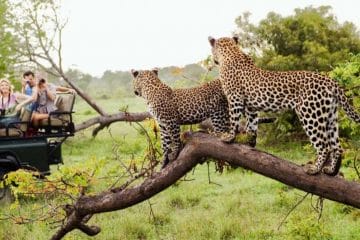
Family and Kid-Friendly Safaris
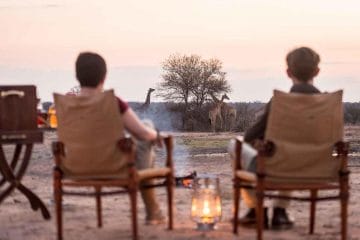
Honeymoons in Africa
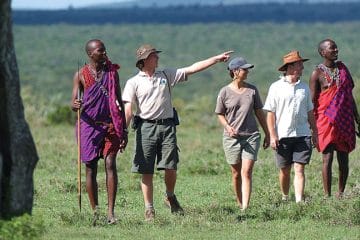
What Our Guests Have to Say?
Read recent reviews from travellers who have planned and booked their trips with us, one stop shop with good recommendations for activities, transport and stay..
Los Angeles to South Africa – Safari Review
Ram Reddy, United States 09 Aug 2023
Our south africa tour was absolutely incredible.
Kruger & Sabi Safari Review
Maziar N, United States 25 Apr 2022
Prompt, professional and excellent service.
Senior Safari to Kruger & Botswana Review
Chetan Vora, Canada 20 Nov 2019
Our month-long trip to africa was an absolute gem.
Month-long Trip in Africa Review
Jacob Weiss, Israel 11 Nov 2019
First safari experience, but not the last.
Botswana, Moremi & Chobe Safari Review
MARCO GIACOMO PASSARINI, Italy 25 Jun 2018
Very efficient service to get us on safari in a wonderful reserve..
Eastern Cape Safari Review
David, United Kingdom 16 Mar 2018
Ready to plan your tailor-made safari.

Megan Warrington, Safari Travel Planner
Free safari planning advice from destination experts
See kruger national park in your comfort.
- Affordable Safaris in the Kruger National Park
- Budget Safari in the Kruger National Park
- Luxury Safari in the Kruger National Park
The Kruger National Park offers a surprising array of mid-range safari options for the traveler who wants to avoid roughing it but is not partial to having the utmost in luxury.
Part of making your visit to the park more affordable lies in how you put your trip together: shave off a spa treatment here and a five-course dinner there, and soon you’re left with most of the luxury but much less of the cost one on your affordable Kruger Safari trip .
Instead of taking a charter flight or shuttle service directly to your lodge, hire a car at the airport and make a road trip out of the journey to the Kruger National Park.
The world’s third largest canyon, the Blyde River Canyon, is en route to the Kruger and certainly worth a visit, not to mention other nearby sites like Sabie’s Waterfall Route and the quaint village of Pilgrim’s Rest.
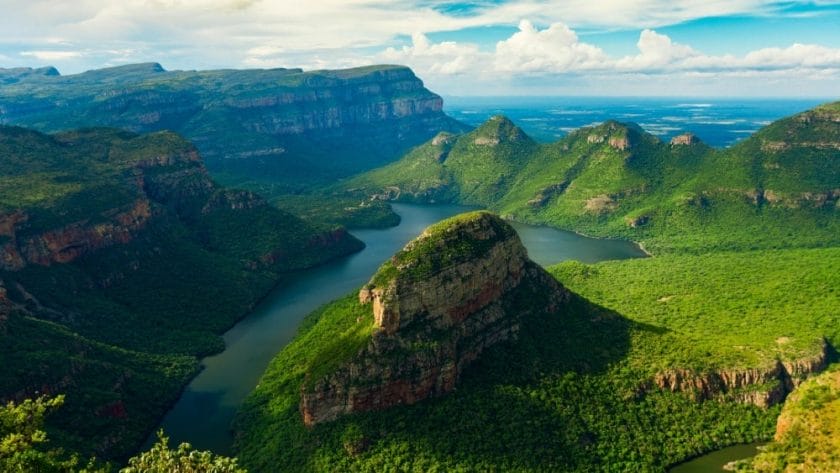
A great way to enjoy the Kruger National Park is to split your stay between one of the public camps of the park and a lodge within one of the private concession areas. This means you’ll have time to enjoy self-drive safaris in the park, which is a great hands-on game-viewing experience.
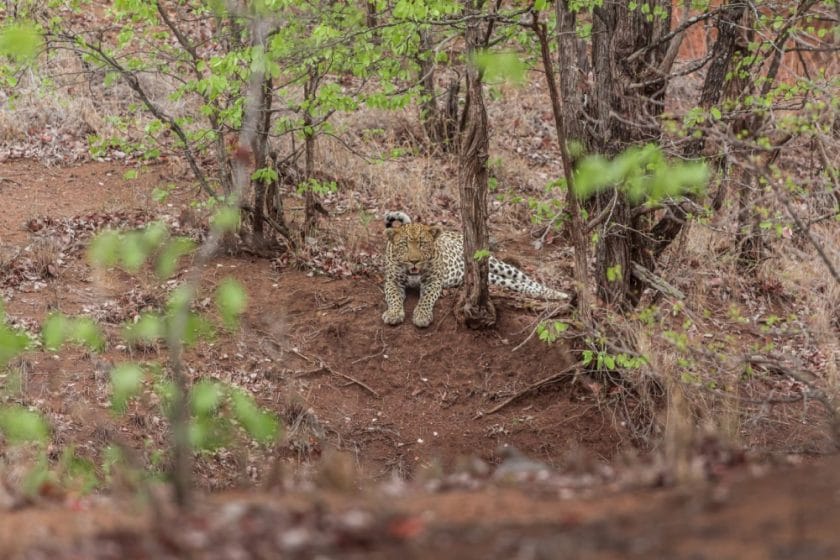
Once within the exclusive concession area, a seasoned guide will use their expertise to show you the very best of the African bushveld. As a bonus, these guides are allowed to conduct game drives outside of their concessions into the park’s public areas to give you an optimal chance of spotting elusive species such as the enigmatic leopard.
Several of the private luxury reserves along the unfenced western border of the park, known as the Greater Kruger, contain affordable lodges, guest houses, and tented camps aimed at a mid-range budget. Self-catering is an option in some of the camps and guest houses, many of which you’ll have exclusive use of if you book the whole camp or house.
Stay at these, and you’ll save on some of the over-the-top frills while enjoying treats like guided game drives and walking safaris . Here guides are allowed to track animals off-road and at night – something you are not allowed to do on your own in the public areas of the Kruger.
Practical Information for Affordable Safaris in the Kruger National Park
- Travel in the off-season when both flight and accommodation prices are lower. The winter season (May to September) is less busy in the Kruger yet still excellent for game viewing. Keep an eye out for package deals, as many of the lodges offer free nights and discounted offers.
- Rent an SUV or a 4×4 vehicle , as the added height is helpful for game viewing, especially in the summertime when the grass in the Kruger stands tall. The extra interior space is also welcome on long drives and for luggage storage.
- Several rental companies offer fully kitted vehicles that are camp-ready with rooftop tents, awnings, kitchen setups, chairs, and tables. Larger vehicles also cater to groups or families.
- Staying just outside one of the park’s main gates – in Hazyview, Phalaborwa, or Nelspruit, for instance – and making day trips into the Kruger is often comparatively more affordable.
The Kruger National Park is certainly the most well-suited safari destination for budget-conscious travelers. More than a century of conservation efforts have ensured that the magic of the African bush and its incredible wildlife is accessible to all who visit the Kruger.
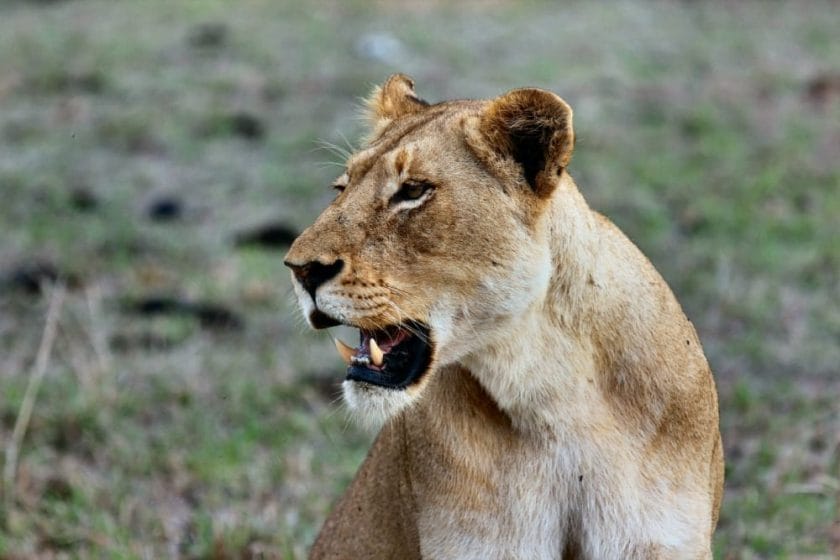
Getting to the park is easy – from the nearest international airport, OR Tambo International in Johannesburg, a comfortable drive along the N4 highway will get you there in under five hours. All major car rental companies have counters at the airport offering a comprehensive range of rental options.
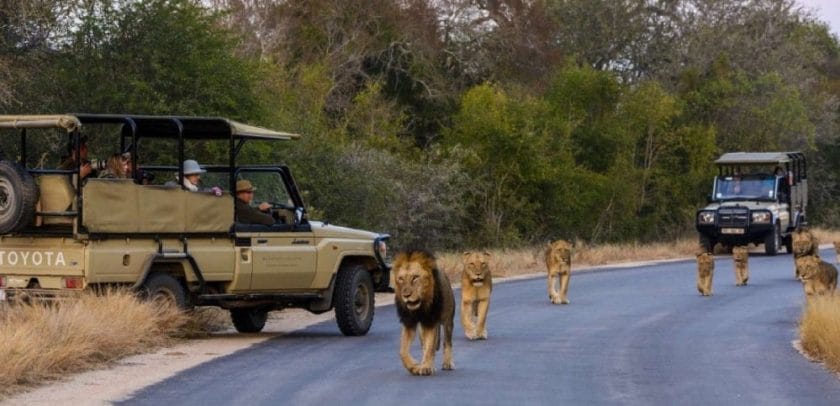
One of Kruger’s best features for those on a budget is that you can conduct game drives in your own vehicle. The well-maintained road network (mostly tarred or good gravel) within the park means you don’t need to hire an expensive 4×4 – a regular hatchback or sedan will do the job on your budget Kruger safari tour .
The cost of accommodation usually takes a large chunk out of any travel budget, but luckily the Kruger has a wide range of affordable accommodation options throughout the 19,485km2 (7,523 square mile) park.
The southern regions around Lower Sabie, Skukuza, Berg-en-Dal, and the central regions near Letaba and Satara offer more bang for your buck in terms of facilities and game viewing opportunities.
These regions are also more easily accessible than the far north, meaning that you spend less time traveling to and from your destination and more time experiencing wildlife or leisure time at camp.
Camping is the most affordable accommodation option. The Kruger main camps have ample facilities such as restaurants, swimming pools, and grocery shops that make for a most comfortable stay without breaking the bank.
Traveling in the Kruger on a budget doesn’t necessarily mean you have to camp, as many camps also offer reasonably priced safari tents, chalets, and guesthouses. These are excellent options for groups of friends and families.
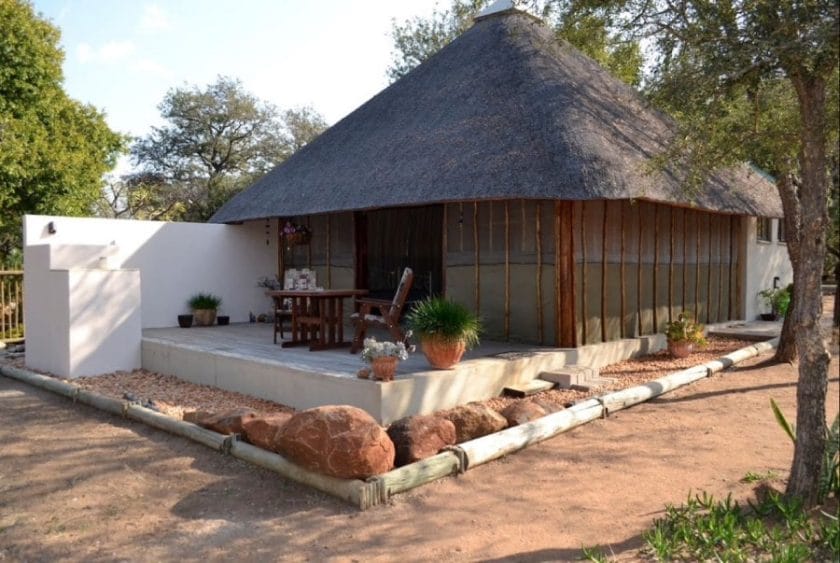
While there is no denying that a luxury safari lodge is an experience bar none, there is plenty of benefit in a more hands-on approach. You curate your experience by setting your own schedule, planning daily excursions, and seeing the Kruger the way the locals do.
Travel Tips for Affordable Safaris in the Kruger National Park
- Book accommodation well in advance if you plan on traveling during Easter, the school holidays in late June/early July, or the month of December. The park is at its busiest during these periods.
- Many car rental companies offer camping-ready vehicles that are fully kitted with all equipment needed for setting up a campsite. This is a much more convenient option than sourcing camping gear separately.
- The park offers guided bush walks from all the main camps, which are an exceptional way of experiencing the wildlife of the Kruger. Game drives in open 4×4 vehicles are also on offer and are an excellent way to supplement your own game viewing.
- Several overland and hop-on-hop-off bus tour operators offer all-inclusive travel packages to the Kruger National Park. These tours typically include transport to and from major cities, accommodation (camping) in the park, and game drives.
The Kruger National Park consistently ranks among Africa’s best luxury safari destinations. The private concessions and game reserves here spare no expense when it comes to absolute opulent living in the heart of the African bush.

While the vast expanse of the Kruger National Park public areas is meant to cater to all, you’ll want to head to one of the private concession areas if all-out indulgence is what you’re after.
Here all your needs are taken care of from the moment you set foot in these exclusive sections of the park to the moment you leave. The concessions are set in prime Big Five country and are unfenced, meaning you can experience exceptional game viewing minus the crowds.
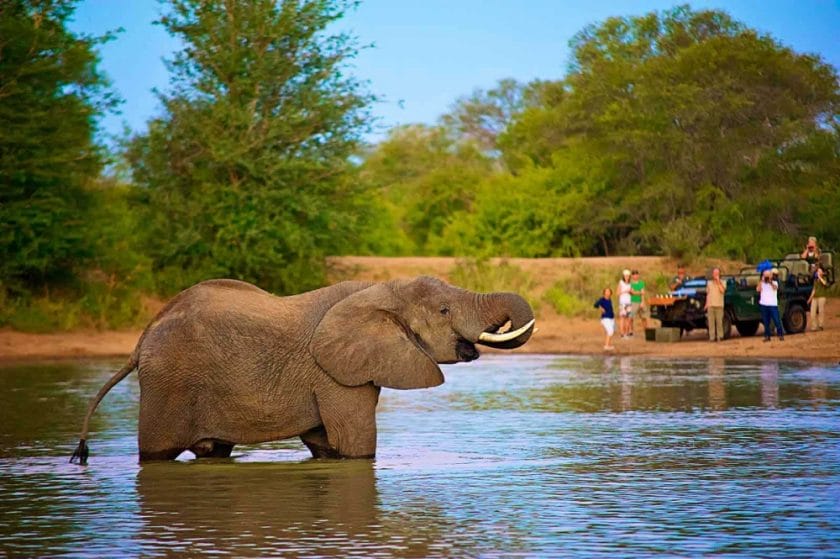
The private game reserves on the western perimeter of the Kruger, many of whom share unfenced borders with the park, are arguably a step up from the concession areas. The lodges, luxury tents, and villas are set in the most spectacular environments possible, and the views from your suite or villa are often worth the trip alone.
Most lodges offer personal guides, housekeeping staff, and chefs and customize your stay according to specific needs. Expect private swimming pools, wine cellars, libraries, rooftop viewing areas, five-star spa treatments, therapeutic massages, and wellness centers.
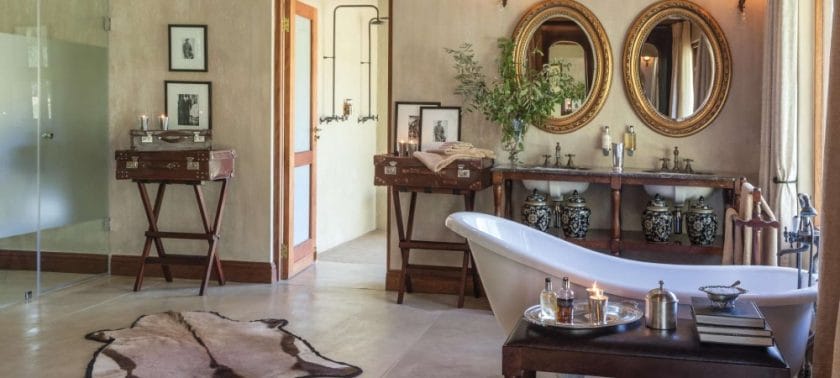
Both the concession lodges and private reserve lodges offer activities not found elsewhere in the park, such as nighttime game drives, off-road tracking of animals, and activities specifically developed for children. Several lodges offer tailor-made experiences that might focus on photography , romantic getaways , birding , and even fine dining.
Speaking of dining, the luxury lodges’ cuisine is world-class with a distinctive African flair. What’s more, meals are often set in spectacular bush settings.
Ever had breakfast while overlooking a waterhole teeming with wildlife? How about high tea under an ancient African acacia tree? You simply must try a lavish five-course dinner prepared by your personal chef with the Milky Way shimmering over an atmospheric lantern-lit banquet.
- Most lodges offer direct air transfers to and from the nearest international airport, OR Tambo, in Johannesburg. However, some lodges offer direct or connecting flights from other popular destinations such as Cape Town , Victoria Falls , Vilanculos , and Mauritius .
- Speak to a dedicated safari expert who’ll curate your Kruger National Park safari , as well as connecting destinations, to your specific needs. There’s no better way to distill the myriad of options in the Greater Kruger to your personal itinerary, budget, family size, and expectations.
- Several lodges offer private and secluded villas for exclusive use. This option caters to the discreet individual, couple, or family by providing personal housekeepers, chefs, and game rangers for your stay.
- A host of personalized activities and excursions in the Greater Kruger and nearby regions can be arranged from your lodge. These include, but are not limited to, helicopter, hot-air balloon, and microlight flights over the stunning Blyde River Canyon, golfing at the world-class Hans Merensky or Leopard Creek Golf Estates, and customized photographic , horseback and birding safaris .
Holiday Styles and Options in Kruger National Park
- Romantic Safari in the Kruger National Park
Picture this: A red sun kisses the horizon as the last rays of daylight bathe the camelthorn trees around you in a warm glow. At the waterhole in front of you, a mother elephant helps her newborn take a mud bath while an elegant giraffe kneels nearby for a drink.
You sip a sundowner and watch as a troop of baboons grooms each other, a pod of hippo snort in the water, and a herd of impala antelope nibble away at an early dinner on a grassy embankment. As the day’s heat fades, a palpable serenity descends on the world, and another glorious African day ends.
This is not just some idyllic scene from a nature documentary; this is daily life in the Kruger National Park.
It’s easy to see why the Kruger National Park is consistently rated as one of the top safari destinations in Africa. The enormous 20000 km2 (7,722 square mile) park is not only home to the famous Big Five (elephant, rhino, cape buffalo, lion, and leopard), but it also boasts an incredibly diverse African savanna biome.
More than 140 species of mammal, including oddities such as the shy aardvark and the fierce honey badger, call it their home, while over 300 species of trees stand proudly scattered across the landscape.
The Kruger National Park is a birder’s paradise , so be sure to pack your binoculars and keep an eye out for a large variety of raptors, vultures, storks, kingfishers, and weavers among the 500-odd species.
Each season brings its own flavor to the Kruger, changing the features of both the landscape and animals, meaning no two visits are alike. Summers are hot, humid, and full of rainfall that drapes the landscape in a lush green grassy cloak. Winters are a dry affair but much cooler and excellent for game viewing.
While wildlife is certainly the main attraction, the Kruger has another major drawcard: its world-class lodgings. Since becoming South Africa’s first official national park in 1926, the Kruger has systematically established a wide range of accommodation options in a dozen main camps, several bushveld camps, private lodges, and four remote satellite camps.
Whether you fancy camping, self-catering cottages, family units, guest houses, luxury lodges, or even your very own private villa, you’ll be spoiled for choice throughout the park.
Besides the accommodation within the Kruger , a host of private game reserves on the park’s western perimeter share unfenced borders with the Kruger, which means you can also experience the park’s abundant wildlife from several exclusive 5-star luxury safari lodges.
Here you’ll enjoy everything from personalized game-viewing experiences and spa treatments to exceptional cuisine and more, all with little to no other visitors.
Ease of access completes the trifecta of Kruger’s best features. The park lies a mere four to six hours from the nearest international airport (OR Tambo in Johannesburg), making travel to and from the reserve a breeze.
You can even travel via a charter flight and cut travel time to under two hours. An extensive network of tar and good gravel roads makes it easy to get around in the park. You won’t need a 4×4 or a GPS to find your way here.
The Kruger National Park is a place that you can visit for a lifetime without ever running out of sensational experiences. Thanks to nearly a century of conservation efforts, Mother Nature’s circle of life remains largely untouched in the reserve. Best of all, you can easily and comfortably observe it without needing a David Livingstone-style expedition.
The Kruger is, without a doubt, a place where the warm heart of Africa still beats strong. Spend enough time here, and you’ll soon find your own heart beating to the same rhythm.
There is something intrinsically romantic about the African savannah, one of the last vestiges on Earth where the majesty of nature so effortlessly inspires a sense of connection. It’s no wonder the Kruger National Park is the quintessential South African safari destination for couples.
The park’s proximity to the OR Tambo International Airport in Johannesburg (only a 5-hour drive away) means that you could arrive in South Africa in the morning and watch the sun set over the African savannah by the end of the day.
All major car rental companies have counters at the airport, and self-driving allows adding other scenic destinations, like the Blyde River Canyon, on the way to the Kruger. Alternatively, scheduled flights to local airports near the Kruger cut travel time significantly.
The budget-conscious traveler might choose to stay at one of the various self-catering chalets, guest houses, or lodges and do self-drive game viewing in a rental vehicle.
However, for the ultimate in privacy and luxury, it’s best to head to one of the dozen-or-so private concession lodges within the Kruger or the collection of private luxury reserves on the western edges of the park.
Here you’ll enjoy opulence to the finest detail. Secluded suites with sensational views, private pools, outdoor rose (or champagne!) baths, and exquisite cuisine set the scene for the best romantic getaway.
Several private game reserves offer treehouse experiences: a night under the stars on a secluded raised platform in the bush. There’s no better way to spend an evening with a loved one, not to mention the fine dining provided by your own personal chef.
Speaking of meals, why not try traditional gourmet cuisine under the open African sky? Various lodges offer a bush banquet set in the open bush framed by lantern light and the Milky Way overhead.
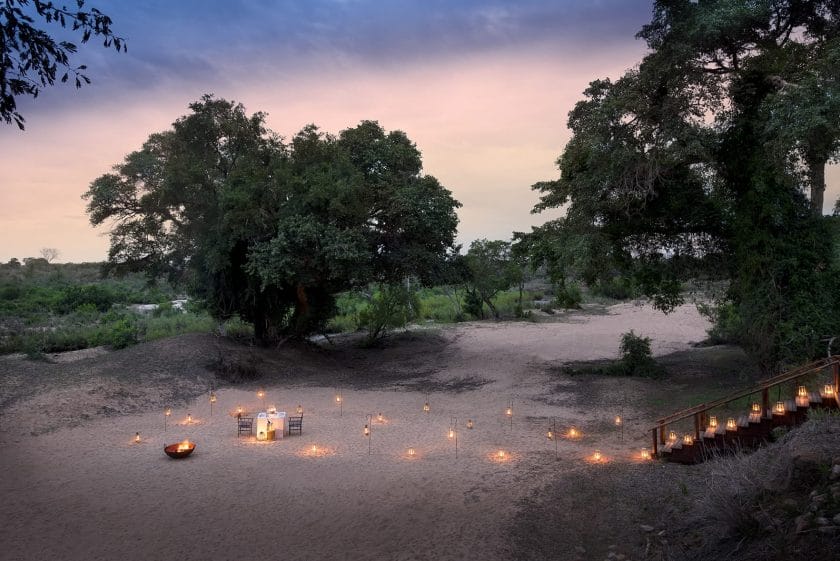
Many couples-orientated packages at the luxury reserves include personal game drives and bush walks with an experienced game ranger who will tailor the experience to your preference, such as photography , birding , or spotting rare species at night.
Spa treatments are a quintessential luxury on any honeymoon, and when you stay at one of the luxury lodges, you can expect the very best. Want to keep active during your stay? Most lodges offer gyms, yoga classes, and wellness centers.
Travel Tips for a Romantic Safari in the Kruger National Park
- Most of the luxury lodges offer all-inclusive packages specifically aimed at couples. Book one of these, and you won’t have to worry about a thing from start to finish. Honeymoon packages that include activities and experiences aimed explicitly at couples are often offered at a discount.
- Combine a trip to the Kruger with a visit to one or more of Southern Africa’s other top attractions like Cape Town , Victoria Falls , and Mauritius . Several lodges and tour operators offer such combo packages.
- Scheduled flights from OR Tambo arrive and depart daily from local airports (Hoedspruit, Nelspruit, Phalaborwa, or Skukuza) near the Kruger, which cut travel time to under 2 hours. From here, a short transfer gets you to your lodge. Several lodges have private airstrips, so direct flights are possible too.
Who is Travelling to Kruger National Park with you?
- Family Safari in the Kruger National Park
- Solo Travel in the Kruger National Park
The Kruger National Park sits right at the top of family-friendly safari destinations in South Africa. The park prides itself on being accessible to young and old alike, and many South Africans will confess to cultivating a life-long love for the African bush from an early age in the Kruger.

A family holiday in the Kruger is best done in one of two ways; either self-driving or choosing an all-inclusive package at a private lodge. Both options have their own unique appeal depending on the type of holiday experience you’re after.
Long hours in the car are always a concern when traveling with children, but the Kruger is only an easy five-hour drive from the nearest international airport in Johannesburg. All major car rental companies have counters here and offer vehicles suited to families. Alternatively, you might opt for a shuttle service when staying at an all-inclusive luxury lodge.
En route to the Kruger National Park, whether self-driving or by lodge transfer, there are plenty of rest stops, and you can even turn it into a scenic road trip of sorts by including some of the sights on the stunning Panorama Route. Once inside the park, the vast network of good tar and gravel roads makes getting from one place to another equally comfortable.
Exploring the park in your own vehicle means your family stays together, and you can plan outings according to personal preference. If you’re traveling with toddlers, this is the only way you can take them on game drives in the reserve, as children under the age of 6 are not allowed on the game drives in open 4×4 vehicles (for safety reasons) provided by the park. Similarly, only children over 12 may join guided bush walks .
The southern and central regions of the park are more family-friendly than the far north since distances between rest areas are not so spread out, the landscape is more varied, and animals are more abundant. Skukuza, Satara, Lower Sabie, Letaba, and Berg en Dal camps are superb family-oriented accommodation options since they offer restaurants, shops, swimming pools, child-friendly activities, museums, and movie screenings.
Although staying at a luxury lodge is naturally more costly, the experience is more personal with offerings such as private family villas, your own guide in an open 4×4 game viewing vehicle, and special activities for children.
Travel Tips for Family Safari in the Kruger National Park
- Rent an SUV or a 4×4 with good ground clearance for your visit to the park. The additional vehicle height makes for better game viewing, and the extra space will come in handy for luggage and make the time spent in the back seat more comfortable for the youngsters.
- Some rental companies offer fully kitted camping vehicles with enough equipment and tents for the whole family. This is a great all-inclusive option if you plan on camping in the Kruger. The kids might not like getting up early on holiday, but it’s worth it in the Kruger. The early mornings are best for game viewing, not to mention cooler than during the day. The same goes for late afternoon game drives.
- Grab a park map at an entrance gate or a camp shop. You’ll need it to navigate the park when self-driving.
- When traveling with small children, bring some games, puzzles, and books to entertain them during leisure time in camp or long drives in the car.
- All the main camps have restaurants with reasonable prices and small shops for self-catering, so there’s no need to over-pack your car with food supplies.
There is a very particular kind of adventure that comes with solo traveling. It takes you to unimaginable new places, experiences, and people and also affords the opportunity for calm, uninterrupted self-reflection. The vast expanse of the Kruger National Park offers you plenty of both.
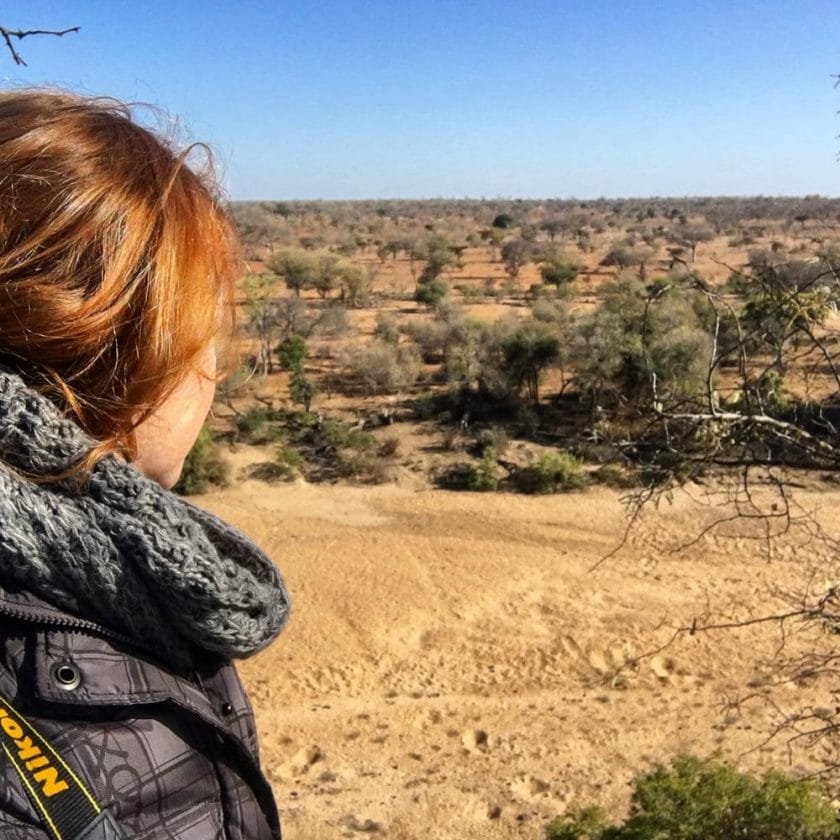
Kruger National Park might be one of the wildest places in Africa and home to the biggest land mammals on Earth, but that doesn’t mean that it is out of bounds for the solo traveler. The extensive network of tar and good gravel roads makes getting around a breeze, and a wide selection of accommodations suits every budget .
The myriad of campsites is a great DIY option, while safari tents, chalets, and guest houses offer all the creature comforts (plus the marvel of air conditioning) you’re used to at home.
If you’re looking for a touch of exclusivity and personalized service, take your pick from one of the private concession areas within the park or the multiple five-star luxury lodges that border the Kruger.
In the private concession areas and private game reserves, you’ll arguably get a more personal experience than going solo in the park’s public areas.
Daily game drives with an experienced ranger come as standard at most luxury lodges, birding and photography excursions can be tailored to your preference, and shuttle services to and from airports eliminate the need to rent a vehicle. Last but not least, all meals are taken care of.
The southern and central regions of the Kruger National Park are your best bet for spotting large populations of animals and having access to comfortable accommodation facilities like restaurants, fuel stations, and shops.
If you’re a veteran of solo travel and have the time, then the northern part of the park is much less populated with stunning, unspoiled landscapes.
Travel Tips for Solo Travel in the Kruger National Park
- If you plan on spending multiple days in the reserve and/or plan to move between different camps, you’ll need a vehicle. The roads are superb, so any vehicle will do, but if you’re planning to camp, you may want to consider renting a camper van or kitted-out 4×4.
- A larger rental vehicle like an SUV or 4×4 can aid game viewing since it has a height advantage, especially in the summer when the grass is tall.
- There’s no public transport within the park. If renting a vehicle is not an option, or you prefer not to drive, stay at one of the private lodges in the greater Kruger, where shuttle services and daily game drives are included in your stay.
- Be sure to buy a map of the reserve at the entrance gate or a camp shop. You’ll need it to navigate through the Kruger on your own.
- All the main camps have restaurants with reasonable prices and small shops for self-catering. You can also book guided drives and walks with rangers from here.
- Several overland and hop-on/hop-off tour operators offer multi-day guided trips to the Kruger. Join one of these, and you’ll meet fellow travelers, and your accommodation, meals, and game drives in the park are included.
- Why Kruger National Park
Registered Members of these Organizations
Join our newsletter
Sign up to receive exclusive offers, safari inspiration, and expert tips straight to your inbox.
By proceeding you agree to our Privacy Policy and Terms & Conditions .
POPULAR DESTINATION
Popular tours.
- Luxury Explorers Safari in Botswana
- Romantic Cape Town & Luxury Safari
- Masai Mara and Serengeti Combo
- Wildlife and Gorillas of Rwanda
- Luxury Honeymoon in Mauritius
POPULAR ACCOMMODATIONS
- Sabi Sabi Earth Lodge
- Chobe Game Lodge
- Khwai Lediba
- Camp Okavango
- Khwai Leadwood
QUICK LINKS
- Safari Cost Estimator Tool
- [email protected]
The Best Time to Visit Kruger National Park
:max_bytes(150000):strip_icc():format(webp)/20993407_10103348948297667_723186734_o-13f99eb160ab41f096b226a097e8233a.jpg)
Weather in Kruger National Park
Attractions in kruger national park.
The best time to visit Kruger National Park is during South Africa's dry season, which typically falls between April and September. Dry season is the best time to visit Kruger National Park due to the lovely temperatures that occur during this time. Temperatures can range from the 40s F in the evenings to the mid-80s F during the day. Since the main objective of visitors to Kruger National Park is sighting animals in the bush, dry season with low amounts of rain is the perfect time to visit the park.
Overall the range of temperatures in Kruger National Park go from the high 70s F to the low 90s F. Thus visitors can enjoy extremely pleasant temperatures year-round at the park. While dry season is the best time to visit the park, July, August, and September are the driest months and can cause an abundance of animal deaths. If you're visiting through the extremely dry months, proceed with caution. Rainy season occurs between October through March, making it a difficult time to spot animals due to heavy showers.
Kruger National Park is made up of a host of key sites and wilderness trails for visitors to explore. The biggest attraction is, of course, the abundance of wildlife including the big five (elephants, lions, buffalo, leopards, and rhinos). Many venture to the park to explore the grounds in 4X4 trucks on safari, but the park also offers rustic camping faculties and trails for exploring the flora and fauna spread amongst 7,722 square miles of zoned wilderness areas. Trails worth discovering include Bushman’s trail, home to beautiful rocky cliffs and a botanical reserve, and Wolhuter trail, which is the oldest trail in the park.
January is one of the hottest and wettest months to visit Kruger Park, due to it being in the midst of rainy season. It is during the summer season for the region and can be difficult to enjoy game walks and drives due to the rain. Nevertheless, visitors can expect for rain showers to be sporadic during the day and mornings are generally clear.
Events to check out: During the month of January Kruger National Park hosts birding events each weekend hosted by SANParks Honorary Rangers. These events are available at various camps throughout Kruger National Park.
Hot and wet weather conditions persist through the month of February, with temperatures averaging 90 F. The climate can be muggy so pack a change of clothes from day to night outings. Some tourists prefer to relax during the mid-day in their air-conditioned lodges while enjoying safari game drives in the early morning and cool off during the evening. Late afternoons and evenings on occasions bring about thunderstorms which can be quite refreshing.
Events to check out: Birding events and sighting opportunities continue through the month of February with the SANParks Honorary Rangers.
On the tail end of rainy season, March brings about subtropical rainstorms and beautiful scenery for photography buffs. However, due to the rainy climate in addition to being a bit challenging to spot animals, the rain draws out mosquitos who make it difficult to enjoy a game drive or walk in the bush. Evening temperatures average in the mid-60s F and daytime highs hover around the high 80s F.
Events to check out: The birding weekends hosted by the South African National Parks honorary rangers take place through mid-March.
By the month of April, high temperatures begin to cool down averaging around 85 F during this transitional month. Rainfall and high levels of humidity begin to disperse making it a great time to visit Kruger National Park. Visitors can expect the landscape to be at its greenest and for vegetation to be thick and lush. However, due to the large amounts of vegetation during this month, it can be trying for tourists to spot game in the wild.
Events to check out: The weekly Summerfields 5K run are a great activity to do during the fall month of April as temperatures cool off.
May is a great month for game viewing in the park, as the vegetation thins during the dry season. Rain is rare during the month so it’s a great time to enjoy viewing animals in the bush. It is also mating season for many animals, especially antelopes, making it a prime time to spot animals looking for their partners in the wild while on safari. By late May, average early morning temperatures typically fall to around 54 F as highs average around 80 F.
Events to check out: The Virtual Vitality 10K Run occurs in May at Kruger National Park giving running enthusiasts a chance to participate in the race virtually or at the park in person.
June ushers in the winter and dry months in South Africa, thus making it a pretty pleasant time to visit Kruger Park due to the cooler winter temperatures. In June the average high temperature is around 78F during the day and a low of 47F so it is recommended to bring a jacket for the evenings. It is a fantastic time for game viewing as there is little rainfall, so animals come out to find small amounts of water available.
Events to check out: June is a prime time to visit and get shoulder season pricing by safari operators and tour companies.
Dry season continues through the month of July, still making it a prime time to visit Kruger National Park. Cooler temperatures prevail with average highs near 79 F during the day and the high 40s F in the evenings. With little to no rain, it is a great time to enjoy the outdoors as there is no need to fight off many misquotes in the park.
Events to check out: July is high season for visiting Kruger National Park and experiencing game drives.
August is the tail end of the dry, winter season which offers warm and mild days, with average high temperatures around 80 F and average lows of 52 F. Early morning and late evening game drives occur during the lower temperatures so it’s advised for visitors to bring a jacket and sweater to keep warm. As long as it is not uncharacteristically dry, August is a great time for spotting wildlife in the park.
Events to check out: Continued opportunities for game viewing on safari drives with park rangers.
The spring month of September is an excellent time for venturing to Kruger National Park, as average mid-afternoon temperatures hover around 84 F. Early morning and evening temperatures are around 57 F, making it pleasant for game drives either early morning, mid-afternoon, or through the evening.
Events to check out: Baroque in the Bush are three days of Baroque concerts held at Shingwedzi in the Kruger National Park. Visitors can enjoy an array of concerts held in a large thatched veranda overlooking the river.
Spring-like temperatures continue through the month of October. However, as it is close to the end of dry season, brief showers and rainstorms begin in October bringing about the opportunity for vegetation to reappear in the park. Additionally, many animals give birth in the park during this time making it a lively time for exciting animal sightings.
Events to check out: Steppe eagles begin to arrive in the park making it a great time for birders to enjoy treks on the trails to spot them.
Rainy season starts picking up during the month of November in the park, which brings with it higher levels of humidity and mosquitoes are more prominent. The summer month can offer average temperatures of 90 F and late afternoon thunderstorms often occur.
Events to check out: Loads of young animals are visible making it an ideal time for game drives.
December can also be a difficult time to enjoy Kruger National Park due to the continuation of the rainy season storms and muggy air. It’s a must to pack rain gear and mosquito repellent as both rain and bugs will be out in droves during the rainy month.
Events to check out: Impala breeding season brings out an array of predators to spot while on safari.
The Best Time to Visit Dubai
The Best Time to Visit Nairobi
The Best Time to Visit Kauai
The Best Time to Visit California's Wine Country
The Best Time to Visit Masai Mara National Reserve
The Best Time to Visit the Maldives
The Best Time to Visit the Bahamas
The Best Time to Visit Naples, Italy
The Best Time to Visit Japan
The Best Time to Visit South Africa
Serengeti National Park, Tanzania: The Complete Guide
The Best Time to Go on Safari
The Best Time to Visit Oman
Weather in Seychelles: Climate, Seasons, and Average Monthly Temperature
Weather in Nairobi: Climate, Seasons, and Average Monthly Temperature
Weather in Rwanda: Climate, Seasons, and Average Monthly Temperature
- Things to do
- Lodge Gallery
Kruger National Park: A Guide to Seasons and Safari Adventures

Kruger National Park in Africa offers a captivating safari adventure with its diverse wildlife. The guide covers two main seasons: the wet season (November to April) and the dry season (May to October).
The wet season boasts lush landscapes and abundant wildlife but can have challenging road conditions and hot, humid weather. The dry season offers cooler weather and optimal game viewing, but animals may be more dispersed. Regardless of the season, Kruger National Park promises an unforgettable experience, with Needles Lodge as your gateway to its wonders.
Nestled in the heart of Africa, Kruger National Park beckons with its captivating blend of extraordinary wildlife, diverse landscapes, and thrilling safari experiences. This iconic destination, renowned for hosting the famed Big Five – lions, leopards, elephants, rhinoceros, and buffalos – along with a plethora of other remarkable creatures like graceful giraffes , majestic zebras , and lumbering hippopotamuses , offers an adventure of a lifetime. Whether you're a wildlife enthusiast, a birding aficionado, or simply seeking the unparalleled beauty of nature, Kruger National Park has something for everyone. In this comprehensive guide, we'll take you through the park's seasonal variations, helping you choose the ideal time to embark on your safari odyssey.
Wet Season (November to April )
As the curtain rises on the wet season in Kruger National Park, a warm embrace envelops the landscape. Average temperatures dance between 25 to 30 degrees Celsius (77 to 86 degrees Fahrenheit) , creating a balmy atmosphere. During this period, the park welcomes approximately 500 mm (20 inches) of rainfall, replenishing its water sources. However, this influx of rain can render some roads impassable. It's important to note that the wet season isn't just a transformation of the park's climate; it's also a metamorphosis of its wildlife dynamics.
Pros of Visiting During the Wet Season:
Wildlife Spectacle: The wet season is unequivocally the best time to witness the park's wildlife. With water sources plentiful, animals congregate around them, creating an astonishing spectacle of nature.
Avian Extravaganza: Birdwatching enthusiasts will find themselves in paradise during this time. The wet season heralds the arrival of numerous migratory birds, offering exceptional birdwatching opportunities.
Abundance of Life: The park's flora flourishes, painting the landscape in vibrant hues. It's a mesmerizing sight for those with an eye for botanical beauty.
Cons of Visiting During the Wet Season:
Challenging Roads: The heavy rainfall can render some roads impassable, limiting your access to certain areas of the park.
Hot and Humid Weather: The wet season can bring hot and humid weather, which may not be to everyone's liking.
Malaria Risk: The increased presence of water sources can also elevate the risk of malaria, so taking appropriate precautions is essential.
Dry Season (May to October):
As the wet season makes its exit, the dry season ushers in cooler temperatures, ranging from 15 to 25 degrees Celsius (59 to 77 degrees Fahrenheit) . Rainfall becomes a rarity, causing the bushveld to shed its green cloak and revealing the open expanse beyond. While the dry season offers unique advantages, it presents its own set of challenges for intrepid safari-goers.
Pros of Visiting During the Dry Season:
Cooler Weather: The cooler, drier climate provides respite from the heat and humidity of the wet season, ensuring more comfortable safari adventures.
Clear Sightlines: With sparse foliage, the bushveld offers clear sightlines, making wildlife easier to spot.
Optimal Game Viewing: The animals are forced to congregate around dwindling water sources, making game drives particularly rewarding.
Cons of Visiting During the Dry Season:
Wildlife distribution: You might experience less frequent animal sightings, with longer intervals of not spotting any creatures during your gamedrive. This is because water sources become scarcer, forcing the animals to congregate around the limited water sources scattered across the park. Dusty and Hot: The dry season can be dusty and hot, so prepare accordingly with appropriate attire and gear. Increased
Fire Risk: The parched landscape is more susceptible to fires during this season, altering the scenery. Chilly Mornings and Evenings: It can be quite chilly in the early morning and evenings, so ensure you bring warm clothing and dress in layers as the day progresses.
Choosing the Right Time for Your Safari:
Selecting the ideal time to visit Kruger National Park hinges on your preferences and interests. If your primary goal is to witness wildlife in abundance, relish vibrant flora, and indulge in birdwatching and photography , the wet season beckons. However, be prepared for the challenges that come with it, including potential road closures and heightened malaria risk.
Conversely, if you yearn for cooler weather, clear sightlines, and exceptional game drives, the dry season is your ticket to adventure. Although the animals may be more dispersed, the rewards of a well-planned safari during this time are unparalleled.
No matter when you choose to embark on your Kruger National Park safari, you're guaranteed an unforgettable experience. This extraordinary destination boasts not only a diverse array of wildlife but also awe-inspiring landscapes. To ensure a seamless journey, consider booking your accommodation well in advance, especially if you plan to visit during peak season. Additionally, tailor your activities to your interests, whether that's game drives, bush walks, birdwatching, or even fishing. Don't forget to pack essential gear such as sunscreen, insect repellent, hats, sunglasses, and, of course, binoculars and a camera. (Essential Packing Guide for Your South Africa Safari Adventure) Finally, acquaint yourself with the park's regulations and the wildlife you're likely to encounter, ensuring a safe and enriching adventure.
By following these guidelines, you can confidently plan an unforgettable Kruger National Park safari tailored to your desires.
- Kruger National Park
- Wildlife photography
No matter when you visit, Needles Lodge is your gateway to Kruger's wonders.
Guest reviews, what a magic experience at needles.
What a magic experience at Needles! Greeted daily by zebras, kudus, warthogs and giraffes from the deck. Warm friendly staff, wonderful food and comfortable and clean rooms. Thanks Lyn and Phil for your hospitality.
- Nicky Craig, June 2024
Best accommodation for visiting Kruger
Best accommodation for visiting Kruger and superb customer service. Award winning!! Food is top quality, rooms are clean and spacious and wildlife is abundant. Large kudus, impalas and antelope were walking around the perimeter of the lodge. The safaris are coordinated by Needles and only the best guides are chosen. Every comfort item is included and when you head out for safaris even warm ponchos are provided. I can’t... Read More
- Emma Hayes, April 2024
Third visit to Needles
Been to the needles for the third time. This time 6 nights. You can really relax and everyone is very nice. The food is fantastic and prepared by Thobila. You eat together with all the guests so that you can also chat with people about their experiences. We had a full day in Kruger Park with Willem. It is recommended for everyone to book the game drives in advance.... Read More
- Ronnie & Sylvia , February 2024
The Netherlands
Beter kan het echt niet worden.
Hier moet je geweest zijn om te begrijpen en te voelen hoe het is om in deze geweldige lodge te verblijven. Heerlijk (top kokkies!) en gezellig gegeten aan de lange buitentafel. Aanschuiven maar en elkaar vertellen over je ervaringen en te luisteren naar Dennis en zijn team die je van alles kunnen vertellen over het land en de geschiedenis. De game drive met ranger William om nooit te vergeten.... Read More
- Carla de Waal, February 2024
Like us on Facebook
Special offers.

Share This Post
Best Time to Go on Safari in the Kruger National Park
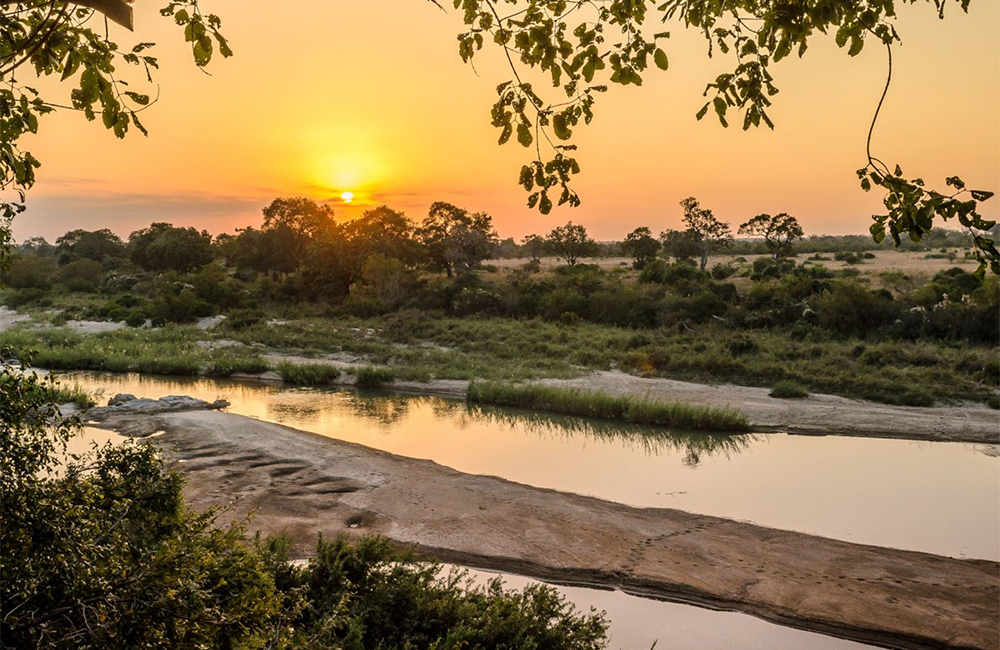
One thing that makes the Kruger National Park a fantastic safari destination is that there really is not a bad time to go. The Kruger National Park has two main seasons, a dry season and a wet season. The wet and dry seasons each feature unique landscapes and viewing opportunities, so one might say that the best time to go on safari in the Kruger National Park may depend on what you want to see.
Kruger National Park Dry Season
It is no secret that the dry winter months from May to Otcober have been dubbed as the best time to go on safari in the Kruger National Park. Vegetation is sparse and animals have to gather at permanent water sources for a drink making them easier to spot. There is also virtually no rainfall during this time. Winter temperatures drop below 10˚C (50˚F) in the early mornings and evenings, however, the days warm up and temperatures increase to 24˚C (75˚F) by the afternoons.
Kruger National Park Wet Season
Make no mistake, visiting the Kruger National Park in wet season is a beautiful time to go too, many prefer the lush green vegetation. Although it’s wet season in the Kruger, it is also summer. Peak summer temperatures, from December to February, are well into the thirties and can reach up to a scorching 40˚C (104˚F). This is however the wet season and afternoon thunderstorms bring a slight relief from the heat.
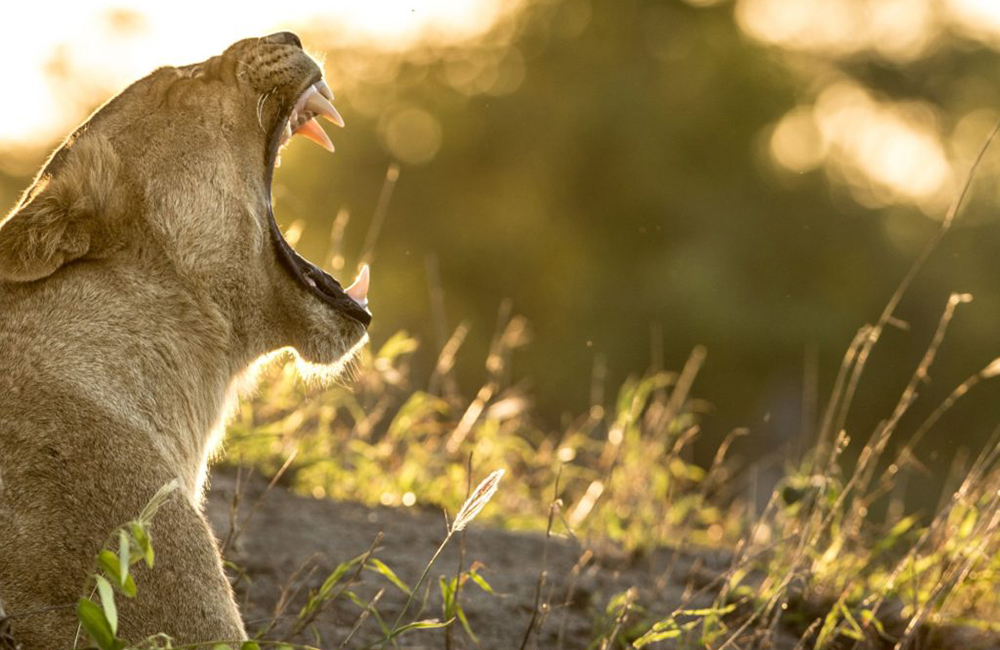
January in the Kruger National Park
January is also the peak of the rainy season, so visitors should be prepared for occasional thunderstorms and heavy downpours. January is one of the warmest months of the year in the park. While the summer heat can make for uncomfortable conditions, it also means that the park’s vegetation is lush and green, and many animals are more active during the early morning and late afternoon when temperatures are cooler. This is when the game drives take place. Despite the heat and humidity, January is a great time to visit the Kruger National Park for those who want to experience the park’s wildlife and natural beauty at its best.
Weather: Average daily temperature from 20°C – 33°C and high humidity. Expect occasional thunderstorms and short, but heavy downpours throughout the day.
Tip: Be sure to pack light, breathable clothing and plenty of sunscreen to protect yourself from the sun. Afternoon thunderstorms are common, so it’s a good idea to bring a raincoat or umbrella.
February in the Kruger national Park
February is considered to be one of the warmest and wettest months in Kruger National Park. The humidity is also high, making it feel hotter than it actually is. February can be a great time to visit Kruger National Park for those who don’t mind the heat and rain. You can expect frequent thunderstorms and heavy rainfalls during this month, which can sometimes lead to flash floods. However, the rain also brings new life to the park, and the vegetation is lush and green, making it a scenic experience with beautiful lush landscapes.
Weather: Average daily temperature from 20°C – 32°C and high humidity. Expect occasional thunderstorms and short, but heavy downpours throughout the day.
March in the Kruger national Park
March is the end of the rainy season and also the last month of Summer. The temperatures are warm and humid, and you can expect afternoon thundershowers. The Kruger’s scenery is magnificent in March. The vegetation is thick, green and lush making the landscapes really beautiful. With the thick vegetation it can be more difficult to spot the wildlife. The rivers are full and there is an abundance of water around the park, therefore fewer animals congregate around the water holes. Staying in the private reserves will be an advantage, because the vehicles are allowed off road on the game drives to track the wildlife. With the summer rain and humidity levels, March is in high season for mosquitoes.
Weather: Average daily temperature from 20°C – 31°C and high humidity. Expect occasional thunderstorms and short, but heavy downpours throughout the day.
April in the Kruger national Park
April is the beginning of autumn in Kruger National Park and the weather is generally warm and pleasant. The temperatures are cooler than in the hot summer months, making it more comfortable for visitors to explore the park. Considering April is the end of the rainy season, it is a great a great time to visit the Kruger National Park. Although it is the end of rainy season, you can expect occasional thundershowers in the afternoon. The vegetation is still green and lush, and the rivers and waterholes are full. With the thick vegetation it can be more difficult to spot the wildlife. Staying in the private reserves will be an advantage, because the vehicles are allowed off road on the game drives to track the wildlife.
Weather: Average daily temperature from 17°C – 29°C and high humidity. Expect occasional thunderstorms and short, but heavy downpours throughout the day.
Tip: Changing of the seasons invites an unpredictable weather pattern. It’s always a good idea to pack warm clothing for the cooler mornings and evenings.
May in the Kruger national Park
The Month of May marks the start of dry season in the Kruger National Park and is an excellent time to visit. The day time tempretures in May are still warm, while the evenings start to cool. The weather makes it a very comforatble time of year to visit. May is the end of the rainy season in the the Kruger National Park and the vegetation is lush and green. The thinning vegetation helps in spotting wildlife and May is considered an excellent time to see animals on safari in the Kruger National Park.
May is an ideal time to go to the Kruger National park due to its pleasant temperatures and favourable weather conditions. It is also a quiter time of year to visit before the June/ July school holidays.
Weather: Average daily temperature from 12°C – 28°C and high humidity. Expect occasional thunderstorms and short, but heavy downpours throughout the day.
Tip: Early mornings and evenings can be quite chilly and this is when the game drives take place. Temperatures can drop to around 10°C or lower, so make sure to bring some warm layers for these times.
June in the Kruger national Park
June is a good time to go to the Kruger National Park, but you can expect cooler temperatures. The days are mild, but the evenings and morning can get cold. Although the days are mild, June is the coldest month in the Kruger National Park. June is very much dry season and it is an excellent time to spot wildlife in the Kruger national Park. The vegetation is thinner than in the summer months, which is an advantage when tracking the wildlife. The lack of rainfall in June creates good wildlife spotting oppertunites at the waterholdes. June is a popular time for school holidays, so the park may be busier than usual. Especially at the family friendly lodges.
In June the best game drives take place near the rivers and water sources which are plentiful in the Southern region of the Kruger National Park.
Weather: Average daily temperatures from 09°C – 25°C and high humidity. Expect occasional thunderstorms and short, but heavy downpours throughout the day.
July in the Kruger National Park
July is not much warmer than June and has smiliar tempretures and weather conditions. July is an excellent time to go on safari in the Kruger National Park. It is the middle of the dry season, which means that animals tend to congregate around water sources, making them easier to spot. Additionally, the vegetation is less dense, which also makes it easier to see wildlife. However, be prepared for cold mornings and evenings, as temperatures can drop significantly during this time of year. Game drives take place in teh mornings and afternoons, so you will need to dress warm and be prepared. June is a popular time to visit the Kruger National Park, so be sure to book accommodations and activities in advance.
August in the Kruger National Park
August is in the peak of dry season in the Kruger National Park, which is considered the best time to go. Although August is an excellent time to go on safari in the Kruger National Park, it is also the busiest and it is essential to book your accommodation far in advance. The weather is usually dry, warm and sunny. Temperatures can be chilly in the mornings and evenings, so it’s important to bring warm clothing. With the low humidity in August and cooler temperatures in the evenings, this is consider low season for mosquitoes.
There is little to no rain in August and it is a very dry time in the Kruger. The vegetation is spare and collarless and it is an excellent time to spot wildlife as they gather around water sources.
Weather: Average daily temperatures from 11°C – 27°C and high humidity. Expect occasional thunderstorms and short, but heavy downpours throughout the day.
September in the Kruger National Park
September is amazing in the Kruger National Park and an excellent time to visit. September in the Kruger national park falls in the dry season, which is considered the best time to go to the Kruger National Park for a safari. There is little to no rain in this month and vegetation is sparse and colorless, wildlife sightings are frequent, as animals congregate around water sources. September is considered one of the best times to spot the famous Big-5 as well as other incredible wildlife.Temperatures are also warmer in September, making it a comfortable time to explore the park.
September is a busy month in the Kruger National park and it is difficult to find accommodation over this period, unless you book far in advance. It is known to be a little quieter than July and August which are considered to be the height of peak season.
Weather: Average daily temperatures from 14°C – 29°C and high humidity. Expect occasional thunderstorms and short, but heavy downpours throughout the day.
Kruger National Park in October
October is another excellent time to visit Kruger National Park and is also considered the best time to go by many experienced safari enthusiasts. With Summer approaching the days start to warm up. This gives you the opportunity to enjoy many outdoor activities as well as lounge in the sun when you are taking some time out to relax at the lodge. October is not as busy as the peak of the dry season and it’s easier to find availability at the best safari lodges. October in the Kruger National Park is the start of shoulder season and is also the start of birthing season, so you may be lucky enough to see many animals with their young. The heavy rains have not yet started in October, which means that water sources are still scarce and wildlife tends to gather around them. This is an excellent time to see a wide variety of animals.
Another benefit of visiting Kruger National Park in October is the abundance of birdlife. As the summer season approaches, many migratory birds arrive in the park, adding to the already impressive number of resident species. Birdwatchers will have a field day spotting everything from eagles and vultures to colorful bee-eaters and kingfishers.
Weather: Average daily temperatures from 17°C – 30°C and high humidity. Expect occasional thunderstorms and short, but heavy downpours throughout the day.
Tip: Generally a dry month, although there may be occasional light rain showers in the afternoon. It’s always a good idea to pack warm clothing for the cooler mornings and evenings.
Kruger National Park in November
November is a great time to visit Kruger National Park in South Africa. During November, the weather is generally warm and dry in the Kruger National Park, which means that game viewing can be excellent. The vegetation is also less dense, making it easier to spot wildlife. However, it is important to note that November falls within the park’s rainy season, which means that there may be occasional thunderstorms.
Weather: Average daily temperatures from 19°C – 31°C and high humidity. Expect occasional thunderstorms and short, but heavy downpours throughout the day.
Tip: Be sure to pack light, breathable clothing and plenty of sunscreen to protect yourself from the sun. Afternoon thunderstorms are common, so it’s a good idea to bring a raincoat or umbrella
Visiting Kruger National Park in December
The Kruger National Park in December is very hot and also the wettest time of the year. Given that December is holiday month it is a very busy time of year to visit and the most expensive. The weather in the Kurger National Park in December is hot and humid and you can expect temperatures over 30 degrees Celsius with afternoon thundershowers.
Visiting the Greater Kruger during the hot summer months will provide you with incredible green landscapes, while winters are dry with cloudless sunny days and provide easy animal spotting due to sparse vegetation. If you get the opportunity to plan your trip to the Kruger, regardless of the season, take it! A visit to the Kruger any time of year promises to be a great African wildlife safari.
Weather: Average daily temperatures from 20°C – 26°C and high humidity. Expect occasional thunderstorms and short, but heavy downpours throughout the day.
Visiting the Kruger in Shoulder Season
There is however one specific time of year we find particularly intriguing to visit the Kruger, and that is the shoulder season between mid-winter and summer.
September and October can get very humid in anticipation of the arrival of summer rains. As the first rains of the season start to fall a magical season unfolds, making it a very special time to visit, and in our opinion, the best time to go on safari in the Kruger National Park.
Here are the top 9 reasons to visit the Kruger from September through to November:
- As the rains fall, dry landscapes start to transform into lush surrounds. New greenery emerges but the vegetation is still fairly sparse compared to the end of the rainy season, making it unobtrusive to spotting wildlife.
- Early rains of the season clear the skies of dry winter dust. The air is clear and fresh.
- Although rains may start to fall more frequently, the downpours are generally in the afternoons and clear up quickly, so your game drives are rarely affected by the rain.
- This time of year is the season for new-borns. Just after the first seasonal rains impala lambs are born all within a two to three-week period. You will witness loads of baby antelope, elephant , monkeys, and warthogs. Get your camera ready!
- Lots of new-born animals mean lots of easy prey for predators. This is therefore also a good time to see predators in action.
- Migratory birds make their way back to the Kruger during spring resulting in a fantastic time for birding enthusiasts to start ticking off species on their bird watching list.
- Morning and evening temperatures during this time are not too cold.
- Private game reserves limit the number of vehicles accessing the conservation area to prevent crowding and provide an exclusive experience no matter the season. Peak summer season is however still busier than other times of the year and visiting between September and November allows you to miss that busy period.
- Experience electric thunderstorms in the evenings, a magnificent display of lightning in the skies. Thunder clouds with rays of sunlight streaming through can make for incredible photographic backdrops. Rainbows also make their charming appearance amidst the stormy skies.
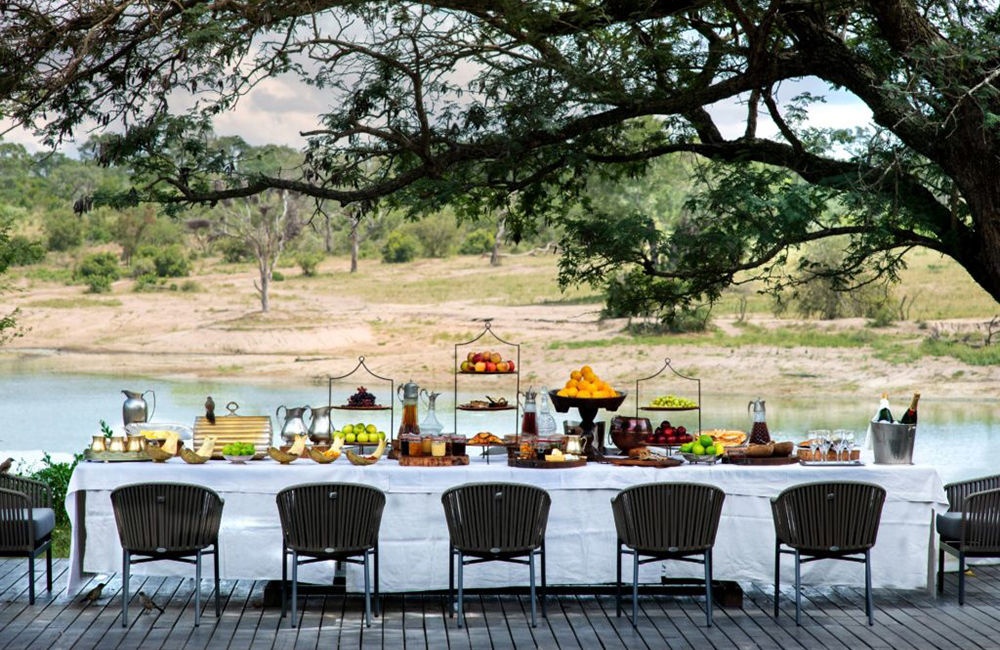
View all Kruger safari lodges here: Kruger Nataional Park Lodges
Or get in touch with us: Contact Us
Sharing is caring!
Let’s start planning
- Safari / 13
- Wildlife / 13
- Activities / 2
- Eco travel / 1
- Family Safari / 3
- Food & Culture / 1
- Game Reserve / 6
- Luxury Safari / 5
- Off the beaten Track / 1
- Safari / 19
- Travel Tips / 17
Popular posts

Related Blogs
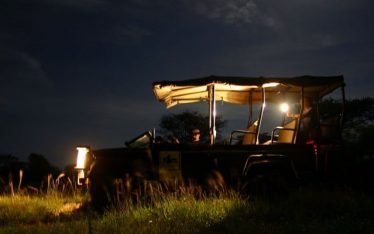
Newsletter sign up
Be the first to hear about our new and upcoming safari deals
Safaris Where to go FAQ When to go Activities Children
Explore our World
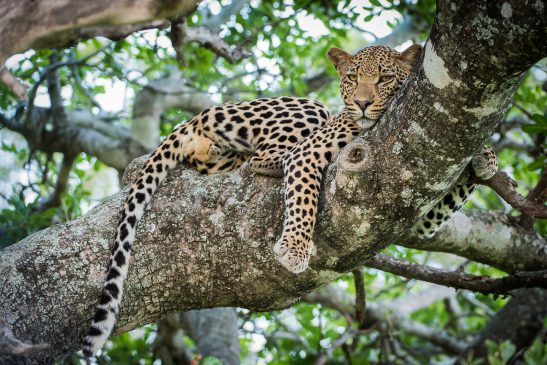
Kruger National Park
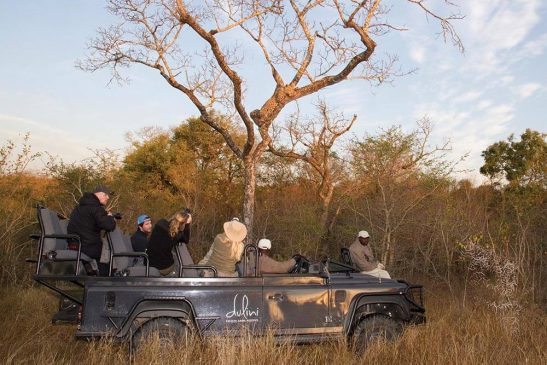
Eastern Cape
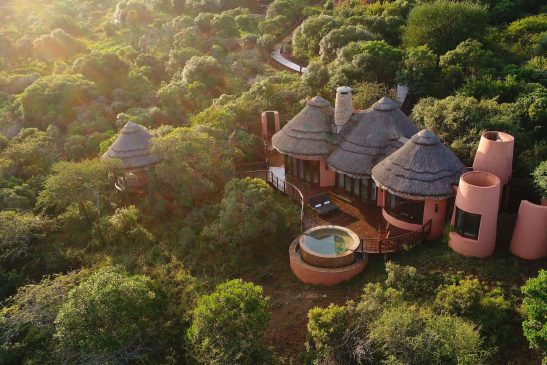
KwaZulu Natal
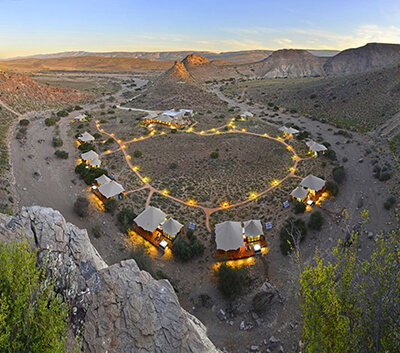
Garden Route
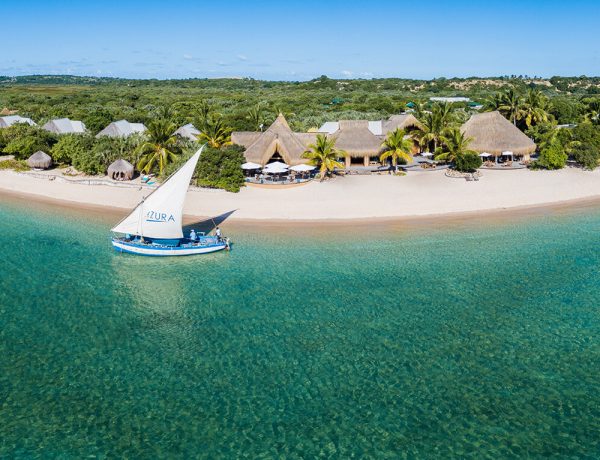
Mozambique Beach Resorts
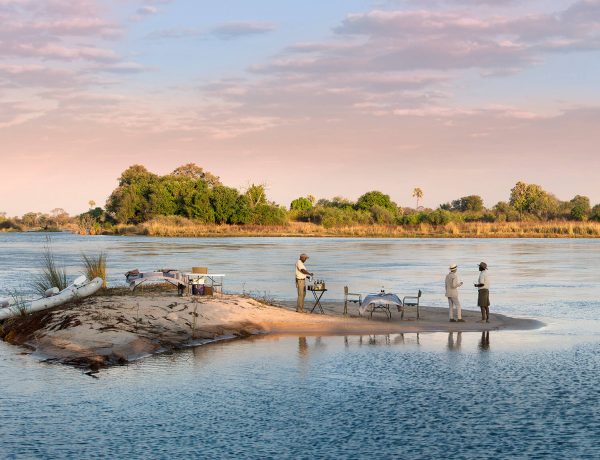
Victoria Falls Lodges
Where to Go on an African Safari in April
April is a good time to visit parts of South Africa and Botswana. It’s the Green season (Wet season) in Tanzania’s Northern circuit, which means a fair amount of rain, but the scenery is spectacular and you might get low-season deals. South Africa’s Cape region mostly experiences wonderful weather in April and you can easily combine a trip here with a safari in one of the reserves in the Garden Route or Kruger National Park.
Best Time per Country
Flag of zimbabwe zimbabwe in april.
- Everything is green after the rains
- Moderate temperatures and little rainfall make for lovely weather
- Excellent birding with some migratory birds still present
- The spray of Victoria Falls blocks the views
- Animals are harder to spot than in the middle of the Dry season
Flag of Zambia Zambia in April
- Lush scenery after the rains
- Great birding with many migratory birds still present
- There is little rain at the end of the Wet season
- Some roads are in bad condition after the rains
- Animals are spread out and wildlife viewing isn’t as good as in the Dry season
Flag of South Africa South Africa in April
- Mild weather and little rain
- Fresh scenery after the rains
- Great birding with some migrants still present
- Low season (except for Easter holidays)
- Wildlife viewing in the main parks is better in the Dry season
Flag of Uganda Uganda in April
- The savannah reserves are spectacularly green
- Gorilla and chimp trekking always go ahead, even if it rains
- Low-season rates might apply
- Peak of the Wet season with lots of rain
- Roads deteriorate and forest paths are slippery
- Some lodges close down
Flag of Tanzania Tanzania in April
- There are no crowds in the low season
- Although Wet season, you can still have a good safari in the Northern circuit
- Beautiful green landscapes
- Animals scatter and are harder to find
Flag of Rwanda Rwanda in April
- Although this isn’t the best time, gorilla trekking never gets canceled
- Everything is green and the sky is free of haze and dust
- It is low season; there are few visitors and gorilla permits are easier to get
- There is lots of rain
- Roads might deteriorate and forest paths are slippery
Flag of Namibia Namibia in April
- Beautiful scenery and dust-free skies
- Excellent birding
- Low season means few crowds
- The weather is fine with little rain and moderate temperatures
- Animals are still spread out after the rains – especially in Etosha National Park
Flag of Kenya Kenya in April
- Beautiful green scenery
- Peak of the Wet season, roads can be in bad condition
- Wildlife viewing is not as good as in the Dry season
- Some camps close down for off season
Flag of Botswana Botswana in April
- The scenery is spectacular after all the rains
- There are few visitors in low season
- The birding is very good
- Lovely weather with minimal rainfall and moderate temperatures
- Wildlife viewing is better in the middle and end of the Dry season
Visiting month
Best safari parks to visit in april.
See below for an overview of the best parks to visit in Africa by country. Please note that the listings focus on the most popular parks only and are not comprehensive.
Flag of Botswana Botswana
Best parks & reserves in april.
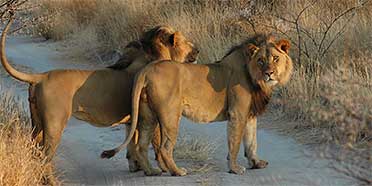
Central Kalahari GR Excellent

Chobe NP Good

Moremi GR Good

Okavango Delta Good
Flag of Kenya Kenya
No Best Parks & Reserves in April
Kenya does not have parks that are best visited in April. When to visit Kenya?
Flag of Namibia Namibia
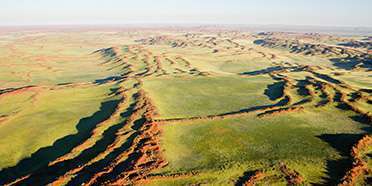
Namib-Naukluft NP Good
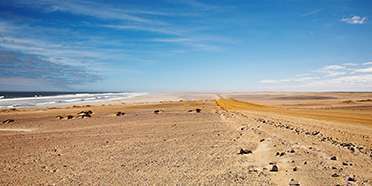
Skeleton Coast NP Good
Flag of Rwanda Rwanda
Rwanda does not have parks that are best visited in April. When to visit Rwanda?
Flag of South Africa South Africa

Kgalagadi TP Excellent

Hluhluwe-iMfolozi GR Good

Kruger NP Good

Sabi Sand GR Good
Flag of Tanzania Tanzania
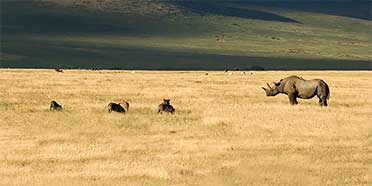
Ngorongoro Crater Good

Flag of Uganda Uganda

Murchison Falls NP Good
Flag of Zambia Zambia
Zambia does not have parks that are best visited in April. When to visit Zambia?
Flag of Zimbabwe Zimbabwe
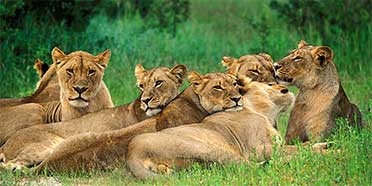
Hwange NP Good
All Parks & Reserves
Safari highlights in april.
Unpredictability is the name of the game on safari. That’s what makes it so exciting. However, some highlights are seasonal and it makes sense to plan your trip carefully to make the most of your time in Africa. If you’re wondering where to go on safari in April, read on here.
The Okavango Delta Starts Flooding in Botswana
Sometime in April, the beginning of the Dry season, the Okavango Delta starts flooding. As the waters start fanning out, a wonderful maze of lagoons, channels and floating islands emerges in the middle of the Kalahari Desert. This is a glorious time to go out in mokoro canoes as everything is green, but conditions are mostly dry. Wildlife viewing is best from July to October, which is the high season.
Victoria Falls Is in Full Flow
After the summer’s rain, Victoria Falls is in full flow. The waterfall can be viewed from Zimbabwe or Zambia, but why not visit both sides for a different perspective. Seeing the mighty Zambezi tumble down in a 1.7km-wide sheet of water is a powerful experience. Rainbows play in the drenching spray and the thunderous noise will take your breath away. Impressive as it is, you might find the views blocked by mist, so a helicopter flight is recommended to get the full picture.
Excellent time for wildlife viewing in Kgalagadi, South Africa
April is an excellent time to visit Kgalagadi, the transfrontier park shared between South Africa and Botswana. Wildlife viewing in this semi-arid region is good throughout the year, but possibly best around April, after the rains, when animals gather in the riverbeds. This shoulder month is also a good choice weather-wise. Temperatures start to drop and the heat is more tolerable than in mid-summer. Winter nights, on the other hand, are really cold.
Diving in Seychelles’ Crystal-clear Waters
April is the warmest and least windy month of the year in Seychelles, an archipelago of 115 idyllic islands in the Indian Ocean off East Africa. This is perfect weather for relaxation on the white sandy beaches. These calm conditions make April ideal for water activities too, most notably snorkeling and diving. Not only can boats reach remote spots to find sharks and manta rays, the clear waters offer amazing visibility in April – up to a staggering 30m.
Kruger National Park Guide
Spotlight on South Africa's premier safari reserve
Kruger Park Trip Report April – 7 Day Safari Diary
Our Kruger Park trip report is the story of our 7 day safari to the game reserve in April 2012.
April is the dry season and it didn’t rain once while we were there. We did think it might have rained on the evening we were going on our sunset drive, but we were assured by the helpful waiter at Mopani Rest Camp that it would not rain that night.
The land and grasses seemed quite dry in general and the weather was warm every day, but not humid! A lovely time of year to visit the park.
Our Kruger trip report is broken down into 7 sections:
- Kruger Park Trip Report Day 1: Cape Town to Letaba
- Kruger Park Trip Report Day 2: Letaba
- Kruger Park Trip Report Day 3: Letaba to Mopani
- Kruger Park Trip Report Day 4: Mopani
- Kruger Park Trip Report Day 5: Mopani to Orpen
- Kruger Park Trip Report Day 6: Orpen to Skukuza
- Kruger Park Trip Report Day 7: Skukuza to Cape Town
Day 1 – Cape Town to Letaba, 4th April
This was a big day! We got an early flight at 6:30am from Cape Town and arrived at Johannesburg Airport two hours later. We collected our luggage and picked up our rental car. We had quite a long drive to get to the park as we were entering the central region of the park through Phalaborwa Gate. The drive to this gate took over 6 hours.

Phalaborwa Gate is right on the edge of Phalaborwa town. We filled the car up with petrol at Phalaborwa as we expected it to be cheaper there than inside Kruger National Park. In reality though, it was only fractionally cheaper.
We entered Phalaborwa Gate to Kruger National Park at around 4pm. The gates close at 6pm in April and so do the rest camp gates.
We were staying the first night at Letaba Rest Camp, which is about 50km (31 miles) away, so we really had to concentrate on the driving and not stopping too much to look at animals . We didn’t want to risk being late into the camp. If you’re late, firstly you get a warning and if you’re late again you’ll be fined!
Our accommodation at Letaba was a bungalow in the rondavel style with a thatched roof, which is common throughout the rest camps . We bought a couple of things from the Letaba shop and had a nice BBQ dinner outside our bungalow.

Letaba has bushbuck and vervet monkeys about the place. We watched them walking around and climbing trees. When it was dark, we even spotted a bushbaby, a nocturnal animal, in a tree.
Day 2 – Letaba, Thursday 5th April 2012
We were up early in the morning and out the rest camp gate just after opening time at 6am. We spent the day on nearby roads and had lunch at Olifants Rest Camp .
Olifants has a really nicely located restaurant with a balcony with trees growing through it. The balcony has a wide sweeping view of Olifants River far below it. It’s a very attractive place to have lunch!
Day 3 – Letaba to Mopani, 6th April
We left Letaba Rest Camp behind and drove further north to Mopani Rest Camp . We were staying in a larger cottage this night.
When we arrived at Mopani, we booked on a sunset drive which left the camp at 4:30pm. We were driven around the nearby roads by a Kruger Park ranger in a special safari vehicle with open sides.
As the sun began to set, nocturnal animals started to come out. We saw an owl on the road, African wild cats and thick-knee birds. We were also lucky to see roan antelope and tsessebe. Then we even saw two female elephants chasing each other at great speed. The ranger said they were in heat and competing with each other. We’d never seen a sight like that before!
Day 4 – Mopani, 7th April
As we were staying at Mopani again, we took the opportunity to drive even further north into the park. The first thing we came across was the Tropic of Capricorn just north of Mopani .
We crossed into the tropics and carried on until we reached Shingwedzi Rest Camp where we had lunch. On our way up we saw a bunch of vultures also having lunch on what appeared to be the leg of a buck! Who knows what happened to that buck the night before.

On the way back from Shingwedzi, we took a tree-lined road alongside the river. It was really attractive and the best kept secret of our entire safari!
Day 5 – Mopani to Orpen, 8th April
It’s quite a long drive from Mopani to Orpen when you only average 25km (15 miles) per hour, so the trip took us most of the day. We stopped at Satara Rest Camp for lunch.
When we got to Orpen, we stayed in another type of bungalow and had a nice dinner in front of our braai (BBQ) place.
Day 6 – Orpen to Skukuza, 9th April
Orpen to Skukuza is also a fair distance.
There was quite a bit of flood damage noticeable near Skukuza, even more so than in other areas. Tshokwane picnic site was completely closed off except for some port-a-loos which had been set up. The vervet monkeys which plague Tshokwane were still around though.
Kruger National Park had severe flooding in December 2011. We saw partly eroded roads and impassable causeways and twisted railings on bridges.
As we neared Skukuza, we came across a group of cars blocking the road. When you see a lot of cars about, it can only mean one thing – a good sighting of a rare animal. When we got to the scene, we could see what all the fuss was about. We were looking at a pack of wild dogs sleeping in the bush!
Wild dogs are not only very rare in Kruger National Park, they’re an endangered species. We were really lucky to see them!
There is a lovely bird hide near Skukuza called Lake Panic Bird Hide which we went to. There are often hippos , crocodiles and terrapins in the lake and jacanas walking over the lilly pads. You could spend a long time there just watching the scene.

At Skukuza, we stayed in another bungalow. For dinner that evening, we ate at the Selati Station Grillhouse. It’s a restaurant on the old train platform that used to bring visitors to the park years ago. The restaurant has a nice atmosphere and its show-piece is the old steam train at the station.
Day 7 – Skukuza to Cape Town, 10th April
As we had to drive back to Johannesburg and catch a flight, we planned to leave the park by 11am. We took our time in the morning and driving from Skukuza down to Malelane Gate where we checked out of the park.
The drive back to Johannesburg Airport took just over 4 hours. We returned our hire car and waited for our flight back to Cape Town. Overall, another very good safari!
To finish off, here’s a list of all the animals we saw in the park during the 7 days:
And all the birds we could identify:
We hope you’ve enjoyed learning a bit about what it’s like to go on a safari in our Kruger Park trip report. If you’d like to read about another safari, see our trip report from our December safari.
If you’re planning your own safari, best of luck and happy animal spotting!
Privacy Overview
The types of cookies Kruger-National-Park-Guide.com uses are for functionality; so that we recognise you on our website and remember your previously selected preferences. These could include what language you prefer and location you are in. A mix of first party and third party cookies are used, and advertising; to collect information about your visit to our website, the content you viewed, the links you followed and information about your browser, device and your IP address.
Kruger-National-Park-Guide.com sometimes shares some aspects of this data with third parties for advertising and social media sharing purposes. We may also share online data collected through cookies with our advertising partners. This means that when you visit another website, you may be shown advertising based on your browsing patterns on our website. Some third party advertisements are provided by AWIN ( full details of the AWIN privacy policy ), Booking.com ( read Booking.com\'s full privacy policy ), the Commission Junction Affiliate Program, eBay Partner Network, GetYourGuide and Google. Google uses cookies to serve ads on our website. Google uses the DART cookie, which enables it to serve ads to our users based on their visits to this site and other sites on the web. You may opt out of the use of the DART cookie by visiting the Google ad and content network privacy policy .
Third party social media sites include Facebook, Twitter, Pinterest and similar.

The Best Time To Visit The Kruger National Park For The Ultimate Safari Experience
One of the most frequently asked questions we get about the South African safari holidays we take is ‘when is the best time to visit the Kruger National Park?’
The Kruger National Park is one of our favorite places in Africa to go on safari .
We have taken lots of safaris in the Kruger at different times of the year. Some of them were pre-kids and other times we have taken our kids.
Read this post if you want to know more about taking kids on safari.
We have camped in our little two-man tent in the Lower Sabie Rest Camp. We have stayed in luxury accommodation in private game reserves in the Greater Kruger and we have stayed in mid-range accommodation just outside of the park.
Whilst you can visit the Kruger National Park at any time of the year, certain times are better than others for the ultimate safari experience.
This post talks about the best time to visit the Kruger National Park in terms of wildlife spotting. You may, however, want to take other factors into consideration when choosing when to visit the Kruger.
Like if you want to combine a safari with visiting Cape Town on a two-week South African holiday , for example.
- See here for things to do in Cape Town with kids .
- See here for family hotels in Cape Town.
Or maybe you want to end your trip with a stay at Sun City . See our Palace of the Lost City review . We should just quickly mention that the busiest time of year in the Kruger is mid-December to mid-January (South African school holidays).
This post contains affiliate links. If you click on one and book something, we may earn a small commission but this is at no extra cost to you.
Our last safari was booked through Go2Africa – the leading luxury safari experts in Africa. They are great at advising where is best to go to see certain animals. For example, did you know that Sabi Sands Game Reserve is one of the best places in Africa to see leopards?
We stayed at Jackalberry Lodge (see our Jackalberry Lodge review here ) and Thornybush Game Lodge (see our Thornybush Game Lodge review here ).
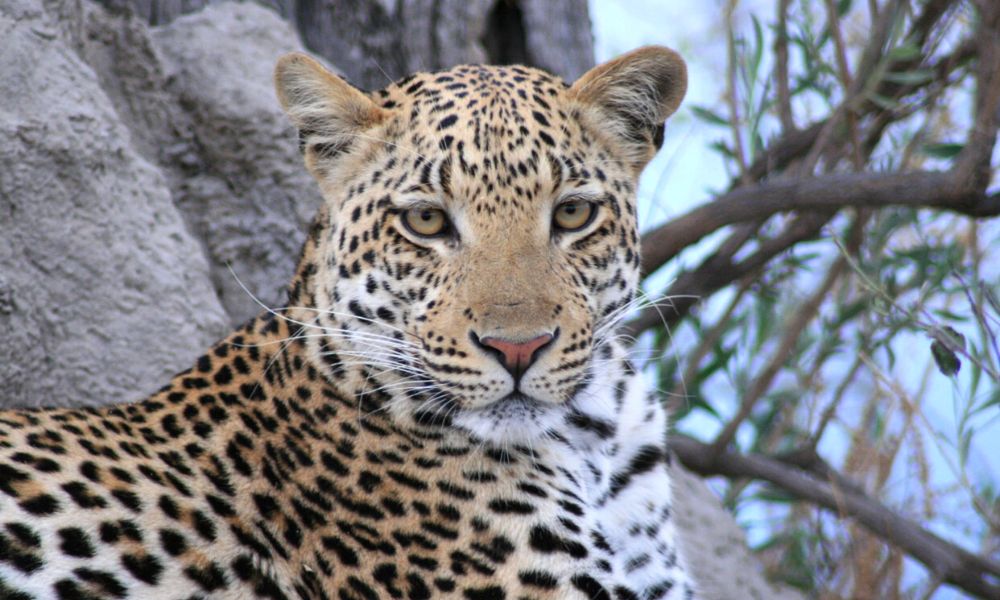
Haven’t yet decided where to go on safari in South Africa? Before we tell you when is the best time to visit the Kruger National Park, here’s why we think you should choose the Kruger National Park.
Why visit the Kruger National Park?
The kruger national park is one of the largest national parks in the world..
It is around 360 km long and 65 km wide (on average) and covers an area of around 7,500 sq mi (19,500km²) – made up mostly of woodland savannah. It has an incredible quantity and variety of wildlife and is home to the Big 5.
In recent years, South Africa has been working together with Mozambique and Zimbabwe to create an even bigger, Transfrontier National Park .
It will join the Kruger in South Africa with Gonarezhou National Park in Zimbabwe and the Limpopo National Park in Mozambique. The area will span over an incredible 100,000 km² and animals will be able to wander freely across the borders.
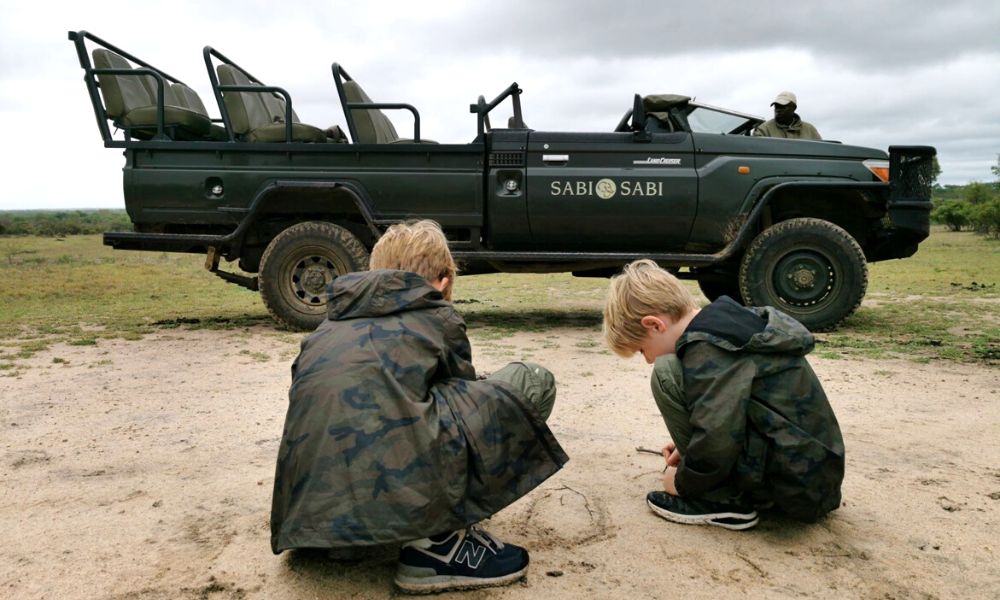
You can do self-drive safaris in the Kruger National Park
That alone should be a good reason to visit but another reason we love to visit the Kruger National Park is because we can do self-drive safaris there.
There are paved roads in the park which makes it ideal for a self-drive safari. This means that you can do budget-friendly safaris .
Self-drive safaris are also great if you are taking kids on safari because you can tailor the length of the game drive to suit your child’s needs.
There are also lots of gravel roads that are perfectly fine for a standard 2WD.
You may not think that you will see great wildlife if you stick to the main paved roads, but actually there are still great wildlife spotting opportunities.
There are two reasons for this. Animals prefer the path of least resistance. You will often see animals on the road as they get from A to B.
There are also channels on the side of the roads that collect rain water which helps promote vegetation growth. Animals come to the roadside to drink and feed.
As you can see, we had no problem spotting animals on our self-drive safari in the Kruger!
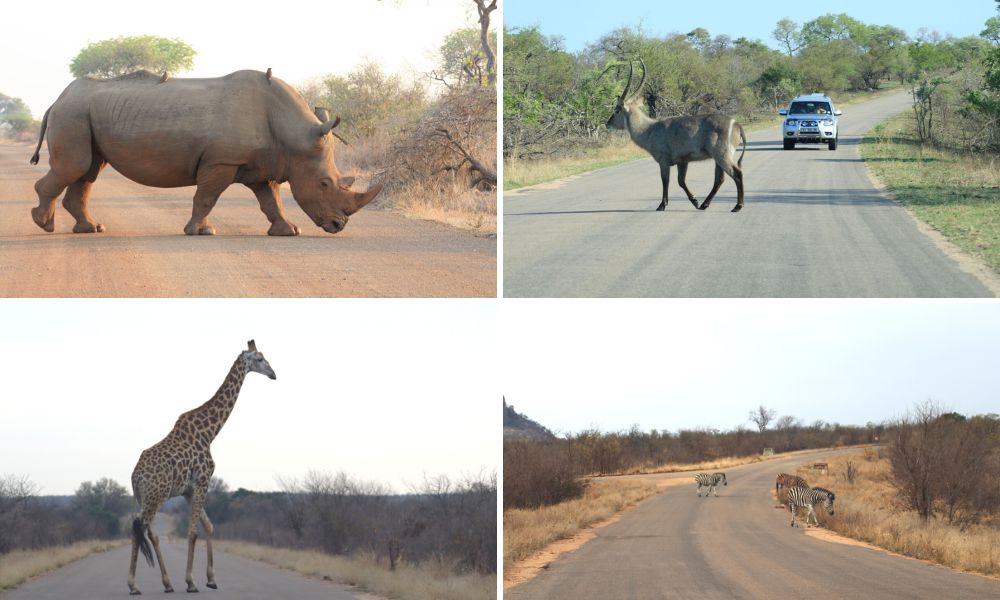
So when is the best time to visit the Kruger National Park?
The best time to visit the kruger national park.
For overall game viewing, April to October is the best time to visit the Kruger National Park. This is the dry season in the Kruger.
Visiting the Kruger in the dry season
- April to October are the winter months in the Kruger. Expect lower temperatures and dry days.
- Early morning and evening game drives can get chilly so we recommend layering up.
- The vegetation is more sparse so it is much easier to spot wildlife.
- It is easier to track animals in the dry season. Rain quickly washes animal tracks away.
- In some private game reserves, you are able to go off-road in the dry season. Off-roading gives you a better chance of wildlife spotting .
- There is a lower risk of malaria. This deserves more explanation so please see below…
Whilst the Kruger National Park is not a malaria-free area, there are lower numbers of mosquitoes in the dry season. Appropriate precautions should always be taken when visiting a malarial area .
You can check here to see which safaris in South Africa are actually malaria free .

Visiting the Kruger in the rainy season
- November to March are the summer months in the Kruger.
- The rainy season in the Kruger National Park starts in November. Expect high temperatures and rain.
- During the rainy season, vegetation can get very dense and the animals are easily camouflaged.
- Most animals tend to take cover from the rain so they are harder to spot.
- You cannot go off-road in the rainy season as it can damage the vegetation.
This is more speaking from personal experience but it isn’t that fun driving around for hours in the rain, especially if you are in an open jeep. We were soaked through after one game drive despite the ‘waterproof’ ponchos.
Photography can also be more of a challenge in the rain.
Even though it is rainy season, when the sun is out, it is intense. You should bring hats, sunglasses and suncream on your game drives.

As we said before, however, any time is a good time to visit the Kruger. To help plan your trip, here is a quick monthly guide to visiting the Kruger National Park.
Month by month guide to the Kruger National Park
Kruger national park in january.
Hot and humid with impressive thunderstorms. January is the height of the rainy season. It is also a lovely time to visit Cape Town . See also the best wine farm picnics in South Africa and the most child-friendly South African wine farms .
Kruger National Park in February
You will still experience the summer rains and warmer temperatures but they are less extreme than January. This is a good time for birders as the migratory birds settle.
Kruger National Park in March
Summer is over and the rains are coming to an end. The park is green with dense vegetation. This is breeding season for Kudu and buffalo.
Kruger National Park in April
Autumn has arrived and the dense, green vegetation starts to turn brown. Morning and evening temperatures are cooling down.
Kruger National Park in May
Mornings and evenings are becoming even cooler and trees are dropping their leaves. Animals start migrating to warmer areas. This is a good time to spot elephants migrating to Northern Kruger.
Kruger National Park in June
June is the coldest and driest month in the Kruger. Vegetation is totally brown and sparse, offering excellent game viewing.
Kruger National Park in July
The cold mornings and evenings of the winter months continue. Sparse vegetation means good game viewing.
Kruger National Park in August
Water levels are low but winter is coming to an end. Vegetation is sparse.
Kruger National Park in September
Spring is here and along with October, this is the ultimate time to visit the Kruger. Water levels are at their lowest and vegetation is sparse. Days are hot and humid.
Kruger National Park in October
October is much like September but the end of October sees the start of the rains.
Kruger National Park in November
This is the start of summer when the rains start and the temperatures rise. The park is filled with newborns.
Kruger National Park in December
The height of summer with hot days and spectacular thunderstorms. This, however, would be a good time to be visiting the beaches in Cape Town !
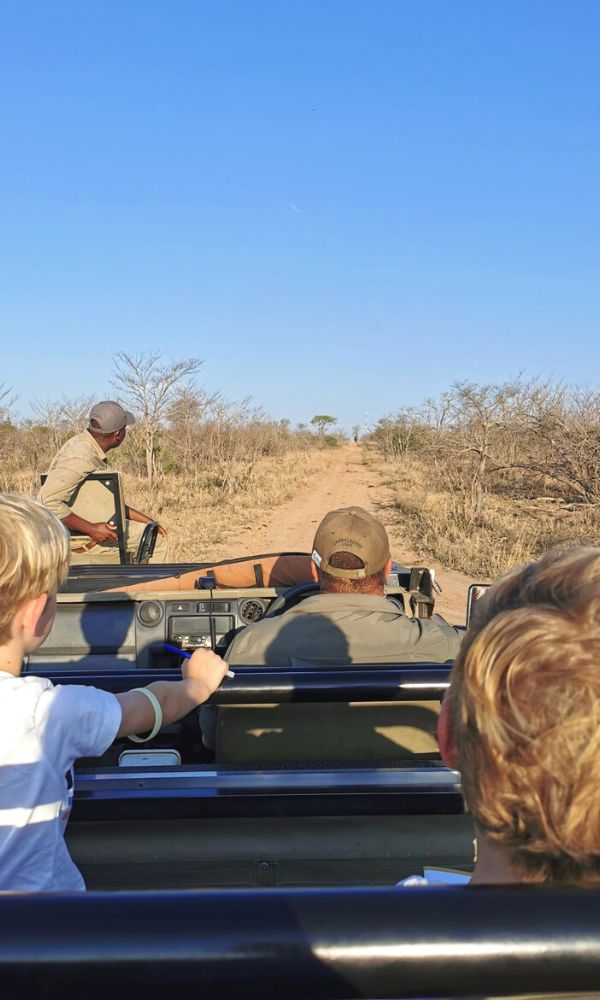
The best time of day to visit the Kruger National Park
We also get asked about the best time of day for a safari.
In our opinion, the best time of day to visit the Kruger is as early as possible in the morning or at sunset.
The gates to the Kruger National Park open at 5.30 so you should have your park ticket and be ready to enter at 5.30.
You can see here for Kruger National Park sunrise and sunset information .
Kruger National Park accommodation
You can book accommodation in the Kruger National Park through SanParks.
On the whole, the accommodation options are a bit dated although there are a few luxury lodges.
Some of the best rest camps in the Kruger are:
Lower Sabie Rest Camp – a great base to explore southern Kruger. There are lots of accommodation options here.
Olifants Rest Camp – with dramatic views of the Olifants River.
Skukuza Rest Camp – Kruger’s largest rest camp complete with unfenced 9-hole golf course.
Berg-en-Dal – one of the newest camps in the Kruger National Park.
If you are looking for luxury accommodation, your best bet is to look at the private game reserves on the fringes of the park. Some of them are open to the Kruger and the wildlife can come and go as they please.
See here for recommendations on luxury accommodation in the Kruger .
See here for family-friendly accommodation in the Kruger .
Some of our favourite private game reserves are Sabi Sands, Thornybush and Timbavati (see here for family-friendly accommodation in Timbavati ).
Here are a couple of posts with helpful tips about going on safari.
- Things to take on safari with kids
- What to wear (and what not to wear) on safari
You might also like to read about going on safari in Sri Lanka.
- Udawalawe National Park safari guide
- Yala National Park safari guide
We participate in various affiliate marketing programs. Flashpacking Family is a participant in the Amazon Services LLC Associates Program, an affiliate advertising program designed to provide a means for sites to earn advertising fees by advertising and linking to Amazon.com. As an Amazon Associate, we earn from qualifying purchases.
Most popular posts
Guide to visiting Lake Louise, Canada
Jordan itinerary
Sri Lanka’s best beaches
Things to do in Suffolk with kids
Free things to do in London for kids

- Indian Ocean Islands
- Cape Winelands
- Garden Route
- Kruger National Park
- KwaZulu-Natal
- Gorilla Trekking
- Great Migration
- Family Travel
- Accommodation
- Traveller’s tales
- The Bucket List
- Postcards From Africa
- Cape Town Restaurant Guide
- Cape Winelands Restaurant Guide
- Johannesburg Restaurant Guide
- Special Features
- Our Home Safari
- Africa’s Photographer of the Year
- Photography & Videos
- Let’s start planning
When is The Best Time to Visit Kruger National Park?
Kruger National Park , Safari , Travel Tips
0 comments
If you're wondering when is the best time to visit Kruger National Park for that long-awaited holiday, you've come to the right place! As the World's Leading Safari Company, we know this safari mecca like a leopard knows its spots! Although South Africa is certainly a year-round destination, every season promises its own unique sights and experiences. Here's what to expect to give you an idea of when is the best time to visit Kruger National Park.

Different seasons all bring unique scenery and experiences
The Different Kruger Seasons
Kruger National Park is a year-round destination and offers delightful experiences throughout the year. So, you really can't go wrong! However, t he best time to visit Kruger National Park depends on the type of safari experience you want. Of course, we recommend you don't stick to one season and return to get the best of all seasons!
Here is a breakdown of the seasons, their effects on the landscape and what you can look forward to in terms of wildlife and nature experiences.
December to March: The Emerald Summer Season
The Kruger National Park has a summer rainfall climate, which means hot, humid days yielding spectacular thunderstorms! The rainy season begins in November with a short lag time to full summer, which runs through to March.
During the height of the rainy season, rivers and streams are in full flood, and the vegetation is dense with moisture. Wildlife disperses into the thick greenery to have their little ones. While your guide and tracker may have a tougher time spotting animals, adorable young ones gambolling at the heel make the extra traversing time so worthwhile.
And summer has even more to offer. For example, colourful birdlife! Migrants double the species count in the national park to around 500. Lush landscapes and clear light also make for stunning photography. Don’t forget to charge your camera batteries!
Weather Conditions
You can expect hot, humid days that are often well above 30ºC (90ºF) with spectacular afternoon and evening thunderstorms.
- Adorable newborn animals all around
- The bush is beautifully lush and green
- Migratory birds make their debut

Summer in Kruger is a beautiful sight
April: Summer Turns into Autumn
April is an outlier month as rainfall decreases significantly, but the rivers and waterholes remain plentiful, while the bush is still dense. We’ve been on safari in Kruger during this month and had incredible wildlife sightings! You simply never know what waits behind the next bush.
Daytime temperatures ease off, trees are in full fruit and the rutting season begins.
April days are warm to hot and clear with few showers to interrupt your safari. Morning and evening temperatures are quite cool, especially in an open game viewing vehicle.
- Wildlife starts to gather around dwindling water sources
- Excellent birding during this time
- Less rainfall means more pleasant safaris yet bush is still lush

Autumn in the bush at Silvan Safari
May to August: Dry Winter
Winter in Kruger is a dry, azure-skied affair best suited for finding wildlife in the greatly diminished bush. With no rain, warm days and low malaria risk, winter is therefore also generally acknowledged as the best time to visit Kruger National Park for successful Big 5 game viewing. By mid-winter, the landscape is entirely parched, making it easier to see animals through the thinned out vegetation. Wildlife concentrates around the few remaining permanent water sources and perennial rivers, which means you get more frequent and varied sightings on your game drives.
You can expect cold nights and mornings, with warm, clear days and no humidity or rainfall.
- Widely considered prime Big 5 safari season
- Bush is sparse, making wildlife sightings excellent
- Best time for walking safaris and wildlife photography from hides

The dry winter season makes it easier to spot wildlife, even the elusive leopard, Image Credit: Garance Chassaing
September to November: Spring into Summer
The tail end of spring sees a dramatic increase in daytime temperatures. And as a result of the long dry winter, game viewing is excellent! Just head to any water source, and you’ll see many very thirsty animals.
The first rains take the edge off the heat and usually arrive in October, along with the first of the migrant birds. November is noticeably wetter than October, heralding signs of summer’s lush return, including much-anticipated fresh grazing and water supplies. Vegetation is still on the thin side, therefore making for excellent game viewing despite the rising heat and humidity readings.
With many calving antelope, thin vegetation and scarce water, spring is therefore an excellent time to see predators and kills. These spring months can be unpredictable, but with so much action, they are often recommended as the second best time to visit Kruger National Park.
Mornings are still cool with hot days above 30ºC (86ºF) and occasional thunderstorms.
- Migratory birds are back in the Kruger area
- Calving season begins, with new life emerging around every corner
- Prime predator sightings and kills

Get lost in king-sized Kruger
So, When is the Best Time to Visit Kruger?
As you can see, Kruger offers a fantastic safari experience no matter when you visit. But for the absolute best time to visit Kruger National Park, it’s a good idea first to define your safari expectations and then match these with the seasons described.
Best Time to Visit Kruger for Your First Safari
If this is your first African safari, you’ll want to see as much wildlife as possible and certainly big game like lions, elephants, rhinos, leopards, and giraffes.
In that case, winter and early spring are the best seasons for your Kruger safari.

Winter is a great time to see lions in Kruger National Park
Best Time for Something Different
On the other hand, if you’ve been on several safaris and favour a more adventurous experience over guaranteed sightings, then the summer and autumn months offer the most comfortable weather and spectacular African scenery.
Best Time for Families
For families concerned about weather and malaria but still wanting good game viewing, winter is the best time to visit Kruger National Park.
Best Time for Birders and Wildlife Photographers
Birders should aim for the beginning of summer. Furthermore, wildlife photographers will appreciate autumn's bounty, late spring and summer's brilliant clear light and scenery.

Lilac-breasted roller in Kruger National Park, Image Credit: Garance Chassaing
Best Time for a Multi-Destination Tour
If you'd like to take your African safari to the next level, adding destinations like Botswana, Cape Town and Victoria Falls to your Kruger safari is the perfect combo tour. Because Kruger is a year-round destination, it pairs well with any destination, and you can maximise your peak times in these destinations.
For example, if you want to see the Victoria Falls in full flood, experience Cape Town's quieter season and see the Okavango Delta in Botswana in its prime, May is an excellent month to visit.
But don't worry, our Travel Experts can help you plan the best time for each destination according to what you want to see and do.

It's easy to add a stay in Victoria Falls to your Kruger itinerary
Book Your Kruger National Park Safari Today
In all cases, your safari expectations are unique to you as is the remainder of your African itinerary. So, talk to one of our exceptionally knowledgeable Travel Experts about the best time to visit Kruger National Park – for you – and book your safari with the World's Leading Safari Company today.

Plan your African Safari today
Opens our enquiry form

Based on 3000+ reviews
You May Also Like
An east african safari: four countries. one continent. myriad discoveries., zanzibar archipelago in pictures, top 5 questions about walking safaris answered.
About the author
Born in Zimbabwe and, having bluffed his way through a Journalism Degree at Rhodes, Ian turned his reluctantly nomadic life into a successful career as a travel writer. With stints in Harare, Joburg, Cape Town, Swakopmund, Port Shepstone and Greyton, he has travelled the length and breadth of southern Africa. Now living in Knysna, Ian combines his innate tendency to write for a living with a deep-rooted love of Africa’s wilderness and a keen interest in the hospitality trade.
Session expired
Please log in again. The login page will open in a new tab. After logging in you can close it and return to this page.
Privacy Overview
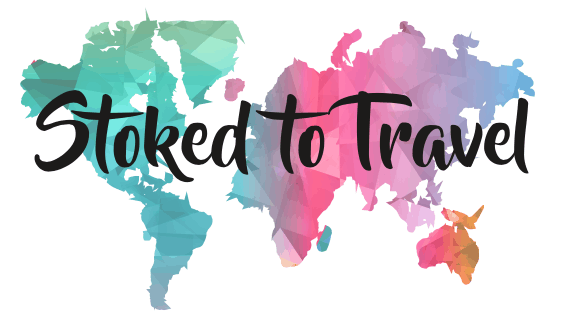
Complete Guide to Safari in Kruger National Park, South Africa
A safari in Kruger National Park, South Africa is one of those once-in-lifetime experiences for most people. Renowned the world over for its jaw dropping landscapes, true African experience, and of course, the animals – a safari in Kruger National Park is a must visit for any traveller so South Africa.
I have just returned from the most incredible few days in Kruger National Park. It lived up and exceeded every expectation I had. The animals, the lodge, the game drives, the weather, the true sense of wilderness. It was truly incredible. But I must say, I found it hard to plan.
In the months prior to my Southern Africa adventure, I really struggled with planning a trip to Kruger National Park. Keeping in mind the whole park is the size of some European countries, it’s pretty difficult to know where to start.
It’s a funny thing, because many South Africans living in Johannesburg or Durban will head to Kruger multiple times a year, in the same way a Brit might plan a weekend break to the Cotswolds or the New Forest. They have their favourite lodges or camps, they tend to self-drive and they are fairly self-sufficient. But for Europeans or visitors from the US and the rest of the world, it definitely doesn’t seem that straight forward. Not least because there are some of the world’s most dangerous predators just freely roaming around!
So that’s why I’m writing this guide, in the hope that this will help guide you in your planning process and shape up an epic trip to Kruger National Park. It is aimed at those planning their first safari adventure to Kruger. Feel free to skip ahead to certain sections in the contents box below too, if easier!
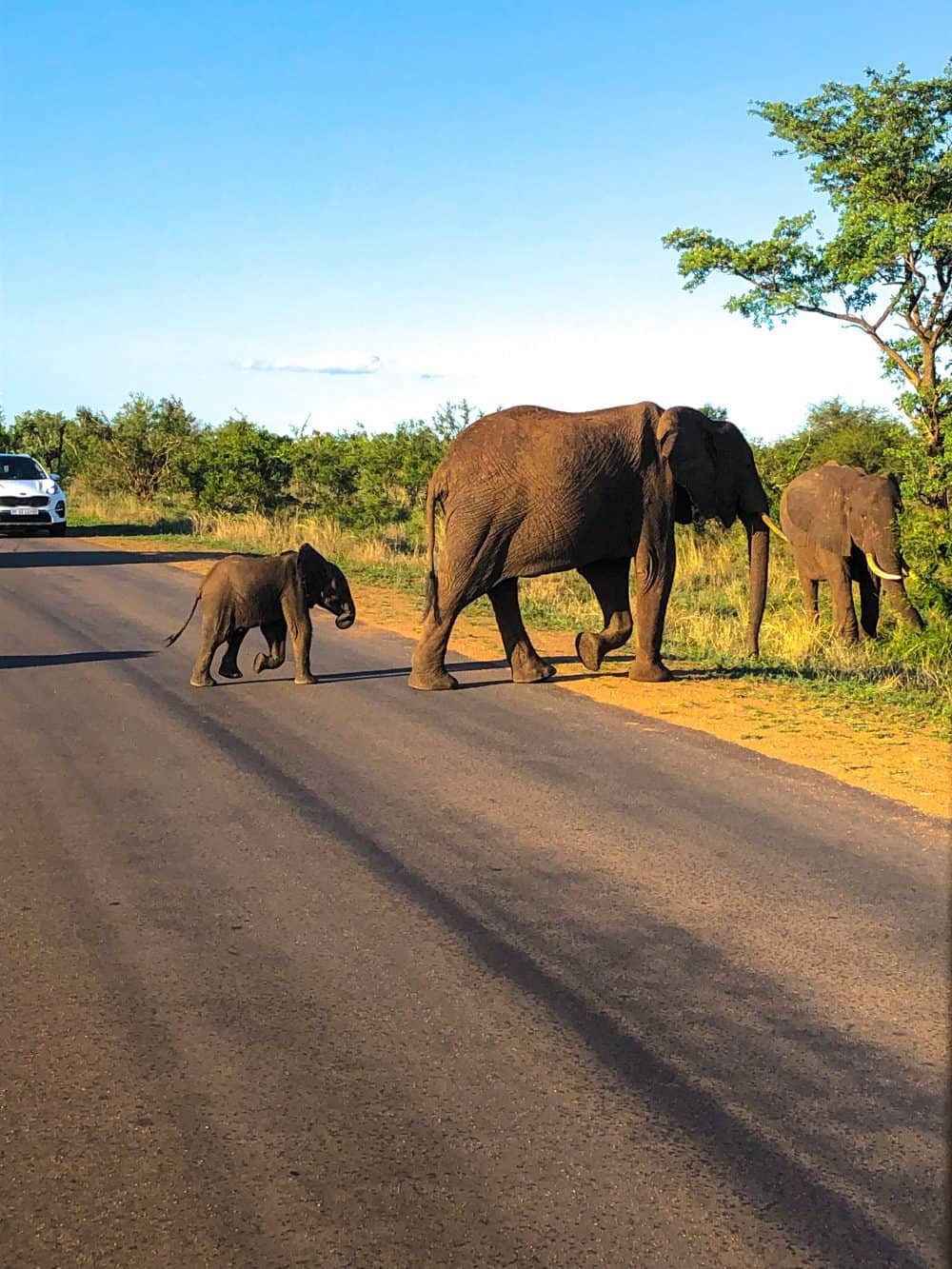
Safari in Kruger National Park – Everything you need for planning a trip
Where is kruger national park.
Kruger National Park is located in the north-east of South Africa. Kruger extends nearly 220 miles from north to south, and is about 40 miles wide – a large portion of Kruger actually borders with Mozambique too. It’s around 20,000 sq km in size, and home to more than 200,000 mammals, together with hundreds of variety of birds, reptiles and interesting insects.
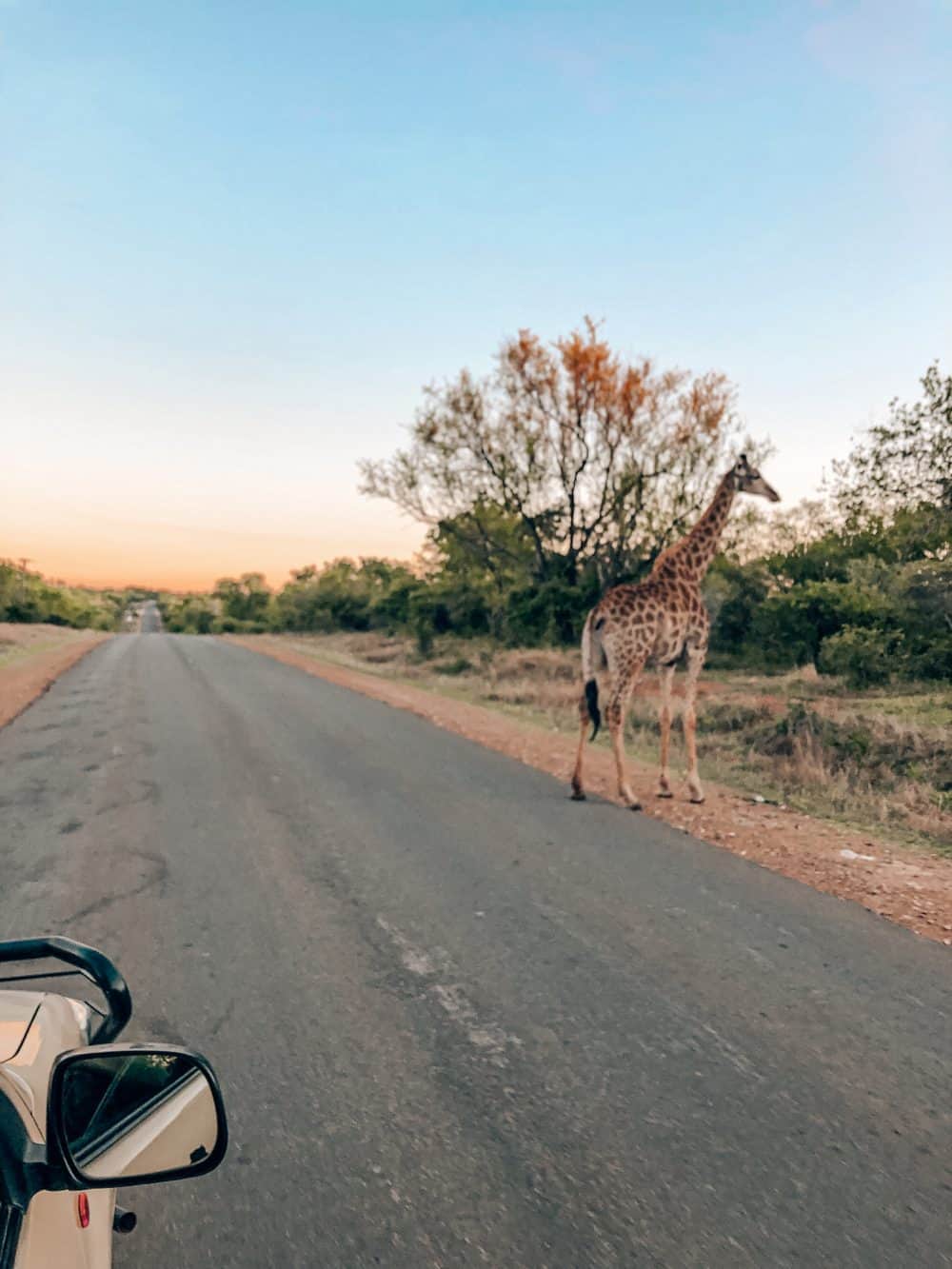
When is the time to visit Kruger National Park?
Kruger is an interesting place, as there isn’t really a bad time to go. Each season offers a unique experience, and different pros and cons.
May – September
The South Africa winter months are considered a great time to visit Kruger. This is by far the driest time of the year, which means the vegetation and the bush is less dense, and therefore it’s easier to spot animals. The low rainfall at this time of year means many rivers and waterholes are low or even dry, meaning the few that do have water are likely to have more animals at them. The temperature in the winter is warm during the day, but can be very chilly though the night. This may mean your sunrise or sunset game drives will be freezing!
This is the ‘high season’ and prices at hotels and lodges will be increased.
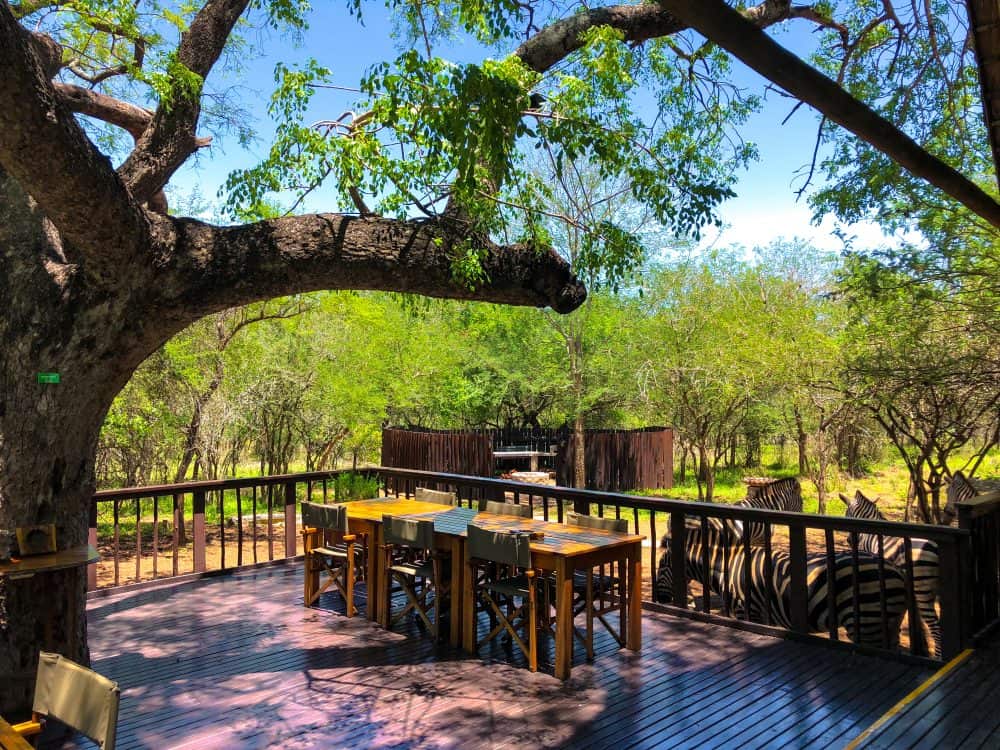
October – December
This is the South African spring and early summer months, which marks the start of the rainy season. The rivers may still be quite low, but flash rainfall is likely to mean the bush will be very green and quite thick. This makes it harder to spot animals. Daytime temperatures can push up to 40c and nighttime is cooler, but definitely not cold. Spring time is also a great time to see baby animals and newborns.
We went in November and experienced gloriously hot and sunny days, with cool and pleasant evenings. We also experienced an extreme tropical storm one evening that lasted about two hours and was easily some of the heaviest rain I’ve seen in my life.
January – April
Whilst the rest of South Africa is warming up and experiencing long and sunny days, Kruger is experiencing heavy rains. However, the landscape comes alive with stunning colours, from the vivid green of the bush to the deep blue of the rivers and lakes. Prices are lowest for lodges and camps at this time.

How many days to spend at Kruger?
Well, of course this comes down to what you’re looking for and the time you have. Some South Africans actually visit Kruger for two or three weeks at a time with their campervans and enjoy long slow days of animal spotting and braais (aka BBQs).
For most travellers from Europe or the US for example, it’s unlikely you’ll have this long to spare. Nor do you necessarily want to spend this long in a national park – there is such a thing as too much of a good time!
We spent three days in Kruger, which was great but I would have liked one extra day.
The animals are most active early morning and late in the evening, so sunrise and sunset drives are popular. However, this means early rises (in the summer months, this can be as early as 2.45am!) and late returns. As you can imagine, this can become quite exhausting.
Having three or four days for safari in Kruger National Park (or longer), really means you can make the most of the drives but also enjoy some much needed downtime. You’ll be surprised how much wildlife you see just from your poolside or your lodge/tent too!
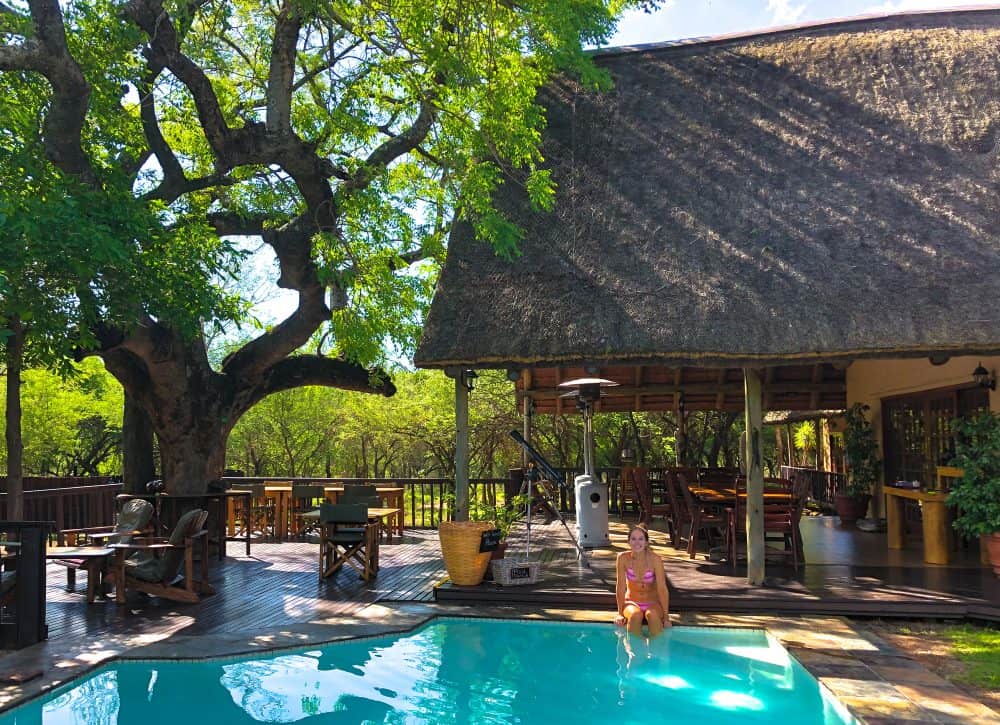
How to get to Kruger National Park
Choosing the best option for getting to Kruger depends on where you’re coming from, how long you’re spending in Kruger and of course, your budget.
The most expensive and most convenient way is to fly into Kruger. Depending on where your lodge is within the park, it’s likely that one of the three main airports will work for you. These are: Nelspruit (the biggest airport by far), Hoedspruit and the tiny airstrip at Skukuza (my favourite airport ever). The main air route between these is from Johannesburg, however, if you happen to go to Livingstone in Zambia (for Victoria Falls), then you might find the route from here to Nelspruit very convenient!
SAA Airlink (part of South African Airlines) is the main operator.
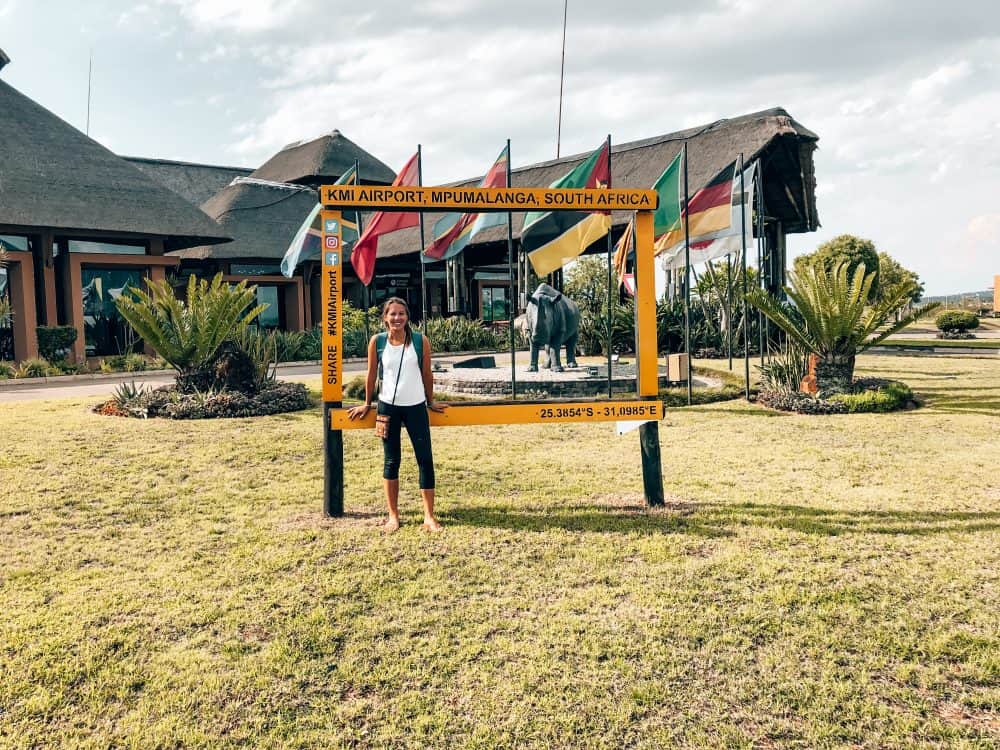
The least expensive (and slowest way) is to drive from Johannesburg. Google Maps says the drive is around 5-6 hours to Kruger, but some people do find it takes longer. The road conditions aren’t excellent and there are often a lot of dangerous crashes or incidents. However, it does of course afford you a lot of flexibility if you drive yourself. You can also arrange a transfer with a local company,.
Which area in Kruger to visit?
For me, the was one of the hardest things to work out. My dreams of staying in a luxury lodge with a private pool were quickly dashed when I saw the prices. Many of these are located near Skukuza in the southern-central part of Kruger. When I realised there was a very convenient direct flight from Livingstone to Nelspruit, it made most sense to find a location to go in the southern part of Kruger. I spent hours trawling websites to work out where had the best sightings of animals and most reliable weather.
It wasn’t an easy task and I ended up picking an area called Marloth Park, near to the Crocodile Bridge gate entrance. We ended up loving this location and exploring the southern part of Kruger.
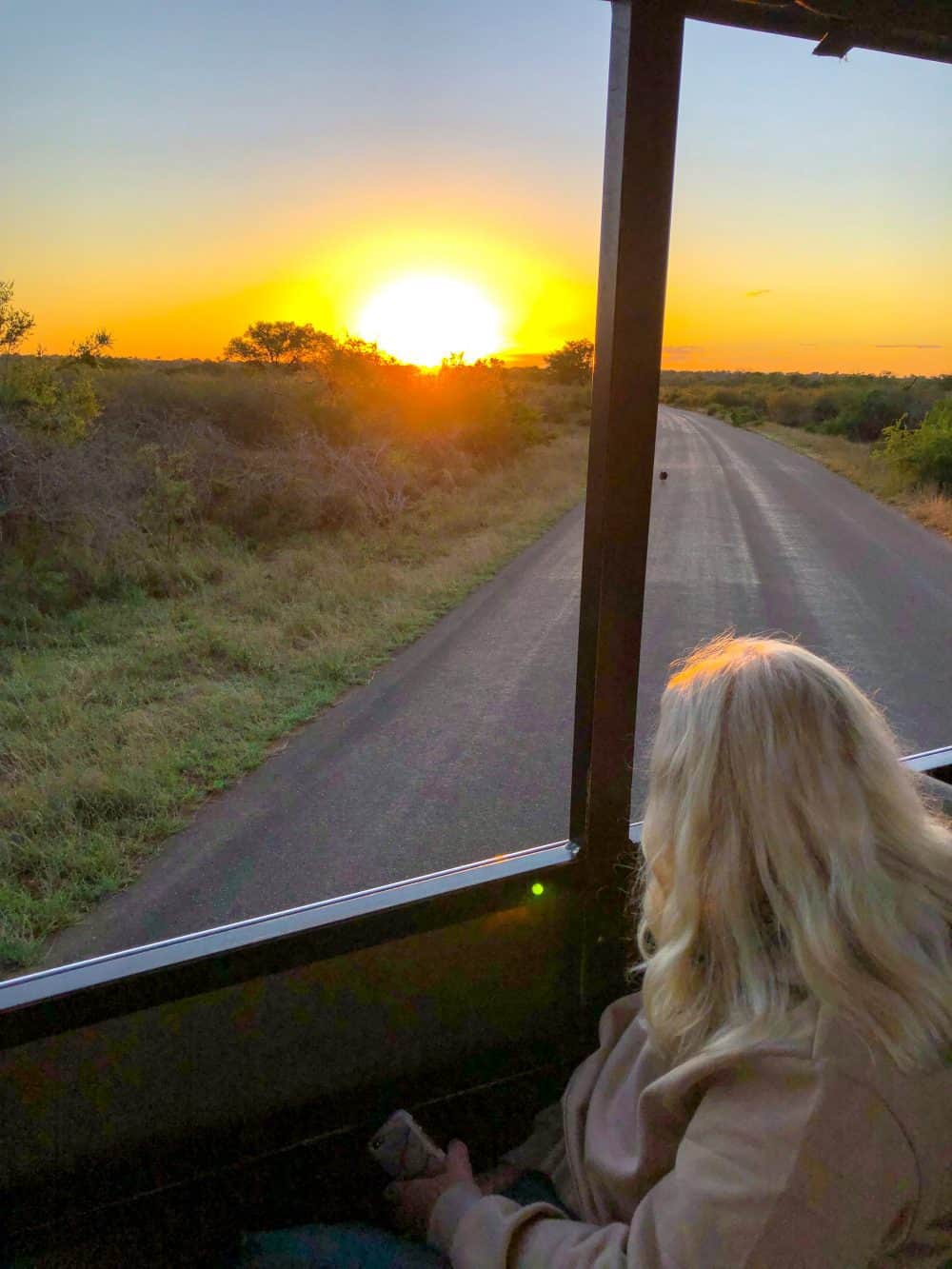
The southern region of Kruger is as mentioned, home to Skukuza airport and the Skukuza rest camp. This is the biggest camp in Kruger with a great number of activities and facilities, therefore making it a great base. Game viewing is also considered to be really good in the southern region.
The central region of Kruger is also known for excellent viewing and having several good camps, such as Satara and the beautiful Olifants camp, with its impressive clifftop location.
Up in the northern part of Kruger, game viewing is considered slightly less, but it’s quieter in general and makes for a very relaxing stay.
The other thing to factor is whether to stay in Kruger, or just outside of it. Where possible, I would recommend staying in Kruger or as close as possible to the gates.
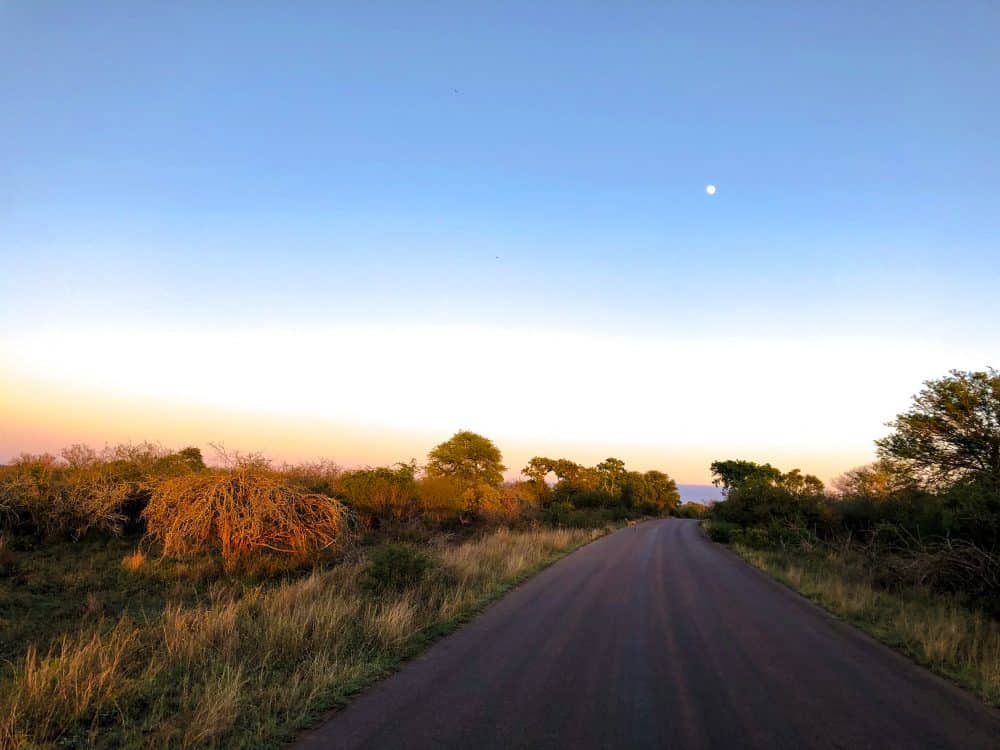
For example, if you fly into Nelspruit and opt to stay in one of the towns near here like Hazyview or White River, not only are they a bit industrial and bland, but you’re not really sleeping amongst the wildlife. Instead, an area like Marloth Park is a little further to drive initially from the airport (1 hour), but so much closer to the gate to start your game drives and also, right in the heart of the wildlife.
Kruger National Park really varies from north to south, from weather and wildlife, to flora and fauna.
Whilst it is often acknowledged that the southern portion of Kruger has the best chance of seeing the Big 5, if you visit the northern portion, you can also do the epic Blyde River Canyon drive.
Book a Blyde River Canyon panoramic drive and Kruger visit here
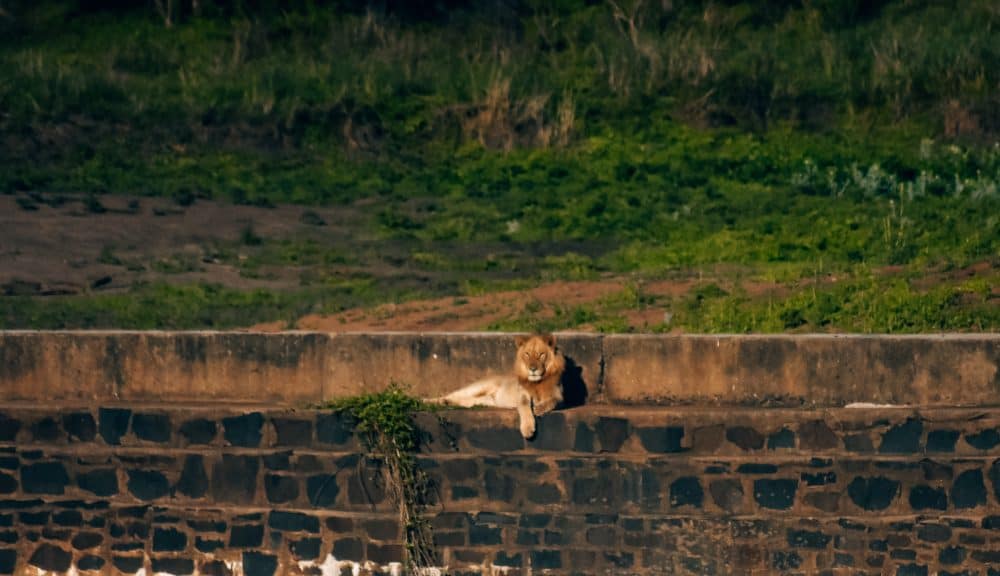
Entrance/exit times for Kruger National Park
Assuming you’re doing your drives with a ranger, you’re unlikely to have to be too concerned about gate entrance opening and closing times. But it’s worth noting that each gate opens just before sunrise and closes around sunset. Whilst they don’t physically lock you inside the park if you’re late to go back to the gate, you can be given a hefty fine.
Night drives cannot be done independently and you have to go in with an official SANpark game ranger.
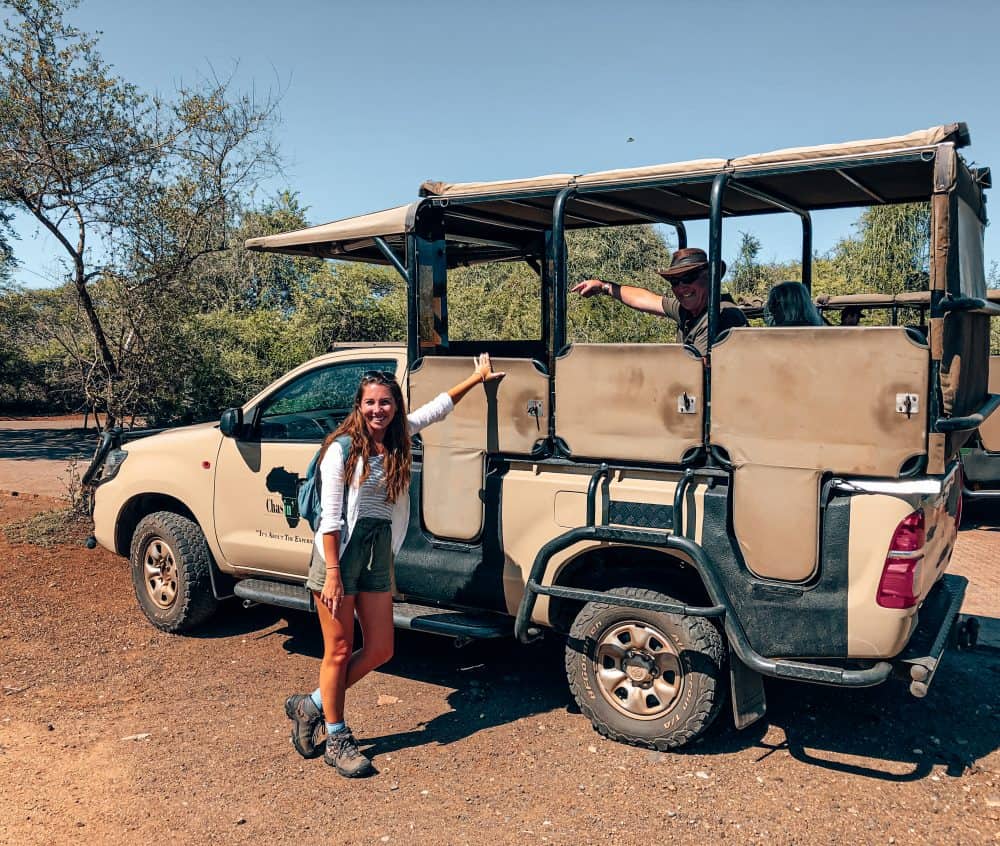
Entry fees for Kruger
Again, if you do drives in the park with official SANpark game rangers, the entry fees will be included in the cost of your drive.
If you join an independent guide for a drive, or self-drive, you’ll have to pay the Kruger Park entrance fees.
As of January 2020, these are:
International visitors: R400 per adult per day, and R200 per child per day. This is about £20/USD27 per day, or £10/USD14 per day.
South African Citizens and Residents (must take ID): R100 per adult, per day and R50 per child per day.
You can buy these at the gate by visiting the small adjacent hut and filling in some forms. The SANParks site here has further information on entry fees and other formalities.
As you can see, a safari in Kruger National Park can add up over several days – but it is so worth it!

Public Game Reserves vs Public Game Reserves
Kruger is a national park, run by government organisation SANparks. Animals are completely wild and run freely in Kruger.
A private game reserve is located on land owned privately, and often have fenced boundaries. The private reserves have all the same animals, but they’ve been brought into the area. The numbers of animals in a private reserve are typically far less, but as the ground surface area is less, you can actually have a higher chance of seeing animals. For example, at Sabi Sands, famous for its close-up leopard sightings, you may actually see less packs or herds of animals moving around. So this definitely comes to personal preference and what you’re looking for. In a private game reserves, all drives are guided, but in Kruger NP it’s both self-driving and guided drives.
When you go to a private game reserve, you’re not technically in Kruger. You’re in the area considered as Greater Kruger National Park, which is the title given to all the reserves adjacent to the national park, as well as the ones within.
Private game reserves often only have high end accommodation lodges, but public game reserves will have a variety to cater to a wider range of visitors.
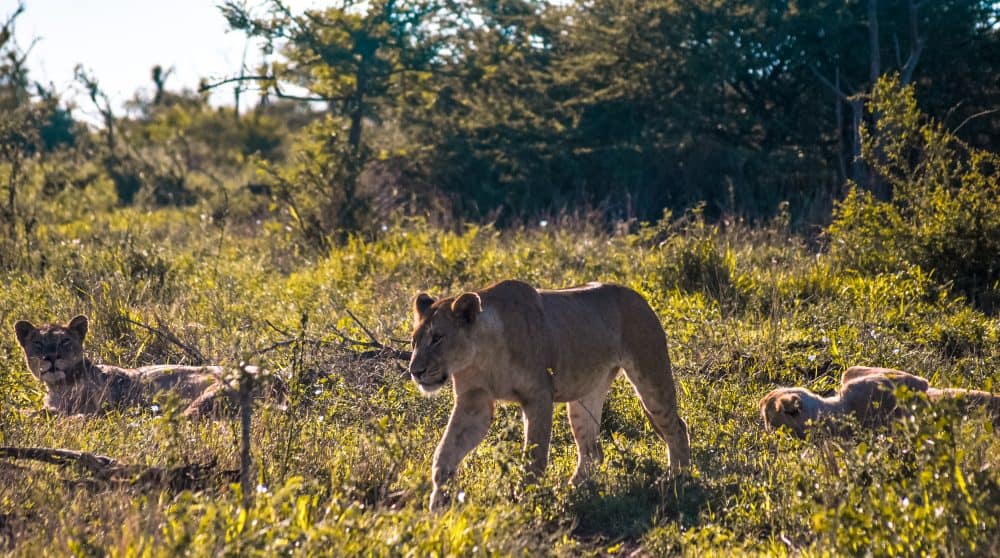
Deciding Where to Stay in Kruger National Park
Generally, there are main accommodation types to choose from:
- SANpark owned and run ‘rest camps’ within the park
- High-end private lodges within the park
- Hotels located near to the entry gates (or further afield)
These are the government run camping grounds located with fenced off areas within Kruger Park. These are popular with South African families, groups or couples looking for a budget-friendly accommodation option in the heart of the action.
I would say less foreign tourists stay in these, partly due to the fact that you’d mostly need your own car to get to them or to arrange a transfer.
One such camp is Lower Sabie Rest Camp , for example. This is one of the bigger rest camps with Kruger, offering camping spots, spaces for caravans and motorhomes, safari tents, and small rondavels (a type of hut), with varying amenities. These range from around £15/$20 from a camping spot, to ensuite cottages/huts for around £120/$160 a night.
There are around 10 or so of these camps throughout Kruger. They all have electricity, a first-aid centre, a supplies shop, braai-ing areas (BBQs) and communal kitchen facilities. There is often a laundromat/laundry and a restaurant and a cafeteria. You might also find a petrol station.
It’s good to know also that many of these cater to disabled tourists too.
You can book stays at official rest camps through the SANparks website here . In the high season, you might want to book your stay well in advance to guarantee it.
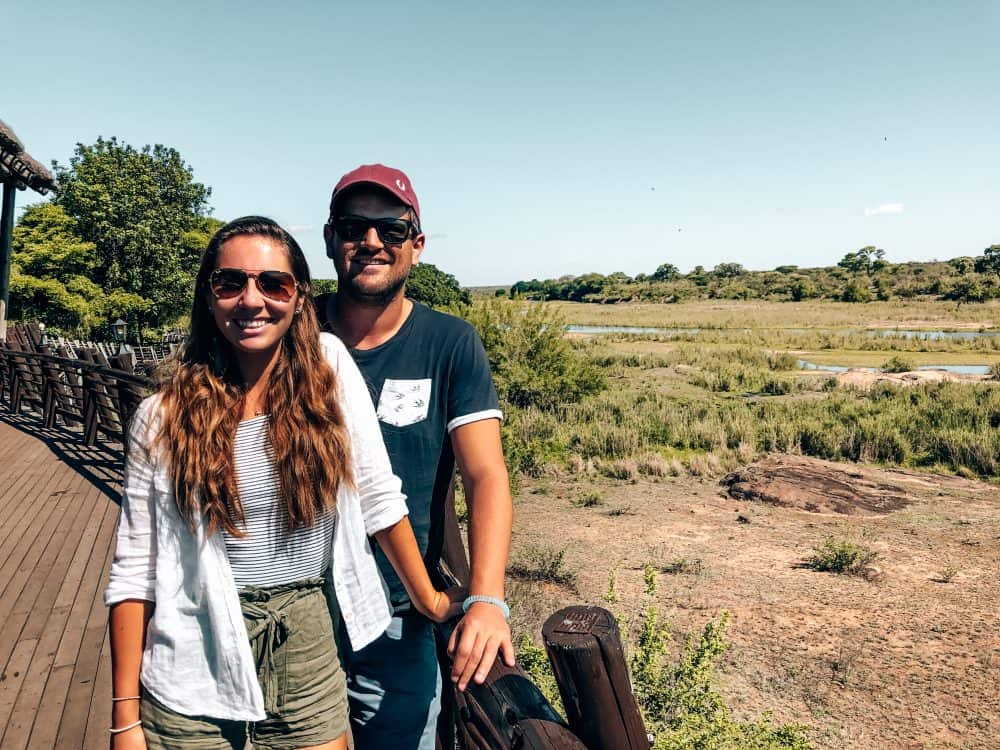
High end private lodges
By far the most expensive option, staying in a private lodge is the most luxurious way to stay in Kruger. It is definitely the bucket list-worthy option, for sure!
These lodges give you the full and complete safari experience. Not only are the lodges themselves beautiful, often with thatched roofs and private pools, but you’re also likely to stay on a full board basis. This means three fine meals a day, and your game drives included. You can expect fancy linen and toiletries, air conditioning, butlers, luxury open air showers and even gyms. Some even have beautiful spas too. And with this, you can often expect to pay in excess of £1,000 per night.
I’ve listed some of the best private lodges in Kruger below, all of which are stunning luxury places to stay:
- Lion Sands – Tinga Lodge
- Thornybush Simbambili Lodge
- Inyati Game Lodge
- Leopard Hills Lodge
- Idube Game Reserve
Lodges and hotels outside of Kruger
So the final option is to stay in a far more affordable lodge or hotel outside of Kruger. These are often located near the gates or within a 20-30 minute drive. Then to be on a B&B basis, with lunch, dinner and other activities all arranged as add-ons. These kinds of hotels and lodges generally offer the best value for money, and still a wonderful authentic safari experience.
Here’s a few suggestions:
- Protea Hotel by Marriott Kruger Gate
- Jock Safari Lodge
- Maqueda Lodge
- Grand Kruger Lodge & Spa
- Needles Lodge
Needles Lodge, Marloth Park – Our Experience
After much research and deliberation, we decided upon Needles Lodge located by the southernmost gate of Kruger. This area was called Marloth Park.
Location wise, the lodge was just 1 hour from Nelspruit airport, and around 3 hours from Skukuza airport. From the lodge to the nearest gate (Crocodile Bridge), it was around a 25 minute drive.
Our lodge was absolutely beautiful, like staying at a large family home. Animals such as zebra, ostrich and mongoose just wondered freely through the property, even right on up to edge of the raised dining area.
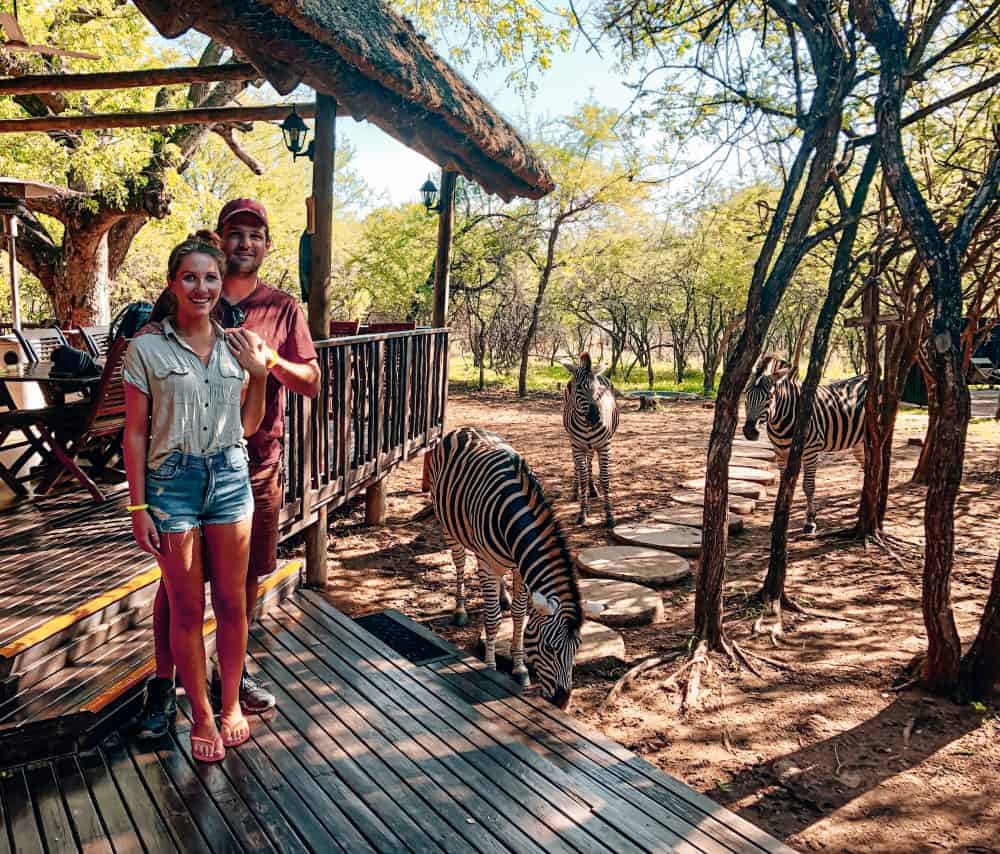
There was a delightful pool, sunloungers, a telescope, a huge lounge area with a TV, books and boardgames and lots of spaces to relax in. We also loved our room, which was huge with beautiful art and wooden furniture. I couldn’t recommend staying here more, especially for a more affordable stay.
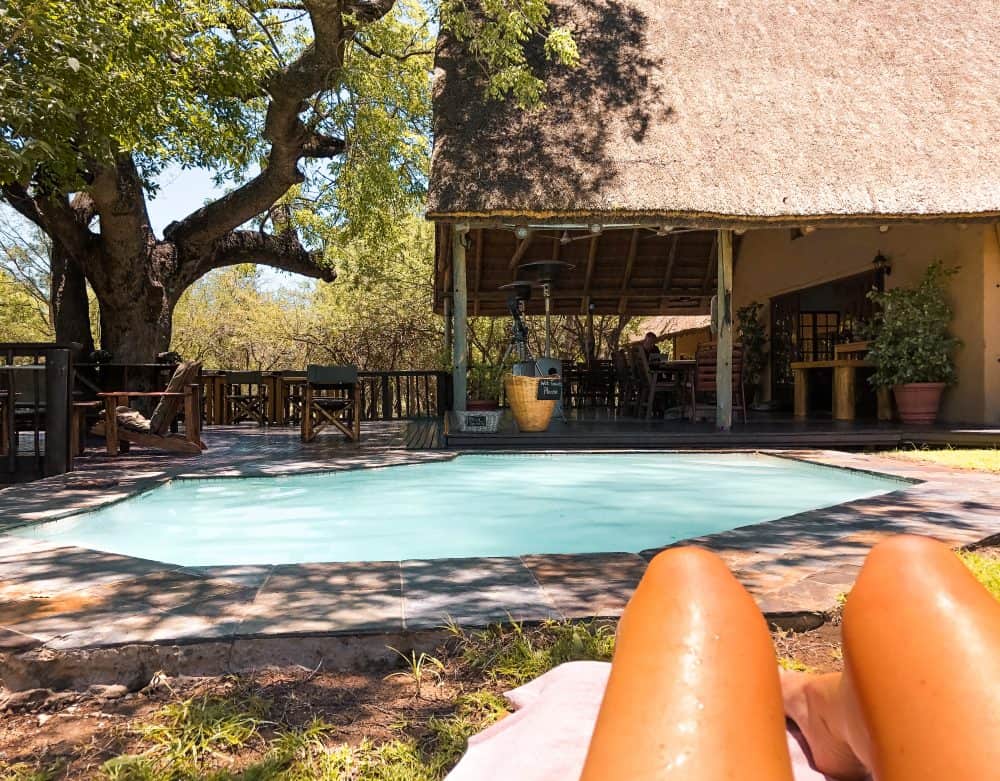
We also found the food to be excellent, and included lunch and dinner in our stay. The team cooked us up some wonderful dishes which we ate alongside our fellow lodgers. Just fantastic!
Check rates for Needles Lodge here
Other facilities in Kruger
Inside the park, there are many services and facilities to help tourists. After all, some people come here for weeks at a time!
Petrol stations: Inside the park, you’ll find several petrol/gas stations. There are also some at the entry gates.
ATM/Banks: There are only a couple of ATMs inside, and mostly at the larger rest camps like Skukuza or Letaba.
Shops: There are many shops throughout the park selling Kruger themed gifts and things like carved animals etc. You can also find braai–ing equipment, food, drinks and essentials like suntan lotion or toiletries inside.
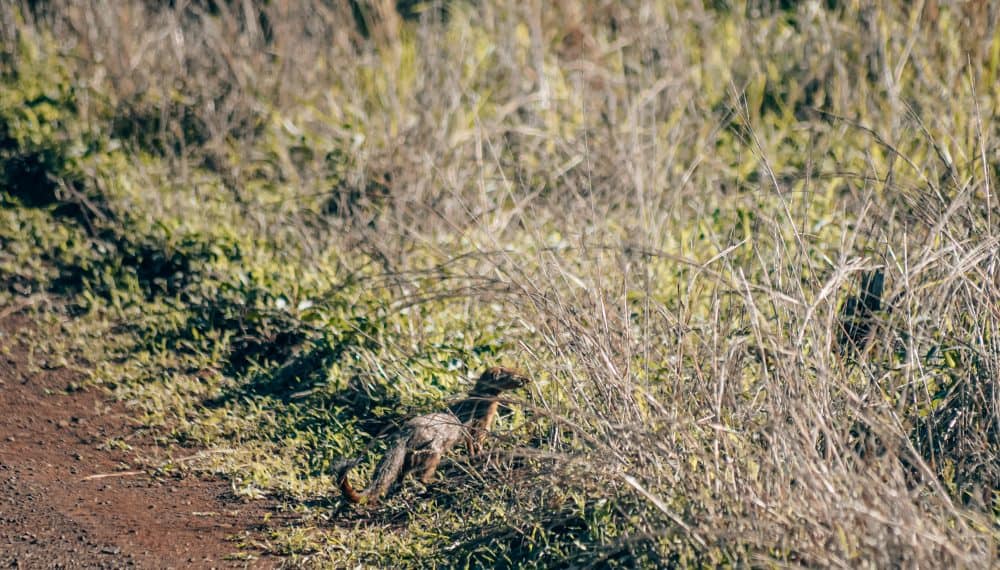
What to wear and what to take to Kruger
Dressing for safari is definitely a thing. If you do any kind of walking safari, you absolutely must dress in sand/khaki colours and your guides probably won’t let you go in any kind of bright colours at all.
If you’re doing guided drives, it matters less what colour you wear as you’re strictly not allowed to get out the jeep. However, I definitely felt more the part wearing my cream, khaki and sand coloured clothes!
For a safari in Kruger National Park, you may need several layers if you’re starting your game drive early in the morning, especially in the winter months (May-September). A large jacket and long trousers, and lighter clothes to peel off to as the temperature rises. For evening game drives (or night drives), you’ll definitely need long sleeves to protect yourself against bugs. The jeeps are opened sided so you are exposed to the elements, and the insects!
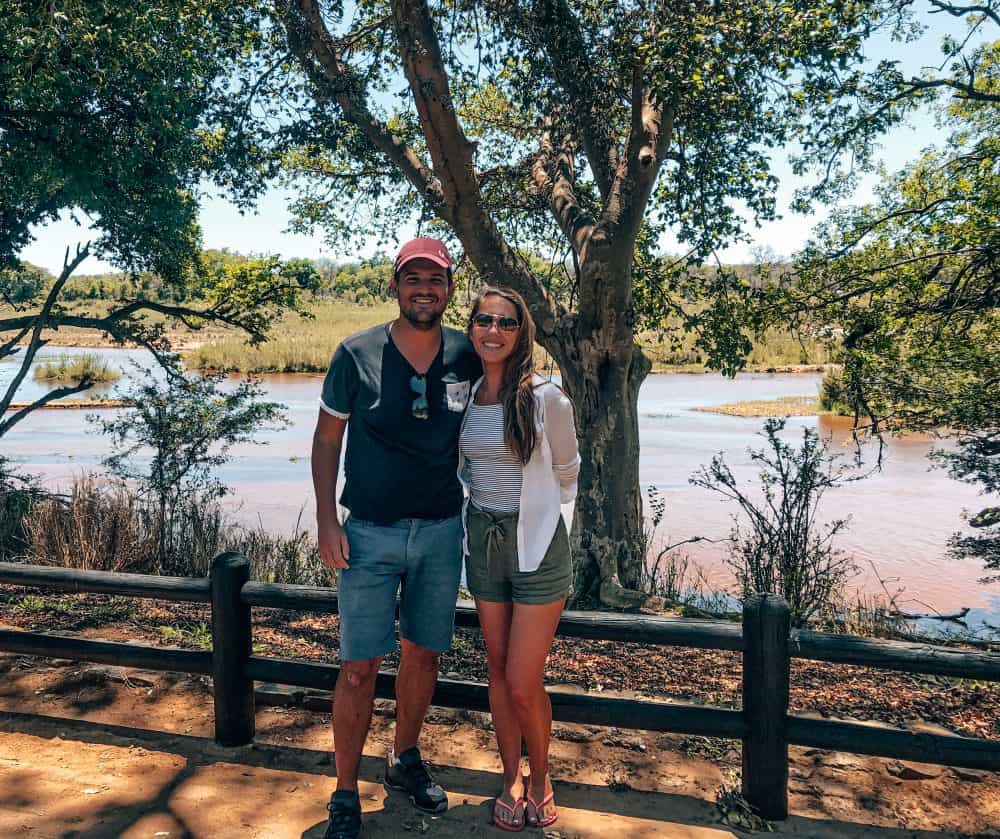
Most jeeps or lodges will have warm ponchos or blankets to wrap around yourself too. When the jeep gets going, the wind can really whip up and surprise you with how chilly it can feel!
In terms of other things to take on safari, I’d definitely recommend a good camera with a good zoom if you want to capture good animal shots. iPhones are unlikely to always cut it, especially if the animal is quite far away.
You could bring your own binoculars but your lodge or driver may have these, as well as high beam torches.
Otherwise, you actually don’t need to take too much else!
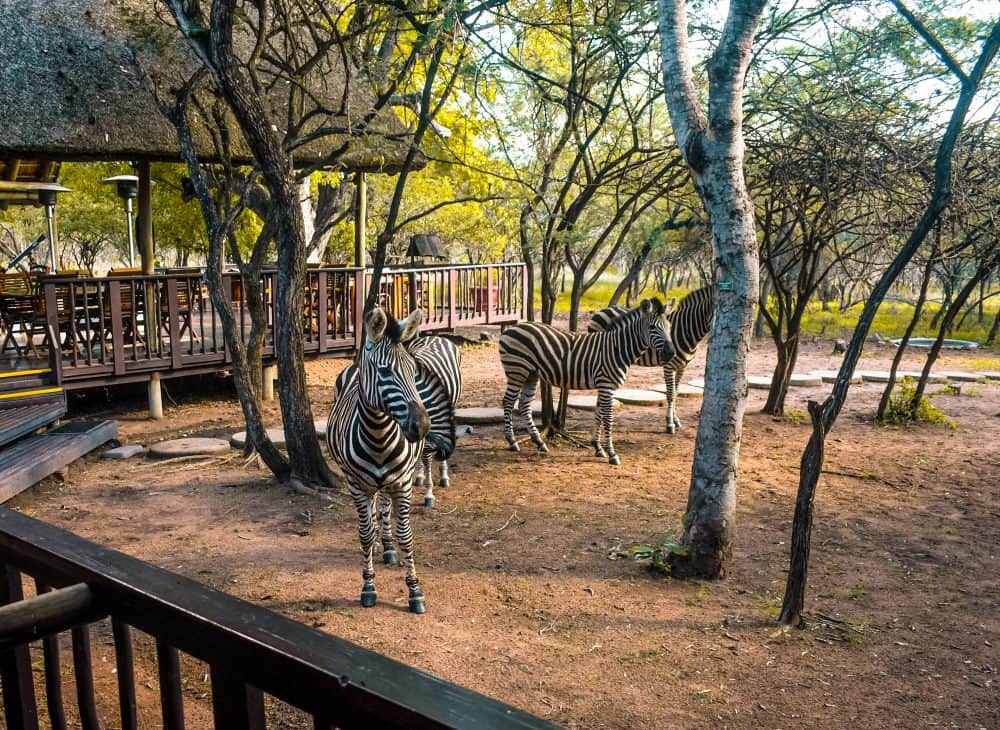
Malaria and other health risks in Kruger
There is a risk of malaria whilst on safari in Kruger National Park, and it is advisable to take malaria tablets for any length trip. Bite prevention is highly recommend, and most lodges have mosquito nets too. Bring lots of bug spray!

Self-drive or guided game drives?
For most overseas travellers to Kruger, it is most likely you’ll want a guided game drive. This means not only do you not have to worry about the driving part, and can fully focus your energy on spotting wildlife, but you’ll also enjoy the benefit of an experienced and highly knowledgeable guide.
Of course, some people will still prefer to pick up their own hire car and self drive Kruger National Park. If you do this, my top tips for self-driving in Kruger are:
- Arrive to the gate really early, especially on weekends or public holidays as the queues grow quickly
- There are also only so many vehicles permitted per day
- Bring thermos and snacks in the car
- Note on the map your nearest petrol stations, and if you pass one, always fill up, just to be on the safe side
- Ask passing cars about sightings – 99% of people will be keen to help
- Remember to not get out your vehicle unless in designated parking areas
- Stay on the marked roads and don’t exceed 50kmh
- Do not litter – this should be obvious! Bring a litter bag

Booking a safari or game drives in Kruger National Park
As I’ve mentioned above, your lodge will be able to arrange game drives for you. These might be included in your ‘full board’ stay, or you may have an activities booklet to choose these from.
If you’re after something a little more bespoke for your safari in Kruger National Park, then another idea is to contact a local company. There are hundreds to pick from, which again can seem a little daunting. I came across Chasin’ Africa through TripAdvisor and couldn’t recommend the company more.
Not only did the team at Chasin’ Africa completely understand my request (a 7 hour game drive finishing at Skukuza airport and therefore taking our luggage), but it was arranged with such ease. I paid in advance through their payment portal and it was all very straightforward. I spoke to Leanne at Chasin’ Africa and she was happy to answer all of my hundreds of questions too!
We had already decided upon accommodation, but Chasin’ can also help you with this too. You can also check their amazing TripAdvisor reviews here too.
One thing I’d keep in mind when arranging your game drives is that it is definitely better having less people in the jeep. More so than you could expect.
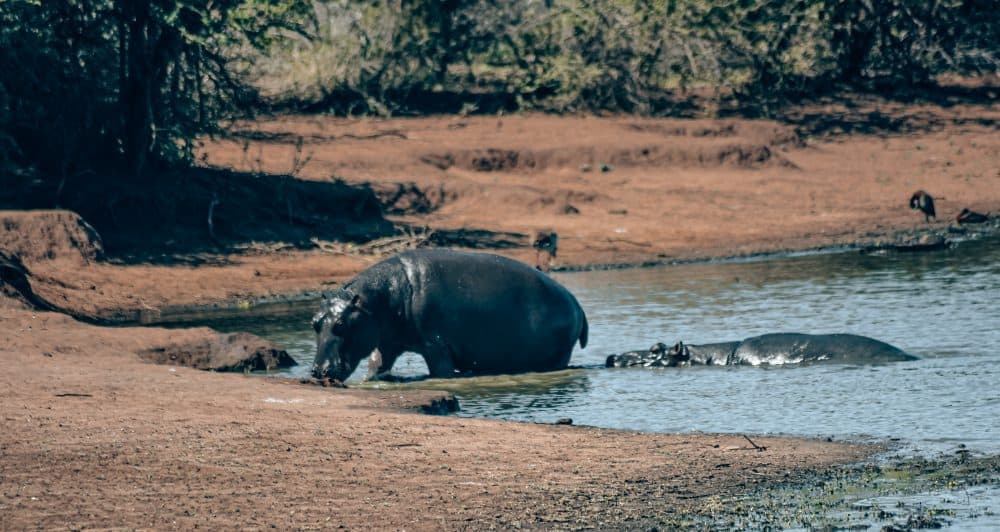
So there you have guide to a safari in Kruger National Park, South Africa.
I think a safari experience at Kruger is truly one of the best experiences to be had. South Africa too is one of the best countries I have ever been to, and if you’re doing a longer trip around the country do check out my other posts. I’ve got a comprehensive guide to the Garden Route and an article detailing the best beaches in SA .
I’ve written Cape Town itineraries , as well as a guide to the best places to eat in Cape Town , day trips from Cape Town and a complete guide to day trips from Cape Town .
Feel free to drop me a line if you would like any advice or further recommendations for planning your safari in Kruger National Park. If you’ve enjoyed this guide to Kruger, then please do share using the below links!
Wanna see more? Check my Instagram here , my Facebook here or my Twitter here !
Disclaimer: This visit to Kruger National Park was entirely paid for by myself, and there was no involvement from the tourism board or a hotel. This is an independent guide.
Enjoyed my guide to a Kruger National Park safari? Pin it!
You may also enjoy:
Visiting essaouira from marrakech: essaouira travel …, chobe national park, botswana: day trip …, how to visit the penguin beach …, cape town guide: the best things ….
I have been dying to do a safari in South Africa, this looks incredible. Thank you for sharing
Omg this looks amazing, especially the lodge with the zebra! This is a bucket list item for me – we’re going to do a safari for our honeymoon, although I think we’ll go to the Serengeti rather than Kruger. But Kruger looks really amazing too!
Sounds like this was an amazing experience! I can’t wait to go on safari one day
thanks for sharing! there is so much confusing info out there so this was super helpful!
Thanks for the info. .I am planning for 2 nights in Krugger. .1st I am driving from Johannesburg to Marloth Park and stying there. .2nd day going for full day self drive safari. . and will stay at Crocodile rest camp. .next morning will do sunrise safari (govt.one /Sanparks)and after noon we will head back to blyde river canyon.plz suggest any better plan if required. .or is it right?? Does SANPARKS safari start from only Crocodile rest camps?
Hi Rajdeep, that sounds like a good plan but quite busy for a 2night trip! The SANPARKS organised safaris also start from other rest camps in Kruger though- hope that helps!
Leave a Reply Cancel reply
Your email address will not be published. Required fields are marked *
Let’s connect
Wild Wings Safaris
When to visit the kruger national park, december to march.
December lion
- This is the height of summer and daytime temperatures can soar to well above 35° C (up to 100° F).
- At night it cools down to 20° C.
- The rains take the form of dramatic thunderstorms, or sometimes a soft drizzle, that can last for a couple of days.
- It is a time of abundance: there are lots of baby animals and, therefore, lots of predators and action.
- The bush is lush and green, some flowers and trees are in bloom.
- The birdlife is prolific: many seasonal and migratory birds can only be seen during this time.
- Game viewing can be a bit more difficult due to the lush, thick vegetation but it's very rewarding and you will still see plenty of wildlife.
- Kruger is truly a year-round destination and even the summer months won't disappoint!
April and May
April elephants
- The start of the dry season and a superb time for going on safari
- Animals start returning to the rivers and waterholes as the rain puddles dry up.
- The bush starts turning from green to brown and it becomes easier to spot wildlife.
- Migratory birds start to head north.
- Temperatures are not as hot anymore but days can still be around 25-30° C, the early mornings can be chilly.
June to September
June giraffe
- Winter is the dry season and peak safari time in the Kruger Park.
- Animals flock to the remaining water sources and one can spend some very productive time waiting at waterholes for animals to come and drink.
- Predators lie in wait for their prey near the waterholes and exciting game viewing is guaranteed.
- The bush is drier and starts thinning out as the remaining grass gets trampled and eaten.
- By the end of the dry season, the ground is barren and dusty, especially if the preceding rainy season was below average.
- During the day it is often warm and sunny (20-25° C) but at night the temperature can drop to 10° C or below.
- Bring warm clothes for the morning and evening game drives.
October and November
November impalas
- The height of the dry season and the start of the rainy season.
- There's a definite air of expectancy as the animals and bush eagerly await the rains.
- The first rains can fall as early as September, but often the bush stays dry until October and only sees decent rains in November.
- When the rains are late, many waterholes dry up and animals desperately compete for the remaining water sources.
- Before the rains, the bush is dry, dusty and what little grass remains is brown and trampled.
- The game viewing can be spectacular.
- Expect hot weather during the day, reaching well above 30° C on most days, sometimes up to 40° C.
- During November, soon after the first rains, the impala ewes give birth in their thousands and the time of abundance begins again.
- The bush transforms within a matter of days from lifeless to blooming, from dusty brown to vivid green.
- This is an exciting time to be on safari, perhaps one of the best times to visit Kruger .
Combining Kruger with other destinations?
Ask us for expert advice on the ideal time to go to get the best out of multiple destinations. Read more about Kruger in our Kruger Park Travel Guide .
Please keep in mind this is a rough guideline only. Every year is different.
See our recommended Kruger Park Safaris .
Kruger's climate month by month
You may also want to look at
5 day kruger park and private lodge safari.
A guided safari in Kruger Park (using the national park camps) is quite different to a safari at a private game lodge. Both have their advantages. This trip idea combines two nights in Kruger, followed by two nights at a private game lodge for you to experience the best of both worlds. All game drives in open vehicles with expert and knowledgeable guides.
4 Day Kruger Park Budget Safari
The 4-day Budget Kruger Park Safari is easy on your budget and big on game viewing. This small group, fully-guided safari in Kruger National Park overnights inside the park with scheduled departures from Johannesburg or Nelspruit. Custom departure dates may be arranged (additional cost applies). Book early to avoid disappointment!
This price range is intended as an estimate only. The exact rate will depend on type of room, date of travel, and number of people. Please contact us to secure the best available rate for this property.
Need help with your trip?
Why not chat to one of our safari experts who can answer all your questions and help you design your dream trip to Africa.
You are using an outdated browser. Please upgrade your browser to improve your experience.
For a unique adventure check out our Trans-Serengeti Balloon Safari!
Best time to visit kruger national park, south africa..
A month by month guide to the best time to visit Kruger National Park
29 Jan 2024
01 feb 2024.

The Dry Season runs from May through to September:
- This is a great time for wildlife viewing as the vegetation is sparse, and animals tend to gather around water sources.
- It’s cooler so more comfortable for safaris, especially in the middle of the day.
- It’s the lowest risk period for malaria.
- It's a busy time so the park can be more crowded, and booking well in advance is a good idea.
The Wet Season runs from October to April:
- The greenery is lush and there are lots of young animals.
- Birdwatching is particularly good as migratory birds are present.
- The temperatures are hotter, with higher humidity, so less comfortable for some.
- Occasionally some roads may be impassable due to heavy rains and flooding.
- This is also the high-risk period for malaria, so precautions are necessary.
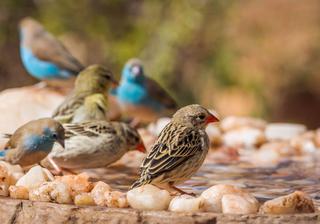
January & February
Although both months fall in the wet season there are still plenty of good reasons to visit Kruger.
Abundant Birdlife : This is a great time for birdwatching in Kruger . Many migratory bird species have arrived, adding to the park's already diverse bird population. You can spot colourful birds like bee-eaters, European Rollers, and various raptors including Wahlberg’s Eagle and Steppe Eagles.
Green and Lush Landscape : Due to the recent rains, the park is lush and green, the flowers are in bloom and the vegetation at its peak. This makes for stunning scenery and great photo opportunities.
Baby Animals : Many animals give birth during the wet season, so you have a chance to see young animals, including adorable baby elephants, lions, and leggy new born impalas.
Less Crowded : Compared to the dry season, these months see fewer visitors, which means you may have a more tranquil and intimate safari experience without too many other vehicles around.
Photographic Opportunities : The soft, diffused light during overcast days can be ideal for photography. The lush greenery and colourful birds provide excellent subjects for photographers.
Lower Accommodation Rates : Generally accommodation prices are slightly lower from mid-January through February, making your trip more budget-friendly.
However, there are some minor ‘cons’ to keep in mind for a visit during the rainy season:
Rain : January is part of the wet season, so be prepared for occasional rain showers and thunderstorms. Some roads may be impassable due to flooding.
Malaria Risk : The wet season is also the high-risk period for malaria in the Kruger region, so you should take necessary precautions.

March & April
In March and April Kruger transitions from the wet to the dry season and offers a unique set of highlights and experiences. Here is what you can expect from a visit to Kruger at this time of year:
Changing Landscape : You'll start to see signs of drying vegetation, which can create a beautiful mix of greenery and the first hints of autumn colours.
Lower Malaria Risk : March marks the beginning of the low-risk period for malaria in the Kruger region. Precautions are still advisable, but the risk is lower than in wetter months.
Wildlife Watching : Wildlife viewing can be rewarding as animals are still active, and the vegetation is not as dense as it will be in the dry season.
Fewer Crowds : March and April (apart from Easter Holidays) are still quieter months in terms of tourist numbers compared to the peak months of June to August. You can enjoy game drives with fewer crowds and more solitude in the wilderness.
Predator Activity : Predators are still active in March and April, and you might have the opportunity to witness exciting predator-prey interactions as animals gather around remaining water sources.
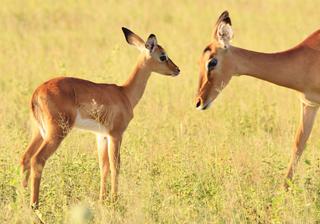
May & June
This is an excellent time to visit Kruger National Park, with superb wildlife viewing, pleasant weather, and fewer crowds. Here are some highlights to look forward to during a visit at this time of year:
Optimal Wildlife Viewing : May and June are considered some of the best months for wildlife viewing in the Kruger area. The dry season is in full swing, vegetation is becoming sparse, and animals are drawn to the remaining water sources, making them easier to spot. You have a higher chance of encountering the Big Five (lion, leopard, elephant, buffalo, and rhinoceros) and other iconic African wildlife at this time of year. Predators are highly active during this period, providing opportunities to witness thrilling predator-prey interactions.
Migration of Herbivores : This time is the beginning of the annual migration of herbivores, particularly impalas and zebras, as they move toward the riverine areas in search of water. This migration can attract predators like lions and cheetahs, leading to exciting wildlife sightings.
Comfortable Weather : May & June offer mild temperatures, making it a comfortable time to explore the park. Days are warm, but not scorching, and evenings can be cool, especially in the southern part of the park.
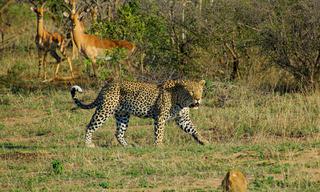
July & August
These are the peak months for wildlife viewing and safari experiences (and visitor numbers!) in the Kruger area due to the dry season and its associated highlights.
Predator Activity : With wildlife congregating around limited water sources, predators are highly active during this time. You may witness thrilling predator-prey interactions, including lion and leopard sightings.
Photographic Opportunities : The dry landscapes, clear skies, and excellent lighting conditions during July and August create perfect opportunities for photography. The contrast between the golden savannah and wildlife makes for stunning shots.
Comfortable Weather : July and August offer pleasant daytime temperatures, making it ideal for daytime safaris. While it's cooler than the scorching months to come, it's not too cold, ensuring a comfortable safari experience.
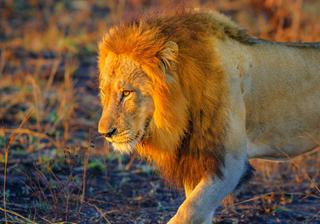
Wildlife visibility : September marks the end of the dry season in Kruger National Park, and it's a transitional period leading into spring. During this time, water sources become scarcer, causing wildlife to congregate around the remaining waterholes. This concentration of animals makes for excellent game viewing opportunities. You're more likely to see the Big Five (lion, leopard, elephant, buffalo, and rhino) and other wildlife species as they come to quench their thirst, providing some of the best wildlife encounters of the year.
Additionally, the lack of dense vegetation due to the dry season makes it easier to spot animals, enhancing your chances of witnessing various species, including predators, in action.
Fewer Crowds : While September is a popular time to visit, it's not as crowded as the peak months of July and August. You can still enjoy a relatively quieter safari experience with fewer vehicles around.
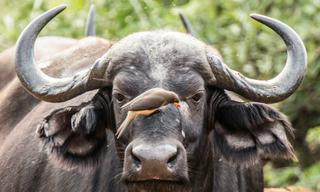
October & November
These months herald the arrival of spring in the Kruger:
Baby Animals : The herbivores give birth at the onset of the rainy season and you may have the opportunity to see cute baby animals, including impalas, wildebeests, and zebras. This makes for great photo opportunities too.
Birdwatching : October & November are good months for birdwatching in Kruger. Resident bird species are active, and there are still numerous migratory birds to be seen.
Photographic Opportunities : The changing landscapes, lush greenery, and wildlife interactions provide excellent opportunities for photography. The bushveld begins to bloom with vibrant spring blossoms in October, adding to the visual appeal of the park. The landscape is lush and green, creating beautiful scenery. You can capture images of the contrast between the young animals, vibrant foliage, and other wildlife.
Fewer Crowds : October and November are typically less crowded than the peak months of July and August, making it a more peaceful time to visit with fewer vehicles around.
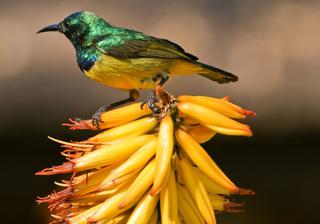
December in Kruger National Park is the beginning of summer and the Green season. Here’s what you can expect from a visit at this time of year:
Lush Greenery : December marks the peak of the rainy season, and as a result, the landscape becomes lush and vibrant. The bushveld is covered in green foliage, creating beautiful scenery and a dramatic contrast with the wildlife.
Birdwatching : December is an excellent month for birdwatching. The park is alive with bird activity. Weaver birds are busy building their nests, Migratory bird species have returned to the park, and you can observe a wide variety of colourful birds, including eagles, vultures, and waterfowl.
Baby Animals : The birthing season continues in December, and you can still see wobbly legged young animals, including impalas, wildebeests, and zebras.
Photographic Opportunities : The lush green landscapes and vibrant birdlife provide excellent opportunities for photography.
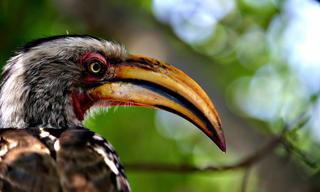
Kruger National Park is an incredible destination offering unique safari experiences year-round. While each season has its highlights, there are a few key factors to consider when planning your visit. The optimal time for game viewing is during the Dry Season from May to September when wildlife congregates around sparse water sources. For lush scenery and newborn animals, visit during the Wet Season between November and March. Pay attention to the crowds - July and August are the busy peak months. And don't forget to take precautions against malaria, especially during the wet summer months when risk is highest.
Whenever you choose to go, Kruger's outstanding wildlife and diverse ecosystems will amaze you. As one of Africa's premier safari parks, you simply can't go wrong with a trip to this natural wonderland. Just be sure to plan and research the best season to meet your interests. With careful preparation, your time in Kruger will undoubtedly be an unforgettable adventure exploring wild Africa at its best.
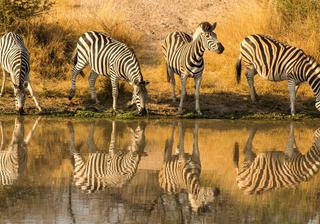
Wondering when to visit? Take a look at this guide on the First Time Visitors Guide to Kruger
Take a look at our Luxury Kruger and Mozambique Honeymoon
Looking for some more inspiration? Take a look at our best safari holidays ideas , our favourite family safaris , our big five safari guide or our top African safari honeymoon suggestions .
Our favourite tailor made trip ideas for Kruger National Park
More unique holidays for 2024

Classic Cape, Kruger and Vic Falls Experience
- Victoria Falls

Cape Town, Kruger and Mauritius Honeymoon

Self-Drive Kruger & Mozambique Adventure
- Panorama Route
- Kruger Park

Luxury Kruger and Mozambique Honeymoon
- Sabi Sand Wildtuin
- Benguerra Island
Speak to one of our experts today.
Start planning your next holiday.
Call an expert on
01768 603 715
Plan with an expert
Have a look at our original holiday experiences and then contact us with your brief, or call 01768 603 715
A tailor-made itinerary just for you
Our experts will send you a detailed holiday itinerary specified to your desires. It's our service promise to you.
Value guarantee
Tailor-made doesn't mean expensive! Ask about our price promise and book with financial security.
Looking for more inspiration?
Read about unique holiday ideas on our blog

Travellers Tales: Three Private Reserves in Greater Kruger
Alistair visit three private game reserves in Greater Kruger and shares his experiences, and where to stay.

Where to find Leopards in Zambia
Best parks in Zambia for spotting these beautiful big cats
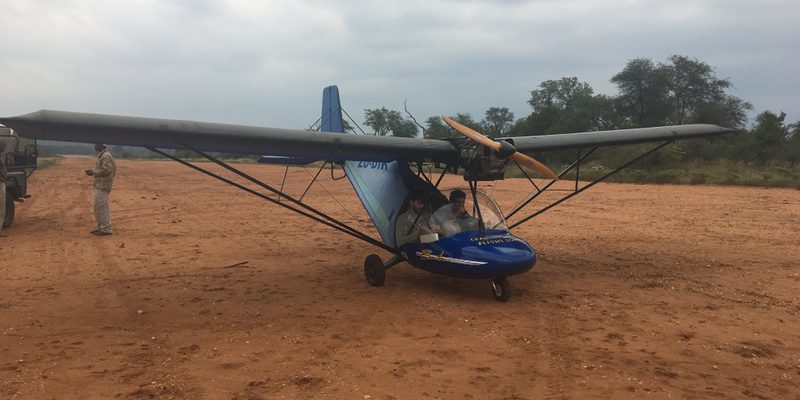
Mother & Son Safari in South Africa
Susan & Will’s Sleep Out Deck & Microlight Flight Adventure

Malaria-free Safaris
Want to go on safari but worried about malaria? Here are some locations you can go without any fear!
Thank you for making an enquiry
Our travel experts will be in touch soon. Feel free to call us on 01768 603 715.
Start planning your next holiday
Give us a call on 01768 603 715 or fill in the form below and we’ll be in touch.
Tell us about you...
Tell us about your trip….
Please enter your comments.
- All Tailor Made Safaris
- Kruger National Park
- Okavango Delta
- Gorilla Trekking
- Safaris with Frank
- Republic of the Congo
- South Africa
- All Set Departures
- All Set Departures by Date
- Horse Safaris
- Photographic Safaris
- Unique Safaris
- Year-round Safaris
- Botswana Mobile Safaris
- Volunteering
- View all Destinations: Interactive Map
- Mobile Safaris
- Gorillas & Chimps
- Walking Safaris
- Horse Back Safaris
- All Training Courses
- All Training Courses by Date
- Professional Courses
- Short Courses
- Special Courses
- Training Camps
- Field Guide Training FAQ’s
- Accommodation
- When to Travel
- Frank’s Top 5
Who is Travelling
- First Time to Africa
- Specials & Promotions
- Cost of a Safari
- Travel Info
- Why Book with Us
- Sustainability
- Our Partners
- Give Power to Ride 4 Woman
- Guest Reviews
- Price Guarantee

Tailor Made Safaris
Popular safaris, east & central africa, southern africa, set departures, top destinations, indian ocean islands, where to safari in april, "april is a great time to travel in africa, you just need to choose your destination with care", enquire now.
April in southern Africa is known as the shoulder season. It is a great time of year to travel as you’ll get the best of both worlds – the lush beauty of the wet season is still evident, but you won’t experience the rain and the heat. Keep in mind that certain areas can get busy during the school holidays and Easter.
In South Africa , it is autumn in the Cape with temperatures cooling from previous months. In general, the days are still nice and warm, but the evenings and mornings are chilly. April is undoubtedly one of the best months for a safari in South Africa, the weather is mild in the Kruger National Park and the lack of rain and drying vegetation makes for fantastic game viewing.
Botswana is a fantastic destination in the shoulder season as its still relatively quiet, prices remain competitive and the weather is great. Large herds of elephant are beginning to congregate around the Chobe River, and the Delta’s waters are on the rise marking the start of great boat and mokoro (traditional dugout canoe) activities.
In the Makgadikgadi Pans and the Kalahari , there’s still a good carpet of lush green grass, but elements of the magnificent and iconic parched desert are starting to make themselves visible too. The annual zebra migration from the Makgadikgadi Pans to the Boteti River starts during this time and large herds can be seen moving through the area.
During April the Zambezi River is starting to flood and Victoria Falls is at its peak, both from Livingstone and Victoria Falls Town. The mighty waterfall is in full flood with enormous clouds of spray rising up to the sky, making for a phenomenal sight. It’s high-water season on the Zambezi so there is a wide range of adrenalin activities available for the adventurous at heart.
April sees the start of the big rains in east Africa and travelling in some areas can become challenging. The herds of the Serengeti ecosystem are now on the long grass plains of the south western section of the park, making their way north to the Grumeti River.
The table below indicates the locations which we rate as the best and good in April

Where to go in April
Ready for an adventure lets talk.
Contact SAFARI FRANK to get started on your safari of a lifetime!
Our partners in Africa will make your dream trip, a trip to never forget
[email protected] +1 (646) 5025364

Developed by Viewport / WordPress Guys
Quick Links
- COVID SAFE Safaris
- How much does a safari cost?
- Specials and Promotions
- GivePower to Ride 4 a Woman
- The Wildebeest Migration
- The Okavango Delta
- Safari Frank UK
- Safari Frank AU
Our Safaris
- All Safaris
- Set Departure Safaris
- Safari Trip Ideas
- Horseback Safaris
- Selfdrive Safaris
- Couples and Honeymooners
- Family Safari
- Group of Friends
- Solo Travellers
Destinations
Newsletter signup.
" * " indicates required fields
Privacy Overview
Your Specialists in Kruger Park Safaris
- Umbhaba Specials
- 3 Day Best of Kruger Safari
- Umbhaba Accommodation
- 4 Day Kruger and Panorama Safari
- 5 Day Kruger and Panorama Safari
- Kruger and Panorama
- Group Open Vehicle Safaris
- Full Day Cape Winelands Tour
- Full Day Cape Canopy Tour
- Full Day Walk to Freedom Tour
- Full Day Cape Point & Peninsula Tour
- 3 Day Best of Kruger Private Safari
- 4 Day Kruger and Panorama Private Safari
- 5 Day Kruger and Panorama Private Safari
- Private Vehicle Full Day Safaris
- Private Vehicle Morning Safaris
- Private Vehicle Afternoon Safaris
- General FAQ’s
- Accommodation Kruger Park
- Image Gallery
- Video Gallery
- Our Open Vehicle
- Kruger National Park News
- Kruger Park Mammal Guide
- Kruger Park Bird Guide
- History of the Kruger Park
- Morning Safaris
- Afternoon Safaris
- Full Day Safari
- Full Day Panorama Tour
- Half Day Soweto Tour
- Full Day Soweto Bicycle Tour
4 Day Best of Kruger Safari
Adding item to wishlist requires an account, already a member.
Username or E-mail
Forget Password?
Don't have an account? Create one.
This exciting and comprehensive all-inclusive safari package includes transfers, a night safari on a private concession within Kruger, full day and morning open vehicle safaris, and top-notch accommodation complete with traditional meals at prominent lodges where guests enjoy the added conveniences of Wi-Fi and air-conditioning in all rooms.
95% of Kurt Safari’s clients manage to see the Big 5 on a 4 day safari.
What’s Included
Licensed and Professional Safari Guides 1 Sunset Safari / Night safari 2 Full-day open vehicle safari in the Kruger National Park. 1 Half-day open vehicle morning safari in the Kruger National Park. Transfers to & from Johannesburg O.R. Tambo Airport. 3 Nights’ Accommodation in Hazyview. 3 Breakfasts & 3 Dinners – as per itinerary. 4 Days’ Conservation levies & entry fees. 1 Lunch on Day 1 Mineral waters on all drives
What’s Excluded
All Meals & Beverages not specified in Itinerary Items of personal nature Gratuities
Tour Schedule

Departure & Return Location
06:30 am – 06:45 am – Clients will be collected from lodges within a 5 km radius of OR Tambo International Airport in Johannesburg. 06:45 am – 07:00 am – Clients will be collected from the Shuttle and Bus Terminal at the OR Tambo International Airport. We depart at 7:15 am. Please see the Map below to see our pickup points.
Transport to the Airport is available via the modern Gautrain or Uber.
Clients can also fly directly into Skukuza Airport within the Kruger, or to Kruger Mpumalanga International Airport where they will be collected by a Kurt Safari Guide at no additional cost.
www.flyairlink.com
1st November 2023 – 31st October 2024 R17 000.00 PP Sharing / R 18 260.00 Single supplement.
1st November 2024 – 31st October 2025 R18 890.00 PP sharing / R20 090.00 Single supplement
Children 11 years and below sharing with Parents less 50% Min age 8 years – Min 2 clients.
Day 1: Transfer to Johannesburg & Sunset safari
(Lunch & Dinner included)
Guests will be collected from various lodges and hotels within a 5 km radius of the OR Tambo International Airport between 6:30 am and 6:45 am, and from the OR Tambo International Airport shuttle and bus terminal between 6:45 and 7:00 am. We depart at 7:15 am.
Clients can alternatively fly directly into Skukuza in the Kruger National Park, or they can fly to Kruger Mpumalanga International Airports and be collected by a Kurt Safari Guide at no additional cost.
Please confirm your pickup details the day before the tour, by sending an email to [email protected] . Please note these are shared departures. We will travel directly to your lodge in Hazyview and arrive between 11:30 am – 12:00 pm.
Guests will have time to relax, unpack and enjoy a light lunch. There will also be more than enough time to enjoy a swim or a walk around the beautiful lodge and its walking trails. We depart from the lodge at around 15:45 pm for a spectacular Sunset / Night Safari in the Kruger National Park. Since the sun sets earlier in the winter months, clients will have a longer Night Safari, and clients travelling in the summer will enjoy beautiful sunsets while on safari. We return to the lodge at around 20:00 pm for a hearty dinner, and a good night’s rest.

Day 2: Full Day open vehicle safari in the Kruger National Park
(Breakfast & Dinner included- lunch at own account)
Mpumalanga means the place of the rising sun and is the first province in South Africa to see the sun rise and all of the best Kruger National Park safaris start before sun is up. This is the ideal time of day to enter the park, as it is still cool outside. Not knowing what to expect, after a short drive to the park, we enter the gates and your guide will take you to some of the best areas of the park to find the wildlife including the Big 5 and plains game. This is also the finest time of the day to see predators.
The lodge will arrange breakfast packs and your guide will stop about 3 hours into the safari for a breakfast and bathroom break, and chance to get coffee. We then continue the safari. The beautiful Kruger Park offers a variety of eco zones and area is home to different types of wildlife. We visit rivers and watering holes as well as Plains and Bushveld regions, ensuring that our guests get to see a wide range of animals.
After more time exploring, we stop for lunch at a rest camp. This meal will be on your own account. While in the rest camp you will have time to do some curio shopping or enjoy a cold beer! The guide will then continue with the safari, taking the roads that will lead back to your lodge. We arrive at around 15:30 pm – 16:00 pm, giving you enough time to relax, swim and have a great dinner.

Day 3: Full Day open vehicle safari in the Kruger National Park
Today we depart the lodge before sunrise. This is the best part of the day to travel into the Kruger National Park, as the day is not yet hot. Not knowing what to expect, after a short drive to the park, we enter the park gates and your guide will take you into those areas that are best known for their wildlife including the Big 5 and plains game. This is also the finest time of the day to see predators. No safari is ever the same so each day there is something new to see.
The lodge will arrange breakfast packs for you and after about 3 hours of driving in the park, your guide will stop so that you can eat, have a bathroom break, and get a cup of coffee. After your break, we continue on your safari, where you will visit some of the parks different eco zones, each of which is home to different types of wildlife. Guides will cover different parts of the park each day.
We then stop for lunch at a rest camp. There are various rest camps in the park. Your guide will choose the day’s rest camp and the chances are that they will choose a different stop then the day before. While in the rest camp there will be time to do some curio shopping or to enjoy a cold beer! The guide will then continue with the safari, heading back towards the lodge. We arrive at around 15:30 – 16:00 pm, with enough time to relax, swim and have a great dinner.

DAY 4: Last Morning safari and Transfer back to Johannesburg
(Breakfast included, Lunch on own account)
On the final day, we again depart from the lodge before sunrise. On this morning, your guide will focus on finding the animals we could not find on the first 2 safaris and we also hope to see lion and leopard as they are most active in the early mornings. The Kruger National Park has 148 mammal species and over 500 bird species, your guide will help you find you as many as possible during your 4 day Kruger Park safari.
No two safaris are ever the same and Kruger has a huge network of roads to choose from. Guides will safari in different areas of the park in different seasons, giving clients a chance to see more sightings.
After a short breakfast and coffee stop, we will continue with the safari, returning to the lodge at around 12 pm. Once back at the lodge, you say goodbye to your guide and freshen up before the journey back to Johannesburg.
Clients are collected by the shuttle at around 12:30 pm, and we return to Johannesburg’s OR Tambo International Airport shuttle terminal or to lodges within a 5 km radius, arriving between 17:00 – 18:00 pm
NB: Clients flying out of OR Tambo International on the last day of their trip should please not book they flight any earlier than 20:00 pm for Domestic Flights and 21:00 pm for International Flights.
Please download the attached PDF.
Accommodation
Kurt Safari uses two 4-star lodges in Hazyview, Umbhaba Eco Lodge and if fully booked then Sanbonani Resort Hotel, both are positioned within a convenient 15-minute drive to Phabeni Gate, the main gate of the Kruger National Park. Both lodges offer beautiful accommodation in tranquil gardens, with all the expected amenities. At Kurt Safari, our commitment to ensuring top-notch service extends across all our tours and safaris, promising our clients an experience of unparalleled high quality. Each room offers en-suite facilities, WI-FI, air-conditioning, and traditional meals, guaranteeing a secure and comfortable 4-star experience for our valued clients.
Umbhaba Eco Lodge

Sanbonani Resort Hotel

Swimming Pool In House Bar Air Contitioned Rooms Free Wifi Private Balconies Kruger Park Safaris Housekeeping Wall Safe
Related Tours

2 Night Self-Drive Umbhaba Eco Lodge Safari

3 Night Self-Drive Umbhaba Eco Lodge Safari
Proceed booking, or continue as guest.

COMMENTS
Dec. Excellent. Good. Fair. Poor. The best time to visit Kruger National Park is during the dry winter months from May to September. At this time, the bush thins out, and animals congregate around waterholes and rivers. Conditions tend to get better as winter progresses, and September is particularly lovely since the mornings are less chilly ...
Safari Enquiry. April brings autumn to the Kruger, and the vegetation in the park gradually fades from lush bushveld to a dry brown and yellow palette. Rainfall decreases, but the occasional afternoon thundershower still occurs. Daytime temperatures remain hot while nights are getting cooler but not cold. For the best probability of seeing ...
The Kruger has two distinct seasons, the dry winter from May to October, and the summer rainy season from November to April. However, every day in the Kruger National Park is a one-of-a-kind safari adventure. Month by Month Guide for Travelling to the Kruger National Park: Visiting the Kruger National Park from January to March
Whatever time you decide to safari in the Kruger National Park - you will not be disappointed! ... April. This is Kruger Park's autumn period and the vegetation starts changing from thick lush green bush to a slightly sparser browning bush. The temperatures start cooling down at night but daytime is still warm. Scattered thunder showers can be ...
Bottled water for the hot summers days and blankets and ponchos for…. 25. Kruger Park Safari: Guided Day Tour from Nelspruit. Make the best of your stay in South Africa and embark on the Kruger Park Safari: Guided Day Tour from Nelspruit. You will…. 26. Safari Game Drive in the Greater Kruger out of Hoedspruit.
Safari Travel Planner. Safari Enquiry. Extending over a similar area to Wales, Kruger National Park is a 20,000km2 (7,722 square mile) national park that supports more than 160 mammal and 500 bird species, including substantial populations of all the Big Five. The park is an important stronghold for several of Africa's most iconic large mammals.
December. The best time to visit Kruger National Park is during South Africa's dry season, which typically falls between April and September. Dry season is the best time to visit Kruger National Park due to the lovely temperatures that occur during this time. Temperatures can range from the 40s F in the evenings to the mid-80s F during the day.
Posted on Wed September 6, 2023. Kruger National Park in Africa offers a captivating safari adventure with its diverse wildlife. The guide covers two main seasons: the wet season (November to April) and the dry season (May to October). The wet season boasts lush landscapes and abundant wildlife but can have challenging road conditions and hot ...
April in the Kruger national Park. April is the beginning of autumn in Kruger National Park and the weather is generally warm and pleasant. The temperatures are cooler than in the hot summer months, making it more comfortable for visitors to explore the park. Considering April is the end of the rainy season, it is a great a great time to visit ...
South Africa's Cape region mostly experiences wonderful weather in April and you can easily combine a trip here with a safari in one of the reserves in the Garden Route or Kruger National Park. Zimbabwe. Zambia. South Africa. Uganda. Tanzania. Rwanda. →. Namibia.
There's a lot going down if you take an African safari in April 2022 - it's a great time to descend into Ngorongoro, or watch as Victoria Falls tumbles. Enquire Now +27 21 100 3274. TRIP FINDER; ... Greater Kruger safari in April. It's mid-autumn now in the Greater Kruger area, which means the summer rains have been replaced by only the ...
Our Kruger Park trip report is the story of our 7 day safari to the game reserve in April 2012. ... We were driven around the nearby roads by a Kruger Park ranger in a special safari vehicle with open sides. As the sun began to set, nocturnal animals started to come out. We saw an owl on the road, African wild cats and thick-knee birds.
The best time of day to visit the Kruger National Park. We also get asked about the best time of day for a safari. In our opinion, the best time of day to visit the Kruger is as early as possible in the morning or at sunset. The gates to the Kruger National Park open at 5.30 so you should have your park ticket and be ready to enter at 5.30.
April is an outlier month as rainfall decreases significantly, but the rivers and waterholes remain plentiful, while the bush is still dense. We've been on safari in Kruger during this month and had incredible wildlife sightings! ... adding destinations like Botswana, Cape Town and Victoria Falls to your Kruger safari is the perfect combo ...
If you join an independent guide for a drive, or self-drive, you'll have to pay the Kruger Park entrance fees. As of January 2020, these are: International visitors: R400 per adult per day, and R200 per child per day. This is about £20/USD27 per day, or £10/USD14 per day.
The 4-day Budget Kruger Park Safari is easy on your budget and big on game viewing. This small group, fully-guided safari in Kruger National Park overnights inside the park with scheduled departures from Johannesburg or Nelspruit. Custom departure dates may be arranged (additional cost applies). Book early to avoid disappointment!
3. 5 Day Katekani Lodge Kruger National Park Safari. • Sunset drive • Bush barbeque • 4 hour morning Big Five bush walk • 3 hour game drive at Motlala Game Reserve…. 4. Full-Day Kruger Park Safari from Nelspruit, Whiteriver or Hazyview.
Looking for advise on private camp stay in Kruger Jan 2025 8:12 am; Getting to Kruger National Park using shuttles/uber?? Jun 21, 2024; Lodge/Safari with pay 2N get 3N stay Jun 14, 2024; Marloth Park or Komatipoort? Jun 14, 2024; Places to stay and southern Kruger itinerary Jun 11, 2024; Timbavati accommodations: this or that? Jun 10, 2024
This is an excellent time to visit Kruger National Park, with superb wildlife viewing, pleasant weather, and fewer crowds. Here are some highlights to look forward to during a visit at this time of year: Optimal Wildlife Viewing: May and June are considered some of the best months for wildlife viewing in the Kruger area.
It is easy to see why the Kruger National Park is consistently rated as one of the top safari destinations in Africa. The Kruger's summer rains arrive from about November, peak in January and February, and end around April.During this low or Green Season, the Kruger is transformed into a beautiful, verdant emerald landscape and it makes for incredible photography.
Discover the unforgettable beauty of Africa on our 5-day hiking safari in the Northern Kruger National Park. Step into the footsteps of African wildlife and explore the fascinating wonders of Pafuri, a jewel in the northernmost part of the park. This untouched wilderness entices with its variety of breathtaking landscapes and magical wildlife encounters, making it one of our preferred ...
April is undoubtedly one of the best months for a safari in South Africa, the weather is mild in the Kruger National Park and the lack of rain and drying vegetation makes for fantastic game viewing. Botswana is a fantastic destination in the shoulder season as its still relatively quiet, prices remain competitive and the weather is great.
Rates. R17 000.00 PP Sharing / R 18 260.00 Single supplement. Min age 8 years - Min 2 clients. The Kurt Safari Co offers affordable, private Kruger Park Safaris and tours to the renowned Kruger National Park in South Africa. The 4 Day Best of Kruger Safari is one of the best ways to explore the beautiful Kruger.